COVID-19 THE DAMAGES
RETIREMENT BENEFITS

COUNSELLING
21 QUESTIONS TO ASK AN ADVISER SIDE HUSTLES
TRACK YOUR FORTUNE WITH OUR DATABANK VOLUME 83 • 2 nd QUARTER 2020 WWW.PERSFIN.CO.ZA
We provide a complete advertising solution to reach subscribed property buyers
Access the following advertising platforms under one account:
• Property Portal Online Listings

• Banner Slots

• Featured Agent Slots
• Digital Magazine
• Newspapers
• Cape Community Newspapers
• Brand Editorial Content
• Social Media Reach
• Weekly Newsletter
We also do HOME LOANS A mortgage origination solution to assist your buyers, so send your clients our way and you can advertise your listings on our portal for… FREE

Contact us to package the right deal for you help@property360.co.za
interest rates from all major banks and speedy approvals
Best
COVER STORY
Short, sharp shock or another Great Depression? Will economies bounce back relatively quickly once Covid-19 is brought under control, or will the damage be so severe that it takes years to recover?

10
FEATURES
16 Your employment contract in a crisis
Can your employer invoke a “force majeure” clause to retrench you?
18 Something on the side The things people do to supplement their income.
23 First-quarter bloodbath
Don’t make rash decisions after seeing the unit trust results.
24 Joining a medical scheme in a crisis Restrictions and penalties that schemes may inflict on you.
26 IMF aid: help or hindrance?
Why seeking IMF assistance may be to our benefit.
30 21 questions to ask a financial adviser
Now more than ever, you need an adviser you can trust.
34 Why retirement benefits counselling is good for you
Regulations demand that you are counselled on your savings.
39 Boutique firm is Manager of the Year
Raging Bull Awards for unit trust performance to the end of 2019.
46 Selling property properly
A new Act directed at estate agents will benefit you, the consumer.
50 Accrual: beware the pitfalls
Each marital regime has its drawbacks and this one is no exception.
52 A novel way of investing offshore
The ins and outs of actively managed certificates.
REGULARS
4 Upfront An unforeseen catastrophe
6 Your letters Readers’ queries answered by experts
8 Book review Our pick of financial books
54 Fund focus The Mi-Plan IP Global Macro Fund
56 On the contrary Keeping perspective in times of fear
DATABANK
57 A list of the adjudicators and the ombuds who can assist you with your complaints, followed by the unit trust quarterly results, tax rates and annuity rates
3 PERSONAL FINANCE | 2 ND QUARTER 2020
MARTIN HESSE
AN UNFORESEEN CATASTROPHE
Five years ago, Bill Gates, in a now-famous TED talk, warned of the dangers of a worldwide pandemic. He was not the only one who foresaw such a catastrophe, but for most people, including world leaders, a pandemic of the magnitude of Covid-19 was nowhere on the radar. A small outbreak of Ebola or bird flu, perhaps, which could quickly be contained, but nothing like this, which claimed a quarter of a million lives (at least, as figures are probably understated) within four months.
Humans have spent trillions over the years on defence against other humans. But precious little has funded the fight against an invisible common enemy, potentially more lethal than any human threat save a nuclear war.
More worrying than the disease itself is its economic impact. Companies that, before the crisis, were only just surviving or had high levels of debt, have been knocked hard. Many will go under.
While the unemployment figures coming out of the United States are scary, the developing world is experiencing a humanitarian crisis of unprecedented proportions, with millions facing starvation.
Are we entering the Great Depression of the 21st Century? Let’s not forget that World War 2 was a direct consequence of the last one.
In this edition we examine possible outcomes, but we also offer practical advice on a range of pandemic-related issues. Can your employer rely on a “force majeure” clause to retrench you? How easy is it to become a member of a medical scheme in a crisis? What do you do after seeing your unit trust values plummet? What questions should you ask to establish whether you can trust a financial adviser, at a time when you need one the most?
Also in this information-packed digital-only edition, we explore the implications for consumers of the new Property Practitioners Act, why recently-legislated retirement benefits counselling is likely to drive better retirement outcomes, and what you should do about your life policies if you are moving overseas, temporarily or permanently.
VOLUME 83
2nd QUARTER 2020
An Independent Media (Pty) Ltd publication
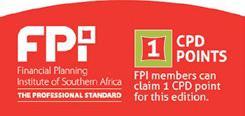
Editor
ANA Publishing CEO
ANA Publishing CFO

Head of Production
Head of Design Designers
Martin Hesse martin.hesse@inl.co.za

Vasantha Angamuthu
Valentine Dzvova
Mugamad Jacobs
Matthew Naudé Rowan Abrahams Thabang Boshielo
ADVERTISING
Kyle Villett kyle.Villet@africannewsagency.com
Daniel Kgaladi daniel.kgaladi@inl.co.za
OFFICE MANAGER
Caryn Wessels caryn.wessels@inl.co.za
IMAGERY Shutterstock, Freepik.com
INDEPENDENT MEDIA BOARD OF DIRECTORS
Dr. Mohammed Iqbal Survé, Takudzwa T. Hove, Aziza B. Amod, Ismet Amod, Yuexing Wang, Jinghua Dong
EDITORIAL ENQUIRIES
Tel: 021 488 4187
Physical address: Fourth floor, Newspaper House, 122 St George’s Mall, Cape Town, 8001 Postal address: PO Box 56, Cape Town, 8000
Personal Finance magazine (ISSN 1562-3750) is published by the proprietors, Independent Media (Pty) Ltd, Star Building, 47 Sauer Street, Johannesburg, 2001 All products appearing in Personal Finance are available and all prices are correct at time of print, subject to change.
A recent study shows that 64% of South African women are underinsured*. As a professional Financial Adviser, you understand that it’s vital for South African women to acquire the best comprehensive cover to protect and provide for their families, should things not go according to plan.

Liberty’s Lifestyle Protector includes critical illness cover, which provides comprehensive cover for over 150 conditions related to critical illness and trauma.


Consider Liberty’s Lifestyle Protector Range and give your clients more than life cover – give them cover for life.
For more details about benefits, definitions, guarantees, fees, tax, limitations, charges, premiums or other conditions and associated risks, visit www.liberty.co.za






Now, she runs the team. LIBERTY LIFESTYLE PROTECTOR *Source: The
of Women in South Africa: A Flux
Report, 2019. Liberty Group Ltd is the Insurer of Lifestyle
Authorised
Terms and
apply. TBWA\HUNT\LASCARIS 923765
AT 25, CHANCES ARE YOUR CLIENT WAS THE ONLY WOMAN ON HER TEAM.
Worth
Trend
Protector and an
Financial Services Provider (no. 2409).
Conditions
YOUR LETTERS
RA TAX BREAK
I am 67 years old and in retirement. Can I still take advantage of the 27.5 percent allowance as a tax deduction? How and when will I have access to the funds so acquired? – Name withheld
Dulcie Weyks, a financial adviser from PSG Wealth Pretoria Irene Sovereign Drive, replies: Retirement annuity (RA) payments do not have an age limit. Contributions can be claimed for tax at any age and tax certificates will be issued by the RA provider.
The 27.5 percent allowance is based on your annual taxable income (limited to R350 000). This can include income from various sources, including income derived from annuities or rental properties.
Please take note of liquidity restrictions that apply to RAs as indicated below.
You are allowed access to your RA any time from the age of 55 and onwards. The following options are available once you formally retire from the product:
• If the fund balance is below R247 500, the full amount may be withdrawn as a lump sum. This will be subject to tax, which is explained below.
• If the fund balance is more than R247 500, up to one-third of the investment may be withdrawn as a lump sum. The remaining two-thirds must be used to purchase a compulsory annuity for pension income.
• Should you not have a need to withdraw a lump sum, the full amount may be used to purchase the annuity.
Any lump sum withdrawal will be taxed according to the special retirement fund lump sum benefit table. (See table on page 71.)
Currently the first R500 000 is tax-free. The R500 000 could, however, be reduced as a result of various lump sums or severance benefits you’ve received in the past. Tax on lump-sum benefits are calculated cumulatively over your lifetime and will be aggregated. The tax is calculated on the actual lump sum taken and not the fund value.
The pension that you would receive from the compulsory annuity is deemed to be normal income. This, together with any other income
you earn, will be subject to normal income tax. There are a variety of compulsory annuity options. I would suggest that you consult a qualified financial adviser to assist you with the various choices and any impact this may have on your personal situation.
VOLATILITY EXPLAINED
I have read a lot recently about volatility as an indicator in stock markets, especially with the COVID-19 virus making headlines. But I don’t really understand it? Can you explain? – Name withheld
Schalk Louw, a wealth manager at PSG Wealth Old Oak replies:
Volatility is not a directional indicator, but rather a measure used to express changes in pricing as a percentage. If share A’s price rises from 100c to 101c, it indicates a positive change of one percent. If share B’s price moves from 200c to 198c, it is seen as a negative change of one percent. The volatility ratio (VR) of both these shares is the same (one percent), therefore the VR of share A is equal to that of share B.
So, volatility doesn’t tell you whether the market is heading up or down, but the VR can be used to determine the risk of a particular investment. When an investment in a particular share, for example, has a VR of 20, it means that the investment has already moved up and down by 20 percent during the period in question. This means that if you do decide to buy this share, you have an opportunity to grow your investment by 20 percent, but you also risk losing 20 percent of its value.
Emotions play a big role in decision-making during times of high volatility, and investors tend to force markets to levels well below fair value. This presents opportunities for future growth. In times of low volatility, on the other hand, investors are so confident that the market will not drop that they force it upwards – a lot like the market has behaved during the last 12 months. An unexpected event, such as the Covid-19 outbreak, can turn this on its head. Before making any decisions during times of fear or heightened emotions, be sure to check in with your financial adviser.
4







Wealth Asset Management Insure We never stop short in pursuing your long-term success. Affiliates of the PSG Konsult Group are authorised financial services providers. Please visit psg.co.za to find an adviser near you. For more information contact your financial adviser, call 0800 600 168 or email assetmanagement@psg.co.za Seeing the bigger picture gives you the advantage. PUBLICISMACHINE 908713/E
PRACTICAL GUIDE TO BUY-TO-LET
Financial Freedom Through Property
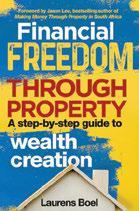
Author: Laurens Boel
Publisher: Zebra Press (Penguin Random House)
Retail price: R220
The investment world is divided into people who believe property (in the form of physical property from which you earn a rental income, as opposed to listed property) is a worthwhile investment and those who believe you’ll do better investing in the stock market. Most financial advisers I know are in the latter camp, but the proponents of property investing are a passionate bunch whose arguments are compelling. Their guru is Robert Kiyosaki, author of Rich Dad, Poor Dad and subsequent books, whose property investing programme is hugely popular globally.
The underlying premise is very appealing: you buy an apartment or house and let it out, using the rental to pay off the bond. Once the bond is paid off, you have a steady, never-ending, inflation-linked income stream, and the value of the property appreciates over time.
But it’s not that simple or easy. For starters, being a landlord is a demanding job – the buy-to-let route is not for armchair investors. And then there are the costs and issues that tend to cloud this rosy picture: maintenance, bad tenants, rates and levies, insurance, conveyancing and transfer costs, regulations regarding the rights of tenants, red tape. There’s also the risk of a property losing value –something that has happened rarely in the past in South Africa, but which may be more prevalent in the future owing to our weak economy.
If you are keen to venture into property investing, Laurens Boel’s book provides an excellent guide. You need to be determined and dedicated, and prepared to learn as you go along, as you’ll probably make some mistakes initially. This book, which is aimed at the lay reader and written in an easy-to-understand, conversational style, provides valuable insights and tricks of the trade to put you on the right path and help minimise costly mistakes.
Buy-to-let investing is not for the faint-hearted, but if you are savvy and work hard, the rewards can be great. To reiterate: it’s not a passive way of earning an income.
– Martin Hesse
ANALYSING INEQUALITY
Capital and Ideology
Author: Thomas Piketty
Publisher: Belknap/Harvard
Retail price: R625
This is French economist Thomas Piketty’s second book on inequality, the first being the widely read and influential Capital in the 21st Century, published in 2013. It expands on the first by delving into history and looking at political regimes that have either exacerbated the gap between rich and poor or had some success in reducing that gap.
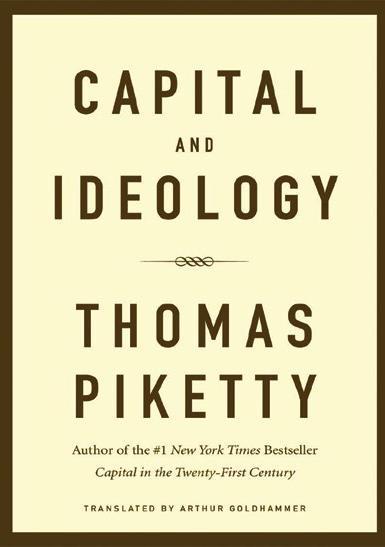
YOUR BUSINESS AS AN ASSET OF VALUE
Sweat, Scale, Sell
 Author: Pavlo Phitidis
Publisher: Macmillan
Author: Pavlo Phitidis
Publisher: Macmillan
Retail price: R290
It’s fair to say that there are two types of small business owners. The first group comprises those who have had careers in the corporate world and who have left this secure environment to start something on their own. They may remain in a field related to their career or they may branch off in an unrelated direction, for which they may have long held a passion - for example, an accountant starting a boutique winery. This group includes those “reluctant entrepreneurs” who have been forced out of the corporate world through retrenchment or compulsory retirement, who need to do something on their own to continue earning a living.
The second group comprises the true entrepreneurs. These are the guys who mostly don’t have a corporate background and may not even have much of a formal tertiary education. They probably started young, by selling sweets or marbles to their school buddies, and have an inherent knack for business and for finding “gaps in the market”, often through innovation and disruption. The nature of the business is not as important to them as the profits they can make from it,
although this is not necessarily to say that they are out to make a quick buck. They are street smart and market smart.
Pavlo Phitidis’s book is directed at both groups, though it may find more traction in the second. It is about growing a business to become bigger than yourself, to become a valuable, marketable asset in its own right.
Phitidis says an astonishing 95 percent of businesses are not sold; they simply close their doors. Many go under financially, but many close because the owner has been the sole generator of business, and when he or she dies or retires, there is no-one to step in to keep the business operating.
The author has enormous experience in building businesses and coaching entrepreneurs, and hosts the TV show The Growth Engines on BDTV. His book shares stories and advice on what business owners can do to grow their businesses – for example, by having a succession plan in place.
While many businesses will die along with their owners, the more that take on a life of their own, the greater the employment opportunities will be and the more South Africa will prosper.
– Martin Hesse
Piketty argues that the roots of inequality are ideological. It is a society’s political, educational and legal systems that determine the nature of its economy and how wealth generated by economic activity is distributed among the population. He also states that the underlying ideology governing an economy seeks to justify why the wealth is distributed in the way it is. Unlike Marx, who argued that there is a set progression from feudalism to capitalism to socialism, Piketty maintains that, at certain critical points, a society can choose among a number of different pathways, some of which will reduce inequality and others that will increase it. And it is these “choices” that different countries have made in their history that form the focus of this hefty 1000-page tome: from slavery and colonialism to Russia’s failed experiment with communism, China’s post-communist economy (which has uplifted the poor more successfully than India has) and Sweden’s socialist democracy – one of the most equitable economies in the world.
It’s a fascinating study, and although its academic detail may become a little overbearing for a more casual reader, the language, translated into English from the original French by Arthur Goldhammer, is not overly dense or abstruse.
You may not agree with everything Piketty says, or his suggestions to reduce inequality (through higher taxes but also through better education). But it is bound to stimulate debate about a more equitable future for mankind, particularly now, at the height of an economic crisis that may well be a turning point in our history. – Martin Hesse
BOOK WINNERS
Congratulations to the winners of the 1st-quarter book giveaway. Beauty Monenebe, Dave Porter, Ian Siddall and Alan Schoeman will each receive a copy of You’re Not Broke, You’re Pre-Rich by Mapalo Makhu, published by Zebra Press.
WEALTH•INVESTMENT•PROSPERITY PERSONAL FINANCE | 2 nd QUARTER 2020 9
SHORT, SHARP SHOCK OR ANOTHER GREAT DEPRESSION?
How extreme the effects of the Covid-19 pandemic will be on the global and local economies depends on how long it takes to bring the virus under control and how soon thereafter people can begin working and consuming again.


THE MARKET downturn caused by the Covid-19 pandemic will be the worst downturn in our history. The only time South Africa faced a similar crisis was between 1918 and 1920 when the Spanish Flu ravaged the country, but in those days we did not have a statistical agency that compiled national accounts. That is why this downturn will go down as the worst so far, as it will be deeper than the recessions of 1983, 1992 or 2009.
There are also no gross domestic product records for the Great Depression of the 1930s. As a result of the United Kingdom and other countries going off the gold standard in the early 1930s, South Africa’s gold mining industry boomed, partially offsetting the decline in exports from other sectors. In the mid-1930s South Africa was buying the highest number of new cars per capita out of all the major countries.
Although this will be the worst downturn that South Africa has experienced, economists are also concerned about the recovery. To help them visualise the recovery, they have labeled the types of recoveries as “U”, “V”, “W” or “L”.
A U-recovery sees a sharp downturn lasting one quarter, then a stabilisation of, say, three quarters, before an upturn to the previous level. A V-recovery sees a sharp drop and then an equally sharp climb. A W-recovery consists of two Vs back-to-back, when the initial lockdown period is followed by a sharp recovery as people go back to work, but then a spike in coronavirus cases forces another lockdown. A L-recovery is what happens when so many businesses go bankrupt and individuals die that, when the crisis has passed, there are far fewer companies and people employed, while surviving companies may lack the necessary skilled labour force, as people with essential skills will have died.
It is to prevent an L-recovery scenario that governments, central banks and multilateral development financial

Helmo Preuss looks at different scenarios on how the crisis will play out.
institutions rushed to cut interest rates, while providing liquidity so that the financial system does not seize up as it did in 2008/9, while governments eased the purse strings so to provide support for businesses and individuals. That is why central banks around the world cut interest rates so many times since the outbreak of the novel coronavirus was first reported in January. They also injected trillions of dollars of liquidity into the financial system, launched a flurry of loan programmes for businesses
10 PERSONAL FINANCE | 2 nd QUARTER 2020
and bought bonds in liquidity management programmes to prevent a global recession from becoming a global depression.
The cost of the coronavirus pandemic could be as high as $4 trillion, or almost 5percent of global gross domestic product, according to the Asian Development Bank. The cost is a tradeoff between human lives and economic activity. A shorter containment period could limit the damage to $2 trillion, or 2.3 percent of world output. The estimate considers the immediate impact on tourism, consumption and investment. Remember that even during a time of a loss of revenue, debts still have to be serviced, which is why some banks have offered “repayment holidays” of a limited duration. At the end of last year, global debt surpassed $250 trillion, which is


more than 250 percent of the world’s GDP.
‘WARTIME’ DEFICITS
To compensate for this loss in revenue, government fiscal deficits will surge to levels only seen in wartime, as governments try to support businesses and individuals during the lockdown period and its recovery.
Morgan Stanley estimates that the US fiscal deficit will total at least $3.7 trillion in 2020, with an additional $3 trillion in

11 PERSONAL FINANCE | 2 nd QUARTER 2020
2021. It expects the fiscal deficit relative to the size of the economy could even approach 15 percent to 20 percent. Those are the kind of deficits last seen during World War 2.
President Donald Trump had bipartisan support for a new infrastructure spending bill worth $2 trillion, while the Fed launched a temporary lending facility allowing foreign central banks to convert their US Treasury holdings to dollars, as the coronavirus resulted in a shortage of US dollars.
The US dollar is used around the world for purchasing commodities, settling a large portion of international trade, and providing financing for companies between nations, and it accounts for roughly a third of inter-country financial flows. However, the usage of the dollar has exceeded the growth of the US economy and US money supply, which has led to a global US dollar shortage. This shortage becomes particularly acute during global economic slowdowns or recessions, such as in 2008, as during those times world trade declines, and commodity prices fall in US dollar terms.
When global trade slows down and commodity prices fall, the global dollar flows changes from a gushing river to a small trickle, so the $12 trillion worth of US dollar debts held outside the US, according to the Bank for International Settlements, suddenly become a lot harder to service thanks to a scarcity of dollars outside of the US.
In addition, foreigners own $40 trillion in US assets, which include government debt, corporate debt, equities, and real estate. Americans own just $29 trillion in foreign assets, so the US has a negative $11 trillion net international investment position, which is about half their $22 trillion economy.
The reason economists need to take this into consideration when constructing their economic scenarios is that foreigners have two ways to get US dollars when they really need them. They can participate in international trade and get dollars for their goods or services, or they can sell their US dollar-denominated assets. In normal times, foreigners choose
to trade, but during a global slowdown or recession, that trade dries up, so they have to resort to the second option. That is why in times of crisis all asset classes tend to fall together, whereas in normal times, safe havens such as gold and bonds gain when equities tank. So, when US dollar debts need servicing, they are forced to sell US assets to get dollars to service their debts. Central banks hold foreign-exchange reserves so that in times of illiquidity they can still service external obligations if necessary. That is why foreign exchange reserves also enter the risk calculation matrices of rating agencies such as S&P Global Ratings and Moody’s.
It is also one of the reasons why the US dollar tends to gain in value during recessions. International trade slows, dollar-denominated debts become an international problem, and everyone scrambles to get their hands on dollars. Emerging market currencies such as the rand lose in value relative to the US dollar.
LOCAL ECONOMY
Adrian Saville, the chief executive at Cannon Asset Managers said this year’s economic contraction was unprecedented.
“Financial modelling reveals that the South African economy could shrink as much as 5 percent in real terms this year, a figure that is unprecedented in recent times. By comparison, the economy shrunk by around two percent as a result of past crises in 1983, 1992 and 2009,” Saville said.
“Additionally, while revenue from personal income tax may remain relatively resilient in the near term, it is likely to fall throughout the rest of the fiscal year. VAT intakes will likewise dive off a cliff in March and April, with the possibility of a reasonable recovery thereafter, while corporate income tax levels will step down dramatically in line with economic growth. This Covid-19 fiscal gap means that the budget deficit will come under severe pressure this year. We had already penned in a deficit of 6.8 percent of GDP at the reading of the National Budget in February. Just four
weeks later, it looked like that figure could blow out into double digits.”.
President Cyril Ramaphosa ordered a national 21-day lockdown that started on March 27 as the containment measures announced by the South African government on March 15 had failed to “flatten the curve”, with South Africa reporting a larger number of cases than either Italy or China in the first 20 days since the first case was reported on March 5. South Africa has been far more aggressive in its containment policies as it has a large population of people living with HIV and tuberculosis. These people’s immune systems are compromised and they are 20 times more likely to die than healthy people, based on South Africa’s experience with the 2009 H1N1 virus.
Although we had no national accounts a century ago, we did have good data on deaths and hospitalisation, and these show that the earlier you move to contain a pandemic the better. It also shows that, in most cases, there are three waves, as after a while you try to return to normalcy and get economic activity going again. That then results in the second wave, which is then met by a longer lockdown. After about six months you then have a seasonal recurrence, but by then many people have developed an immunity to the virus.
The hope this time around is that with modern science it will take far less time to develop a vaccine and a test that is easy to administer and gives you a result in a short time. Johnson & Johnson said they are making good progress on a coronavirus vaccine, while Abbott Laboratories, who are one of the suppliers of the normal seasonal flu vaccine in South Africa, said a five-minute detection kit is ready for rollout.
An extended lockdown could see the number of unemployed jump to 13 million, according to a “guesstimate” from Mike Schussler of economists.co.za.
“All I can do is guess. I am working on employment, but my best guess is that one in eight jobs go if longer than say two or three months. Unemployment could then peak above 13 million,” Schussler said.
12 PERSONAL FINANCE | 2 nd QUARTER 2020
To put this into context, the St Louis Federal Reserve did some modelling on what a national lockdown would mean in the US. At the time of writing, in April, the lockdown had only been enforced in disparate states and cities, despite the fact that the US had the largest number of cases in the world.
Their model showed that a national lockdown could cost 47 million jobs and send the unemployment rate above 32 percent, from only 3.5 percent in February. This reflects the fact that more than 70 percent of jobs are in the services sector, whereas in 1918 far more jobs proportionally were in agriculture and manufacturing. That, in turn, would see the US economy contract anywhere between 6 percent and 25 percent, depending on how long the lockdown lasts and how many people with essential skills die during the pandemic. And if the US gets the flu, the rest of the world sneezes.
Maarten Ackerman, chief economist and advisory partner at Citadel, speaking in April, said he expected two quarters of contraction, before a recovery in the second half of the year.
“Broadly speaking, we are going to remain in a recession. We are in a technical recession right now, but we will stay here given the current environment both locally and globally. We expect that Q1 and Q2 will probably record a decline anywhere from - three percent to - five percent quarter-on-quarter, seasonally adjusted, annualised. If we are able to open up the economy before [July], we might see some strong rebound in the second half of the year. However, our GDP assumption for this year has been reduced quite significantly,” he said. He hoped that this crisis would force the government to really get going with the structural reforms that are so desperately needed.
“For now, it’s really a matter of cutting back on unnecessary expenditure and making some of those tough decisions around some of the stateowned enterprises (SOEs), which are definitely not going to be able to sustain themselves through this crisis. The extent
and timing of our funding requirements will depend on those actions and decisions. But if we can have some decisive action from government in the next few months, the amount that we might require from some of these sources might be manageable. However, the loans might come with their own shackles in terms of fiscal discipline constraints,” he noted.
“There is potentially more pain in the pipeline, but for markets today it seems that global factors are more important than the local factors in terms of our capital market movements. In terms of banks and liquidity in the market, the South African Reserve Bank made it clear that it has more than enough ammunition available and ready to use, if needed, to keep the market afloat, so we don’t foresee any systemic risk at this point in time,” he said.
Elna Moolman, an economist at Standard Bank, expected a sharp downturn and a strong recovery, but noted that this implied that there would be no growth between late 2019 and late 2021.
“We expect a 33 percent contraction at a seasonally adjusted and annualised quarter-on-quarter rate in the second quarter. I then expect a strong rebound of around 17 percent in the third quarter, which, of course, means that we’re not
quite recovering from the second quarter contraction. For the full year, I expect a five percent contraction. This is somewhat optimistic, as I expect that some of the consumption and production ‘lost’ during the lockdown is merely delayed, so that we catch it up later on. But if the lockdown is extended, the impact would be disproportionately big, as it would get increasingly difficult to catch up on the delayed production and the permanent damage may be worse. Following - five percent in 2020, I expect +4.6 percent in 2021. Again, it seems like a sharp bounce, but it implies we’re only back at 2019 GDP levels late in 2021,” Moolman said.
Dawie Roodt, the chief economist at Efficient Group, said it was difficult to make a forecast as there were so many moving parts, such as the length of the lockdown, any supply disruptions and how fast industry would recover.
“Our forecasts change all the time, but what we expect now is a long and flat U-shaped recovery. After the virus we still need to fix the SOEs and state finances. For now we expect a - two percent drop in the first quarter, a 10 percent or worse decline in the second quarter, another small drop in the third quarter depending very much on how deep the decline was in the second quarter and around zero for the fourth quarter. For the year it can be - five percent or worse! Next year we just don’t know yet,” Roodt said.
He expected most of the rest of the world to go into recession in 2020, with China narrowly averting one.
WEALTH•INVESTMENT•PROSPERITY 13 PERSONAL FINANCE | 2 nd QUARTER 2020
WORST-CASE SCENARIO
Anumber of prominent economists and analysts have warned that the world is on the precipice of an economic depression worse than the Great Depression of the 1930s.
Among them is Nouriel Roubini, professor of economics at New York University's Stern School of Business and chairman of Roubini Macro Associates, who is known in financial circles as “Dr Doom” for his pessimistic views generally. In an article penned in March, he wrote: “The shock to the global economy from Covid-19 has been both faster and more severe than the 2008 global financial crisis and even the Great Depression. In those two previous episodes, stock markets collapsed by 50 percent or more, credit markets froze up, massive bankruptcies followed, unemployment rates soared above 10 percent, and GDP contracted at an annualised rate of 10 percent or more. But all of this took around three years to play out. In the current crisis, similarly dire macroeconomic and financial outcomes have materialised in three weeks.”
The extent of the calamity was underscored by the subsequent unprecedented spike in Americans applying for unemployment benefits – by 23 April the unemployment rate in the US
was 20 percent and 26.5 million jobs had been lost.
Rubini said we shouldn’t be thinking of a V or U-shaped recovery, or even an L. The situation the world finds itself in, he said, is an I – “straight down!”
The global growth outlook is dismal: the International Monetary Fund predicts negative three percent GDP for 2020. Compare this with the negative 0.1 percent of the global financial crisis of 2008.
Apart from the suddenness of this year’s downturn, there are, as economists and historians recognise, fundamental differences between 1930 and today, both in causes and how the Great Depression played out compared with how the current crisis is expected to play out, taking into account the lessons we learned from the 1930s.
Wall Street crash
The Great Depression was triggered by the Wall Street crash of October 1929. The crash was the implosion of a massive bubble in share prices, which had been inflated by a frenzy of speculation. The US in the 1920s was riding a wave of prosperity. Americans from all walks of life, most of whom had never “invested” before, were drawn to the stock market
in anticipation of instant riches, many borrowing money to buy shares.
The Dow Jones Industrial Average plummeted from about 350 points (off its peak of 381 points, reached in August 1929) to about 200 points (a drop of 43 percent) within four weeks. It climbed to almost 300 by April 1930 but then declined steadily over the next two years to reach a low of 41 points in July 1932. From peak to trough, the index dropped by 89 percent. It was not to reach its precrash 381 level until 1954, 25 years later.

There was some government intervention in 1930 by the Hoover administration to shore up the financial system, but this was largely ineffective. Highly damaging were the protectionist policies his government instituted in that year, imposing tariffs on imported goods. Other countries responded with similar measures, and world trade collapsed – to a third of the pre-crash level.
Apart from the plunge in the stock market and the collapse of global trade, the Great Depression was marked in the US by a deflation spiral and the failure of thousands of banks.

Dr Ben Bernanke, who chaired the US Federal Bank through the 2008 global financial crisis, had made a study of the Great Depression. According to Wikipedia, Bernanke argued that “when deflation is severe, falling asset prices along with debtor bankruptcies lead to a decline in the nominal value of assets on bank balance sheets. Banks react by tightening

their credit conditions, which in turn leads to a credit crunch that seriously harms the economy.
A credit crunch lowers investment and consumption, which results in declining aggregate demand and additionally contributes to the deflationary spiral.”
Bernanke argued for, and succeeded in implementing in late 2008, massive state bank and government interventions to prevent runs on banks and ease tightened credit. These took the form of bailouts, cutting interest rates, and quantitative easing, which injected liquidity into the economy.
Covid-19 crisis
While the 1918-1920 Spanish Flu may have been more virulent and killed a higher percentage of people it infected, it did not result in a blanket lockdown of business activity. With the world already depressed coming out of World War One, its economic effects were relatively minor.

In contrast, this year a relatively thriving global economy was “switched off” almost overnight. Roubini remarked: “Not even during the Great Depression and World War II did the bulk of economic activity literally shut down, as it has in China, the United States, and Europe today.”

Switching economies back on again is a slower, phased process, as countries, one by one, emerge from the darkness.
Fears are that even if the developed world becomes economically active
again by the second half of 2020, developing markets, which came later in the infection wave and are likely to be harder hit because of higher-density, poorer populations, will be a huge drag on the global economy. There are also fears of a second wave of infection hitting countries that have already been devastated by the pandemic.
And if we take this depressing scenario further, let’s not forget what the Great Depression led to: social upheaval, political extremism and the horrors of World War 2.
Avoiding doomsday
While in some ways the Covid-19 crisis is worse than the Great Depression, certainly in its severity and its suddenness, there are important differences, which may be enough to stave off the despair and poverty that epitomise that unhappy era.
• It didn’t come about through speculation and the bursting of a stock market bubble. Stock markets were relatively healthy.
• Governments have responded by throwing money at the problem. This is in contrast to the austerity approach initially adopted in the 1930s. Governments then were also hampered by their adherence to the gold standard, which they eventually abandoned.
• Banks and stock markets are better regulated and more robust. While the financial system may not be as robust as
it was in the years following the global financial crisis, with some slackening of regulation, it’s a far cry from the 1920s, when you could buy $100 worth of shares with $10 and a 90 percent loan from the broker.

• Technology is a game-changer. Today’s technology enables interconnectedness, the sharing of information and co-operation.
It’s co-operation, experts agree, the world needs most. If nations retreat into protectivist cocoons, that should trigger alarm bells. While countries may need to relook supply chains, particularly of essential goods such as medical equipment, global trade should not suffer unduly.
This is a time for collaboration, not competition, between nations and within them. This is the view of Klaus Schwab, founder and executive chairman of the World Economic Forum, who writes: “To prevent an economic collapse, governments will need to take on large and unprecedented roles in securing business continuity and jobs.
"The [ensuing] public debt … will need to be carried by the strongest shoulders – the companies and individuals most able to take it on. The crucial principle, that everyone will need to subscribe to, is that we’re all in this together, for the long haul, and we must all come out of it together ... We’ll overcome this crisis, but only if we work together and dig in.”
– Martin Hesse
YOUR EMPLOYMENT CONTRACT IN A CRISIS
Your employer may, in a crisis such as we are currently facing, resort to a force majeure clause in your employment contract to terminate your employment or to alter the conditions of the contract. Kyle Torrington, co-founder of the Hello Contract website, answers questions on what such a clause means for employees.
What is force majeure?
Force majeure events are those which give rise to circumstances beyond the reasonable control of one or more parties to a particular agreement. Examples include strikes, lockouts, epidemics, riots, fire and acts of God. These events, if they do arise, will prevent one or both parties from performing their obligations in terms of a contract. Parties to a contract are free to include as many or as few force majeure events as they wish. As such, events constituting instances of force majeure might differ from contract to contract. However, events such as the Covid-19 epidemic are normally recognised and included as events of force majeure.
Typically a force majeure clause will allow either party to terminate a contract if a force majeure event arises and persists for a particularly lengthy period. Some contracts might specify an exact such period; others might not.

A force majeure clause protects a party from the consequences of not being able to perform in terms of the contract until the force majeure event has ceased, or, if the force majeure event continues for a lengthy period, will allow for the contract to be terminated without any of the parties being held liable.
What if my employment contract does not contain a force majeure clause?
It is generally regarded that, should a contract not contain a force majeure clause, if a party does not perform in terms of the contract, the other party may demand performance or at least damages (compensation) for inability to perform in terms of the contract. There is, however, the possibility that a party affected, for example, by the coronavirus lockdown, who cannot perform as a result thereof, may raise a legal defence known as “supervening impossibility of performance”. This generally means that since entering into a contract, the ability of one or both parties to perform in terms of a contract has become impossible. In this regard, it is unlikely that the party not being able to perform will escape liability unless a court rules that it is equitable in the circumstances.
Is my employer allowed to terminate my employment contract due to Covid-19?
If your contract includes a force majeure clause, and if the force majeure clause regards epidemics as an event of force majeure, and provided that the processes contained in the force majeure clause
are followed, such as abiding by notice periods, the contract may be terminated.
Can my employer dismiss me if the business begins to suffer?
Should the operations of your employer have been affected to such an extent that the company is no longer able to afford the salaries of its employees, in certain circumstances your employer may be able to justify your dismissal based on the operational requirements of the business. This is a form of retrenchment and needs to be considered only as a last resort. This is a requirement in terms of the Labour Relations Act.
Prior to dismissing you, your employer will have to have a consultation with you in order for you to be heard and at which your employer must show that the reason for the dismissal is genuine and justifiable. It’s strongly advisable for a labour lawyer to be consulted.
Can my employer reduce my salary?
Unless there is a clause in your employment agreement permitting salary reduction, your employer may not unilaterally reduce the salary of
16 PERSONAL FINANCE | 2 nd QUARTER 2020
any employee. Your employer may, however, enter into negotiations with its employees, and if they agree to such salary reduction, record the new terms in an addendum to their pre- existing employment agreement.
Can my employer reduce my working hours?
Yes, your employer may reduce your working hours, but may not effect a salary reduction unless there is a clause in the employment agreement
Force majeure and Covid-19
By Georg Kahle and Yasmine Wilson
There are specific circumstances and criteria that need to be met for force majeure to be relied on to suspend obligations under a contract. Businesses should be careful to not simply rely on force majeure to escape their contractual obligations. Doing so could result in specific performance or damages claims being brought against that party.

Businesses should seek legal advice before not honouring contractual obligations because of issues related to the Covid-19 outbreak.
The principal objective of a force majeure clause in a contract is to relax obligations and to set a limit to the strict liability imposed on a party to perform in terms of a contract in the event of certain circumstances arising, which prevent or have an effect on the party’s ability to perform.
It provides protection to a party from being liable for damages for a breach of contract provided that it can be classified within the ambit of the definition of force majeure; and it halts the parties’ contractual obligations to each other for a period of time.
If force majeure clauses are vague and incomprehensive, their interpretation could be problematic. South African law applies presumptions of
interpretation to determine the meaning of words in contracts when the intention is not clear from the way a clause is drafted. To interpret the agreement, the court will presume that the words used are used precisely and exactly, that the parties chose their words carefully to express their intention, and that no superfluous words were included.
In the case of Sucden Middle- East v Yagci Denizcilik ve Ticaret Ltd Sirketi, the UK court noted that the phrase “force majeure” is simply a phrase to label a list that includes a mixture of matters. The list informs the meaning of the phrase, and not the other way around.
The South African courts would likely follow the same approach. The parties cannot simply rely on a clause that is labelled as a force majeure clause or contains those words, but does not list or elaborate on what the parties agree a force majeure to be. Force majeure clauses must be detailed and specifically list the force majeure events (such as an epidemic) that the parties agree will suspend their performance of
which permits a reduction of your salary in such circumstances.
Hello Contracts is South Africa's first legal document platform, providing legal support for business owners.
the contract. In this regard, parties should specifically list broad catch- all wording to contracts such as ‘act of God’ or ‘acts of authorities’ that they can rely on to encompass events they may not reasonably have foreseen.
Under the current circumstances, an agreement should also specifically state that the force majeure events include a pandemic and acts by government. This would remove any doubt that the consequences of the coronavirus will be covered by the force majeure clause.
George Kahle is a director and Yasmine Wilson an associate at Norton Rose Fulbright. This is an extract from their article “Force majeure and contractual obligations (Covid-19)” that appeared on the firm’s Financial Institutions Legal Snapshot blog site.
WEALTH•INVESTMENT•PROSPERITY 17 PERSONAL FINANCE | 2 nd QUARTER 2020
It goes without saying that the pandemic has thrown a spanner in the works of many people engaged in “something on the side”. Against that, the unfolding tragedy has forced many people to reevaluate their lives and careers, and in some cases, prompted them to explore money-making ideas that were previously unthinkable.
Granted, many side hustles do not
SOMETHING ON THE SIDE
As the economy takes a dive and fallout from the coronavirus pandemic affects absolutely everyone, you may be exploring additional sources of income, aka “side hustles”. Alan Duggan tells a few stories that began in the pre-lockdown era.

progress beyond the stage of “Hey, I’ve had this amazing idea”, but others have proved so successful that they’ve become mainstream. Whether their success will survive the pandemic remains to be seen. Appealing as they sound, side hustles aren’t for everyone. Your employment contract may prohibit outside work, your home circumstances may not allow you any free time, your skill set may limit your
opportunities, or you may simply be in the wrong place at the wrong time.
Personal Finance asked Jonathan Cherry, a futurist and consultant on strategic business and brand development, whether the coronavirus had upended most projections in terms of employment and business opportunities.
In short, yes. Says Cherry: “The global pandemic, as well as the government’s
18 PERSONAL FINANCE | 2 ND QUARTER 2020
response to the crisis, is a significant change that will have a dramatically disruptive influence on all organisations. I can’t imagine that too many business entities would have factored in a global pandemic in their strategic planning rosters. Financial projections will now look quite different as supply chains come back online and organisations begin to rebuild.
“The worldview that emerges after the lockdown will be very different from that of the past. Many avenues for business growth simply will not exist any longer, whereas others will have opened up. The opportunities lie in the ability to be flexible enough to see and take advantage of the new landscape.”
Significant change that has a dramatic impact on our lives tends to carry with it a cloak of fear and panic, says Cherry. “Change itself is neither positive nor negative, but the resistant attachment to the old status quo can cause lots of anxiety in society. In many respects, it forces a refresh of our thinking about the world. There are already signs that people are mobilising to help one another, large organisations are collaborating with their competitors to deliver goods and services to the people that need it most, massive production lines are being retooled to produce much needed goods and services that solve our immediate problems. These are all positive signs reflecting an optimism that in partnership with each other, we can overcome the panic.”
Does he have any advice for someone who has lost their job and will be seeking employment in a radically changed world? For instance, don’t be shackled by your experience or your current field of employment... be brave and try something outrageously different?
Cherry says: “Rather than go out there determined to be brave and outrageously unique because you believe that ‘you have nothing to lose’, I suggest you take this time to consider your options from a far more strategic point of view. There are a significant number of jobs that need to be done in the world, and the value of taking the time to adopt a strategic mindset shouldn’t be discarded. Think about your options strategically and ask yourself honest and probing questions:
1. What does the world need now?
2. What might the world need in the future?
3. What will people pay me money to do?
4. What is unique about me?
5. What do I love?
6. What do I want to be known for?
7. What are my values?
8. What am I good at?
9. What do I want to explore?
The idea is to understand and package the unique value that you have to offer, but at the same time to see where that value can best be placed in the world in order to financially leverage it.”
CASE STUDY #1: ERNST THOMPSON (SCIENTIST AND BUSINESSMAN)
Ernst Thompson earned his PhD in nutrition physiology, focusing on biotech, and went on to co-found Beonics, a company that develops and markets agricultural feed supplements. He admits to becoming bored very quickly and says he has “small shares in lots of little businesses”, primarily because he loves crossing over to other disciplines.
His newest and arguably most exciting venture involves bees and a somewhat anachronistic product of these insects’ legendary “work ethic”. Ernst explains: “I love bees. Years ago, I had a friend from varsity whose father kept bees on his farm; I think he had about 80 hives. We used to go there regularly to work with him, and later started extracting propolis (a natural resinous substance produced by honey bees that’s highly valued for its claimed anti-bacterial and other properties) and selling a propolis tincture to health shops – to earn extra beer money.
But propolis was only the start; the next and most logical step, according to Ernst, was to explore the opportunity to produce and sell mead, reputed to be the world’s oldest alcoholic beverage. “A good friend in Grahamstown was making a very nice mead, and we decided to give it a go.”
Calling on technical and
other expertise from their network, he and his colleagues set out to produce a palatable and viable product. However, they soon discovered that the apparently simple recipe for mead involved some complex challenges.
“Aside from the production process, one of the biggest hurdles we face is the association of mead with sweetness, which is not surprising when one considers that it’s made from honey. We didn’t want that, so we fixed it. We established the Cape Town Mead Company and in 2018, after two years of research and planning, we opened the city’s first meadery.”
One of the “big guns” in his operation is business partner Matthew Krone, a 12thgeneration winemaker whose family have been producing fine wines for over 300 years.
Ernst credits Matthew as the guiding force behind Melaurea. “He’s one of only three people in the world who makes Champagne-style mead. We now produce Melaurea Brut Mead, a bottle-fermented mead crafted in the authentic méthode traditionnelle style, and Pale Ale Braggot. You could think of it as a sort of Weiss beer shandy, and it’s aimed primarily at women.”
Personal Finance: Is the market receptive to something as radically different as mead?
ET: So far the response has been very positive. These are premium products – the limited-release Melaurea sells for about R300 and the Braggot costs the same as a good craft beer – and we’re seeing a good response from upscale restaurants. I visit these places with samples, introduce myself and explain the history of mead as the original celebratory drink. I also do regular tastings.

WEALTH•INVESTMENT•PROSPERITY
When people hear the back story, they tend to be more receptive to trying something new and different. We also promote our products via social media, but we’re not very good at it!
PF: When did mead production segue from hobby to established business?
ET: About three years ago. I still have a day job but could easily scale up if the opportunity arises. I’m not drawing a salary, but we were starting to break even on costs when the coronavirus hit.
PF: Do you remain optimistic?
ET: Yes, still optimistic. Our approach to marketing is to use the best of the beer industry and the best of the wine industry; you need to exploit all the techniques you can. Mead has been around for many centuries, but our technology is anything but old. We’re still talking to investors. Ultimately, our targets are America, China and Europe.
CASE STUDY #2: NAOMI JANSEN (TRAVEL CONSULTANT AND WRITER)
After nearly 30 years in the travel industry, Naomi decided she’d had enough, so when she was retrenched, all manner of opportunities beckoned. With a mixed bag of experience behind her – she had trained as a teacher and worked as a missionary for a while – she was ready to tackle something entirely different. A new book beckoned.

Writing was not a new experience for Naomi. Back in 2017, she co-wrote a tribute to her mother, Song for Sarah: Lessons From My Mother, with her brother, Jonathan Jansen, the respected writer, public speaker and former Vice-Chancellor of the University of the Orange Free State.
But this one would be different. Having travelled to and from work on a Metrorail train every day for many years, she had experienced the best (and the worst) of the commuting experience – “and there was definitely a book in there”. Says Naomi: “I started out by posting my thoughts and
experiences on Facebook, and the idea grew from there. My book is written firmly and unapologetically in the Cape Flats vernacular, because that’s the way it is.
“As an evangelical black woman from a traditional household, I haven’t always fitted into a neat category, but those daily train journeys have enabled me to overcome my reserve and engage with complete strangers. This book will give me a chance to tell my story. You’ll meet the gangsters, the preachers and everyone in between.”
Naomi is something of a serial entrepreneur. For a while, she helped raise money for Operation Smile, a charity that funds operations for children with a cleft lip or palate, by recycling plastic bottles in their thousands.
Personal Finance: What’s next?
NJ: Lots of things. I now attend Toastmasters breakfasts to pick up constructive advice and criticism. I’ve already spoken at weddings and other functions, so that could be a useful opportunity to create a new income stream. Who knows, I may even become a stand-up comic… why the hell not? After all, how many 60-year-old conservative female comedians – with dreadlocks! – are out there?
PF: What would you tell the wannabe side-hustlers out there?
NJ: Just do it. Be brave and be prepared to try anything. I’ve sold second-hand clothes, marketed lavender for a friend … anything goes.
CASE STUDY #3: DAVID ROPER (IT CONSULTANT)


When David began to explore the side hustle known ironically as “investing for fun and profit”, just about everyone –from knowledgeable friends to financial advice columnists – warned him to think
of it as a long-term game fraught with fears and pitfalls, and to beware of panic overwhelming good sense when markets took a downturn. They also urged him to emulate Warren Buffett (the billionaire investor and CEO of Berkshire Hathaway) and do his homework on a company before committing any money. You know: due diligence.
Says David: “Being young and foolish, I ignored their advice and instead relied on my hunches and instincts. When I quoted the famous ‘monkey with darts’ example from the 1970s of how random stock selections can outperform the index, they basically threw up their hands. But I persevered, and between January and midDecember 2019, I made a profit of just over R22 000 simply by using a little psychology and buying shares in companies that reflected social trends and serviced them accordingly.
“I’m aware that there are hordes of PhDs out there who use statistical analyses and advanced maths to do the same thing, and probably more efficiently, but I’m very happy with the results of my amateur efforts. I broke all the rules and ignored the global funds, which under normal circumstances is not a clever thing to do. Of course, I’m very much in the Little League, but when the world returns to normal, as it will later this year, it will open up all sorts of interesting opportunities.
Personal Finance: Did you take a serious hit when the coronavirus hammered the markets?
DR: No, but I escaped the pain due to luck rather than good judgment. I liquidated just about everything in mid-December, weeks before the Chinese government told the World Health organisation about the coronavirus outbreak, because I needed the cash to renovate my flat.
The money is sitting in a 32-day fixed deposit, where it’s earning reasonable interest while I decide what to do next.
20 PERSONAL FINANCE | 2 ND QUARTER 2020 WEALTH•INVESTMENT•PROSPERITY
PF: Any side-hustle advice for other novice investors?
DR: Yes – don’t do what I did! Aside from the obvious investment advice channels, you need to explore social media, and Facebook in particular, to find out what people really want and need, and perhaps even what they fear. It’s an amazing window into society’s inner workings.
If you approach your research from the proper perspective, you may discover a potentially lucrative business opportunity. The markets will recover; the trick is to get in now, if you can afford it, by selecting a sensible mix of funds. But more importantly, never, ever play with money you can’t afford to lose. The coronavirus pandemic is a global tragedy, but it is also a world-changer in terms of habits. For instance, people may now feel apprehensive about overseas travel. Does this mean we can expect a massive surge in local travel? If so, does this offer new investment opportunities, or openings for side hustles?
CASE STUDY #4: TONY N (ACCOUNTANT)
When your employer requires you to spend most of your working hours staring at columns of figures, says Tony, the temptation to scream and throw things can sometimes become overwhelming.
Having said that, he needs his day job, so instead of switching careers, he’s opted for a form of therapy that satisfies his urge to do something completely different while earning some extra cash. On Saturdays and occasionally on Sundays, he cooks for his relatives and a network of friends, then delivers oven-ready meals to their doorsteps.
As side hustles go, it may not be especially innovative, but Tony reckons he can net a useful R1 000-plus over a good weekend, and that takes into account the ingredients, the disposable containers, the gas and electricity for his big stove and the cost of transport. His speciality is one-dish meals for busy families, ranging from lasagnes to chicken curries and that old standby, mac ‘n cheese.
As Tony tells it, the formula is breathtakingly simple: if he spends R75 on preparing and delivering a generous-sized meal for four, he charges the customer R150. “It goes without saying that economies of scale kick in once I sell a certain number of meals. I could easily scale up my service but then I wouldn’t have a life.”
Personal Finance: Why is your product better than anyone else’s?

TN: My customers know that I use goodquality mature cheddar, very good pasta,
genuine free-range chicken and so on. If I screw up, you can be sure my family and friends will let me know, so I’m very careful. I also make sure that the food looks good and has a decent texture, which is half of the battle for any cook. I average 12 to 15 big meals at a time
PF: Can’t the supermarkets beat you on pricing?
TN: Not a chance. My family meals fill a large foil container, whereas the typical supermarket ready-made meals are much smaller and obviously bulk-produced. You should see the so-called bechamel sauce on some lasagnes … it’s some sort of instant stuff; once the dish is cooked, it emerges like sludge and you need to eat it with a spoon.
PF: Doesn’t this side hustle ruin your weekends?
TN: Not really. I still have Saturday evening and most of Sunday afternoon to chill with friends, and if I really need to be somewhere over the weekend, I don’t mind using one of my weeknights to cook. My girlfriend often helps me, so that’s not an issue.
PF: Any free advice?
TN: Top of my list, and an important consideration for everyone, is a reminder not to neglect your day job – your primary source of income. Rather over-perform at the office.


21
ARE SIDE HUSTLES FOR ME?
There are many things to consider before venturing into side hustles, among them the fine print of your employment contract: does it prohibit you from engaging in any outside enterprise, or does it refer only to your company’s field of operations? If there’s any doubt, ask your boss before proceeding (or be very, very discreet).
Do you genuinely have the time to do it? Consider the side hustle’s likely impact on your family time (if any), its effect on your personal relationships and regular job, whether it will severely compromise your leisure time or sleeping patterns, the possible tax implications, whether there is a genuine need for your skills or services, whether the market may be over-traded in your field of interest, whether your pricing is realistic, and – importantly – why you are doing it in the first place.
If it’s a question of survival, a side hustle is a no-brainer; if it’s to supplement your savings, is it the best way to use your time? if it’s simply for fun, would you be prepared to give it up when it stops being fun?
But it’s certainly not impossible to secure a useful income stream to supplement your regular salary. In fact, many people have vaulted tall hurdles – and in some cases, ignored outright ridicule – to make a success of side hustles, in some cases barely breaking even and in others becoming so successful that they have given up their original jobs.
Okay, what can you do?
• Rent out a spare room, a flat or an entire house, if you have one. People will always need a place to live.
• Go online and search for jobs that you can do from home. Be warned: the so-called “micro-payment” industry, which offers teensy payments for everything from online surveys to copy-and-paste jobs that risk death by boredom, is peppered with dodgy offers. Against that, many of these opportunities are legitimate sources of income, albeit in small increments. Do your homework.
• Explore freelance sites such as Upwork to get an idea of what’s out there, and if your CV is still on paper (Boomer alert!), be prepared to update it with a professional-

looking online version that features the best of your work.
• If you identify an opportunity, invest in it – not necessarily with big bucks, but with social media backup, word-of-mouth campaigns, personal interactions and whatever it takes to get you noticed. If you’re reserved by nature, get over it. But do not invest money you cannot afford to lose.
• Don’t be too casual about your side hustle working hours. If you need to set aside two or three hours a day to do it, stick to your schedule as if a boss is watching you.
• Don’t get bogged down with the creation of a fancy website, catchy pay-off line or logo. Rather focus on working and selling.
• Before you go public, experiment on your long-suffering family and friends. Their feedback is likely to be honest and useful, if occasionally painful.
• This one could be difficult: if you love what you’re doing but it isn’t generating a profit, it’s not a side hustle, it’s a fun hobby. Know the difference.
22 PERSONAL FINANCE | 2 ND QUARTER 2020
FIRST-QUARTER BLOODBATH
The only reason to look at your first-quarter unit trust statement should be to assess whether your portfolio is delivering in line with its mandate, suggests an investment expert.
Only one of the 168 unit trust funds in the South African general equity category (see DataBank, page 55) managed to eke out a small positive return in the three months to the end of March 2020, while the rest delivered negative returns. The worst performing fund lost almost 35% of its value over this period.
Andrew Davison, deputy chair of the Investments Committee of the Actuarial Society of South Africa, says that while seeing double-digit negative returns on your quarterly unit trust portfolio statement may have caused distress, there is no point in drawing any material conclusions from such a short performance period.
“The reality is that it’s not business as usual. Stock markets, bond markets and the rand experienced significant falls because of anxiety about the effects of Covid-19 on the global economy and businesses of all sorts and sizes,” he says.
While this is not the time for knee-jerk investment decisions, Davison says this is, however, a good opportunity to assess whether the portfolio you are invested in is performing in line with its mandate.
“Periods of stress like this can shine a spotlight on inadequacies that aren’t obvious when markets are positive. As Warren Buffett once said, ‘when the tide goes out you get to see who’s been swimming without trunks on’.”
Same volatility, different outcomes
Davison says the FTSE/JSE All Share index lost 23% in the first three months of this year. Yet, while all portfolios and asset managers were exposed to the same extreme volatility, there were marked differences in the outcomes achieved by different portfolios and managers.
A key reason for the wide disparity in returns is that the mandates of the portfolios differ. Some portfolios are, for example, limited to JSE-listed stocks while others are allowed up to 30% in global listed stocks and another 10% in stocks listed in the rest of Africa.
Davison says there was also disparity among passive index-tracking funds, depending on the index being tracked. Tracking the FTSE/ JSE Top 40, for example, would have resulted in a loss of just under 20%, whereas tracking the FTSE/JSE Rafi 40 would have resulted in a loss of almost 29%. “In general, the index trackers did a good job of tracking their designated indices, with a small lag due to fees. However, two funds strayed materially from the indices they purport to track – one delivered a much better return and the other a much lower return.”
Davison says it is noteworthy that roughly a quarter of the active managers underperformed all of the major indices (All Share, Top 40, Swix and Capped Swix). On the other end of the spectrum, roughly a quarter of them outperformed all of these indices.
Insights for investors
Davison reminds investors that any losses remain paper losses until a disinvestment is made. Therefore, he says, the only reason you should be analysing your portfolio at this time is to assess aspects such as the following:
• If it is an index tracker, is it tracking the index closely?
• If the mandate of the portfolio states “low volatility” and the portfolio is one of the biggest fallers, is it doing its job correctly?
• If the portfolio is allowed to invest a portion offshore and the rand has weakened, has the portfolio captured the extra diversification benefits?
• If it is a fund of funds and it is one of the worst performers, does the multi-manager have the ability to select and blend different managers?
• Assessing the ability of an actively managed portfolio to deliver better risk-adjusted returns than the index requires a much longer period than three months. However, actively-managed unit trusts that have dropped further than all the indices should expect some scrutiny. Davison encourages you to assess your portfolio together with your financial adviser, who is likely to have deeper insights into the investment style of the asset manager and performance against the stated benchmarks and the portfolio’s mandate. – supplied by the Actuarial Society of Southern Africa

23 PERSONAL FINANCE | 2 ND QUARTER 2020
JOINING A MEDICAL SCHEME IN A CRISIS
Martin Hesse explores your options if you are not currently a member of a medical scheme but, in the light of the coronavirus pandemic, want to join one.


If you are not a member of a medical scheme at present, you may be considering joining one to cover yourself and your family in the event of Covid-19 infection.
By law you cannot be refused membership of an open medical scheme; however, schemes can impose restrictions and/or penalties to mitigate their risks. In the absence of these restrictions and penalties, people could join and leave medical schemes at whim, when they felt the need for cover or not. This would place a far heavier burden on the membership of a scheme as a whole, and would make contributions unaffordable.
There are two ways medical schemes are permitted to counter this practice, which is known as antiselection. They can impose “late-joiner” penalties on people who have not belonged to a medical scheme before or who have let more than three months pass between leaving one scheme and joining another; and they can impose a “waiting period”, during which you may not claim.
LATE-JOINER PENALTIES
Sandy van Dijl, health branch manager at Alexander Forbes, says the Medical Schemes Act allows schemes to apply a late-joiner penalty when you join a scheme after the age of 35 or when you have had a break in cover for more than three months.
Van Dijl says medical schemes would consider an applicant a late joiner if the applicant:
• Is 35 years or older;

• Was not a member or a dependant of a registered South African medical scheme on or before April 1, 2001 (“Cover outside of South Africa is not accepted as previous medical scheme cover,” she says); and
• Has allowed a break in membership of a registered scheme of more than three consecutive months since April 1, 2001.
Van Dijl says: “The late-joiner penalty is
calculated taking into consideration the number of years you had cover with a registered South African medical scheme since the age of 35. This penalty is added onto your monthly contribution and remains with you for life.
It is important to note that any cover you may have had under the age of 21 is excluded.
The penalty is applied based on the risk
24 PERSONAL FINANCE | 2 ND QUARTER 2020
contribution payable to the medical scheme; it is not applied to any savings component of the monthly contribution.”
• The penalties, based on the number of years without cover after the age of 35, are:
• 1 to 4 years: 5% of risk contribution;

• 5 to 14 years: 25% of risk contribution;
• 15 to 24 years: 50% of risk contribution; and 25 years or more: 75% of risk contribution.
member of a scheme since the age of 35 is: 58 - 35 + 12 = 11 years. Therefore, the penalty will be 25%.
Van Dijl says that to avoid these penalties you should avoid buying medical scheme cover only when you are older or when you need it.
“It is important to have medical scheme cover in place not only when the need arises, but also for emergencies. Treatment for any severe illness or medical emergency can be very costly.”
Van Dijl says upper-tier medical scheme options may be expensive, and you may find lower-tier options more affordable. But beware of short-term health insurance solutions, especially hospital cash plans that cover you for a specified daily amount in hospital. Cover of R2000 a day, for example, may, on the face of it, seem a significant amount. But such an amount would fall far short of the costs that would mount up if you were severely infected by the virus and required intensive care. Research published in the South African Medical Journal in January last year showed that, at a central publicsector hospital, the cost of intensive care was almost R23 000 a day.

Van Dijl also points out that hospital cash plans and other short-term health insurance products, foreign medical cover and cover under the age of 21 are not recognised as previous medical scheme cover if you want to join a scheme.
WAITING PERIODS
Medical schemes may also apply certain waiting periods over and above a latejoiner penalty, on application. This is an initial period of membership during which you may not claim. The waiting periods you may be exposed to are:
Access to the prescribed minimum benefits (PMBs) – a set of life-threatening conditions that all medical schemes must cover on risk benefits – will also be determined by the medical scheme on application. Access to PMBs is also affected by previous medical scheme cover, duration of cover and any breaks in membership.
GAP COVER
Gap cover is extra insurance you can take out to bridge the payment gap between what specialists and hospitals charge and what medical schemes pay out. The Council for Medical Schemes has indicated that hospitalisation as a result of coronavirus infection is deemed to be a PMB, so the medical scheme will pick up the entire cost of your hospital admission.
Martin Rimmer, chief executive of Sirago Underwriting Managers, a provider of gap cover, says there should be no shortfall you would need to cover in this instance. “However, all the testing and pathology tests leading up to the positive diagnosis are deemed primary care benefits, and if you have gap cover which caters for these benefits, it will cover the gap portion of these costs subject to the defined annual limits, provided you have waited out the prescribed waiting periods.”
He says on Sirago policies, which are fairly representative of gap cover generally, there is:
The formula used to calculate the penalty is your current age (on the date of registration) minus 35 plus the number of years of previous cover with a registered scheme.
For example, your age on the date of registration is 58 years.
You previously belonged to a medical scheme for 12 years.
The number of years you were not a
• A three-month general waiting period; and
• A 12-month pre-existing conditionspecific waiting period.

“These waiting periods will be determined by the medical scheme at time of joining, but are dependent on the previous medical scheme cover you have had, how long you have had cover and if you have or have not had a break in membership prior to joining,” Van Dijl says.
• A three-month general waiting period applicable on any newly incepted policy or on dependants added to the policy after inception, except in the event of an accident.
• A 10-month waiting period on preexisting conditions;
• Policy-specific waiting periods applicable to certain procedures; and
• Specific waiting periods applicable to certain benefit categories only, such as pregnancy and various cancer benefit categories.
25 PERSONAL FINANCE | 2 ND QUARTER 2020
IMF aid help or hindrance?
Mention the International Monetary Fund and you’ll get different responses depending on whom you speak to. But approaching it for help may be our chance for emerging from the Covid-19 crisis better off than when we went into it, writes
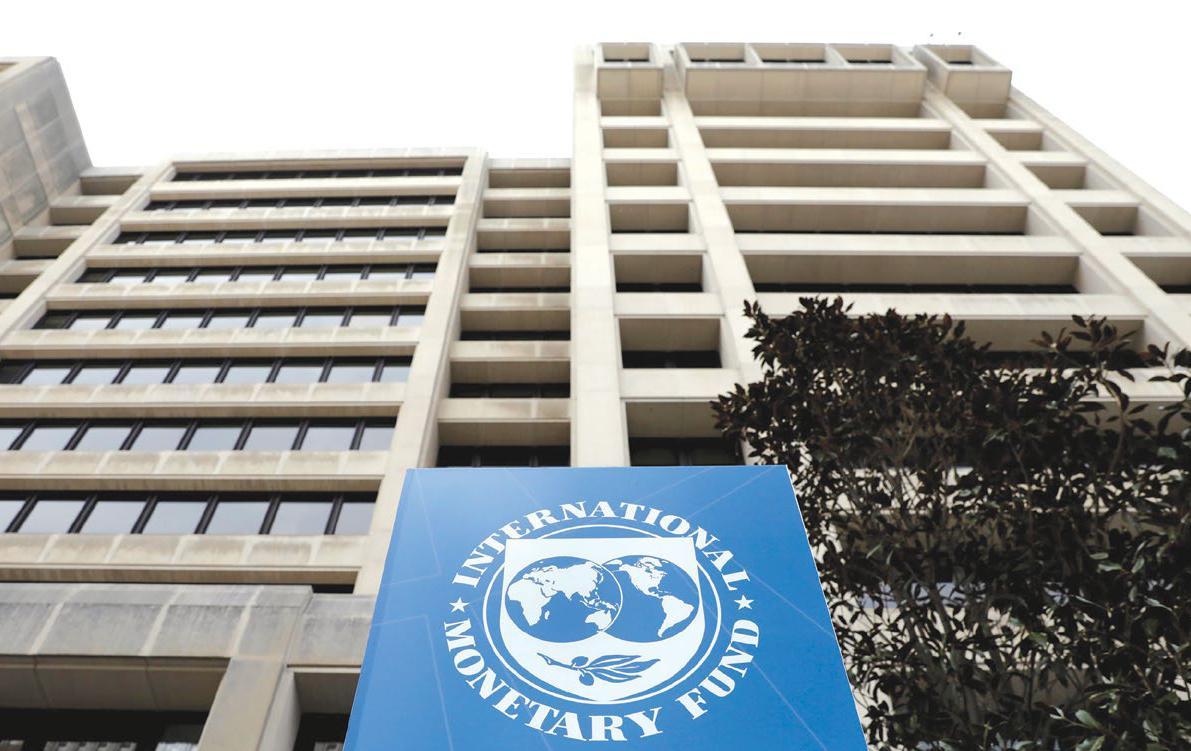
THE PROSPECT of an International Monetary Fund (IMF) bailout has been a controversial discussion point in the last few months. With South Africa’s recent credit rating downgrade, coupled with the economic pressures we are set to face after Covid19, the country’s precarious fiscal position and questions about its future sustainability, the issue is more relevant than ever.
The IMF and why it matters
The IMF was established in 1944, when founding nations met in Bretton Woods, New Hampshire, with the objective of establishing a new economic order. After the devastation of World War 2, there was global consensus that an economic overhaul was necessary to end destructive policies and prevent similar conflict from occurring in the future. As an important component of the new
Dean de Nysschen.
Bretton Woods regime, the IMF was created alongside the World Bank – with the purpose of fostering international monetary cooperation, economic stability and the sharing of economic prosperity. Over time the IMF has pursued the above by what the organisation terms as: “keeping track of the global economy and the economies of member countries, by lending to countries with balance of payments difficulties and by giving
practical help to member nations”.
Mixed emotions regarding the IMF’s approach
When it comes to lending and growing economic capacity within developing economies, the organisation has for years been criticised as being a “wolf in sheep’s clothing” and at times has even been portrayed as a “rich countries’ club”. The latter accusation is a reference to the fact that voting control is skewed to the most dominant developed world economies, as a result of subscription quotas or membership fees (which are proportional to economic size and strength). The US and Europe have effectively managed the IMF and the World Bank since inception, with the US traditionally leading the World Bank, while the IMF is usually led by a European representative (headquarters for the twin institutions are in Washington).
The criticism of the IMF’s approach, however, has mostly been aimed at whether the fund has truly facilitated upliftment and whether loan programme participants are afforded the opportunity to use funds for productive spending –and ultimately for debt reduction.
Historically, strict conditionality has applied to receiving an IMF loan. Critics say these conditionalities have been aligned with the political interests of neoliberal and developed world economics, with developing and poor economies suffering as a result. In recent years, this theory has become increasingly relevant with the establishment of the BRICS New Development Bank – which no doubt poses a threat to the dominance of the IMF and the World Bank.
IMF loans have often been underpinned by high interest charges and austere policy requirements –including tight monetary policy, slashing government debt and decreasing social spending. In addition, central banks and SOEs are often privatised and made separate from government, with labour rights consequently taking a hit as power shifts from unions to employers. It is no wonder the IMF has been a bone of contention among local politicians and economic commentators – not just would the above policies naturally lead to mass job losses in the immediate term, but discussions around local SOE privatisation and the independence of the Reserve
Bank have been a political hot potato for several years.
Consequently, the above issues raise some important questions. Do IMF policies leave countries too dependent on debt refinancing? Or has the IMF perhaps become a convenient scapegoat, in the wake of inappropriate policies and reckless spending? Are the typical economic candidates for these loan programmes so far gone that shortterm pain may be necessary to allow for potential longer-term productivity, and could reforms lead to an offsetting capital inflow from investors?
IMF lending programme success
The difficulty in determining the success of IMF funding programmes lies in the fact that there is usually no alternative scenario with which to compare the interventions. Countries that approach the fund for assistance most often do so as a last resort. However, we can make use of appropriate case studies to gauge the circumstances that may accompany or indeed follow an IMF funding programme.
Even those in support of the IMF are mostly willing to concede that loan conditionality in the early years of the fund’s existence were overly dogmatic, and strict policies were often applied to loan recipients in a blanket fashion – with very little consideration for a country’s unique circumstances or requirements. In more recent times, however, there has been a shift in approach from the IMF. The fund has become more lenient regarding borrowing costs as well as acknowledging each nation’s unique policy requirements.
Proponents of the fund’s value-add often use examples such as Mexico and the Asian crisis of the 1990s to demonstrate that the IMF funding programme does indeed have success stories. In 1995 Mexico successfully paid back a loan of about US$52 billion, which assisted in lifting the nation out of a certain financial crisis, while South Korea is arguably the best example of an economy that not only managed to emerge from the Asian crisis, but went on to grow into the developed economy it is today – albeit that a large part of that transformational period was under the watch of a military dictatorship.
Critics have contended that the
after-effects of an IMF debt cycle leave countries worse off than before, particularly impoverished countries. One of the most acclaimed proponents of this view was Nobel laureate Joseph Stiglitz (who himself chaired the World Bank from 1997 to 2000). In his 2002 book, Globalization and its Discontents, he famously accused the IMF of playing an instrumental role in the failure of developmental economic policy. This view took centre stage in the Eurozone debt crisis of 2010, when the IMF provided funding to a Eurozone nation for the first time. Arguably, this could provide the grandest case study for the fund’s effectiveness in future. Currently, however, the predicament that Greece finds itself in would not be an endorsement for the programme’s effectiveness. Although the nation has paid back most of the $300 billion provided since the global financial crisis, Greece remains heavily indebted at 180 percent of GDP (now mostly owed to the EU). With stubbornly high unemployment levels and yet another recession on the horizon, creditors insist that a strict budget surplus be maintained.
The IMF has entered about 90 funding programmes since the global financial crisis. Eleven countries have relied on IMF aid for at least 30 years; 32 countries have been borrowers for between 20 and 29 years; and 41 countries borrowers for between 10 and 19 years. Although not conclusively attributed to IMF conditions, these numbers aren’t exactly encouraging for countries who can no longer rely on their own budgets.
So, is SA about to join the club?
Although recent developments have increased the likelihood of needing assistance from the IMF (or an alternative institution such as the New Development Bank) in future – it should be noted that we are not yet at the point of no return. What these developments have done is to dramatically hasten the need for serious structural reforms. Political resistance towards these reforms has been well publicised – and getting the required cabinet support has at times seemed like mission impossible, given the balance of powers within the ANC and the potential impacts mentioned above. Fortunately, however, it seems as if this scenario may be changing. Covid-19 may, in fact, have a
WEALTH•INVESTMENT•PROSPERITY PERSONAL FINANCE | 2 nd QUARTER 2020 27
silver lining, as the crisis has emphasised the extent of how cash-strapped we are as a nation. The potentially daunting conditions that may accompany an IMF bailout (of which many are in strong conflict with traditional ANC ideology) seem to be providing President Ramaphosa and Finance Minister Mboweni with the ammunition they need to pass the reforms which would otherwise have required precious time and very astute politics on Ramaphosa’s part.
From a fiscal standpoint, our debt problems remain disheartening –considering that our debt-to-GDP hovers around 60 percent. Coupled with a budget deficit of over 6 percent, there are already definite similarities with nations who have accepted loans from the IMF. The likes of Argentina, as a recent example, had similar total debt levels when it approached the fund. Importantly, however, the South African economy can be differentiated from many of the countries in this club, in certain aspects.
First, there is foreign currency debt as a proportion of total debt. We have approximately 12 percent of our debt denominated in foreign currency, which compares favourably with other countries who have needed IMF interventions previously (for comparative purposes see graph). Foreign currency debt is one of the most prominent causes of a crisis. Largely brought about when coupled with high inflation and significant depreciation of the local currency, the lending country becomes unable to repay their ballooning hard currency debt obligations.
Another important differentiator is the nature of South Africa’s debt maturity profile. Despite the obvious shortcomings in our budget, deficits have mostly been financed via longer-term bonds, which significantly alleviates pressure of any immediate payment required. The average weighted term of the foreign debt discussed above is approximately 10 years, largely thanks to the structure of our bond market – the South African fixed-income market has one of the longest maturity profiles in the world, with the ability to issue debt out to 30 years. This ensures less refinancing risk in the case of debt obligation roll-overs.
Third, astute monetary policy
International bonds as % of total bonds
implemented by an efficient and expeditious South African Reserve Bank (SARB) in recent years means that inflation has been kept in check. With the luxury of having offered attractive real yields to global investors, and the need for monetary easing as a result of the coronavirus fallout, the SARB was recently able to cut rates by 200 basis points without compromising on its inflation mandate. With repo rates now at historic lows of 5.25 percent, there remains some breathing room, with inflation comfortably within the target band of between three and six percent.
Despite the differentiators discussed above, we cannot side-step the reality that we will likely experience doubledigit deficits in the coming year (largely due to the global recession brought on by Covid-19). As a result, future debt levels are likely to be significantly higher than Treasury has forecast in the most recent budget. And as a result of the most recent Moody’s downgrade, our debt refinancing costs will now be higher than in the past. Knowing that these conditions will create a challenging environment in which to generate economic growth, let alone the level of growth we need to deliver budget surplus, the drastic need for reprioritised government expenditure has become evident to all stakeholders involved (unions included). Furthermore, with the recent announcement by President Ramaphosa, detailing the largest ever economic stimulus package rolled out in South Africa – the R500 billion coronavirus response package is expected to be largely fiscally neutral, but the majority of funds will likely need to be
sourced from outside the current budget, via the SARB, private bank leverage, tax deferrals, international funding institutions and the Unemployment Insurance Fund – a daunting reality is now upon us. If spending, and by implication the public wage bill, is not substantially lowered in the next few years, we are living on borrowed time, and our country will soon be dependent on international institutions like the IMF, the New Development Bank and World Bank for more than just health care assistance (discussions are already taking place with the above-mentioned institutions regarding unconditional loans aimed exclusively at combating the health effects of Covid-19).
Although it may be a complicated task to deduce whether international funding programmes are effective or not, history has at least provided us with one helpful and straightforward insight. Either you reform the economy on your own terms, or someone else will come along and do it for you. And regardless of which institution may be most willing to open its doors to us, it would probably be in our best interest to avoid knocking for as long as possible.
Dean van Nysschen is a research and investment analyst at Glacier by Sanlam
28 PERSONAL FINANCE | 2 nd QUARTER 2020 Sources: International Monetary Fund World Bank Council on Foreign Relations The Daily Maverick The Mail & Guardian Prudential Investment Managers Deutsche Welle Business ABAX Investments Anchor Capital National Treasury 80% Argentina Colombia Egypt Indonesia Brazil Chile Poland SouthAfrica Turkey Phillipines Malaysia
40% 60% 20% 70% 30% 50% 10% 0%
Source: ABAX Investments













21 QUESTIONS to ask a financial adviser
Trust should never be given lightly. Now more than ever you need to be 100% certain that the person you appoint to deal with your finances is both trustworthy and has the necessary expertise. The South African Independent Financial Advisors’ Association has compiled a list of questions you need to ask, writes

 Martin Hesse.
Martin Hesse.
$
$



30 PERSONAL FINANCE | 2 nd QUARTER 2020
Isn’t it funny how discerning we are when it comes to spending money on personal goods, particularly big-ticket items, and yet on vital matters concerning our future financial security we can be so casual?
If you’re buying a car, for example, you will probably spend hours gathering information about different models on the market, weighing up costs versus benefits, before making a final decision. But do you do the same when buying a life insurance policy, making an investment, or, at retirement, converting your retirement benefit into a pension (annuity) product?
The chances are that you’re likely to accept the recommendations of a financial adviser or insurance broker, without asking too many questions.
The world of investments and finance is intimidating. People instinctively tend to trust someone who is in the business of financial services and appears to be knowledgeable on the topic – just as they would trust a medical doctor on health matters or an attorney on matters of law.
But it’s a big mistake to assume that the person who is advising you on your finances has the professional standing of a doctor or lawyer and has your best interests at heart.
Take, for example, three pensioners who contacted Personal Finance after the Pretoria-based financial company Ecsponent set alarm bells ringing by informing its preference shareholders it would not be paying them their dividends in March this year. Each of these people had invested a substantial portion of their life savings (one of them nearly R4 million) in these preference shares, which, they were led to believe by the unscrupulous advisers selling them and by the outrageously misleading investment “fact” sheets, were almost as safe as a bank deposit.
Whether these poor pensioners will see their money again is debatable at the time of writing, because with the added pressures of the Covid-19 crisis, Ecsponent may well not survive.
The bottom line is that you need to thoroughly investigate the adviser or broker through whom you buy any financial product. A probe into whether an investment or company is worth investing in or not is known in the industry as a “due diligence” assessment. Your adviser is
compelled to do due diligence on products he or she offers you. But you, for your own peace of mind, need to do a due diligence assessment of your adviser.
Trust is key. But it should never be given lightly. It must be established first and foremost through a knowledge of an adviser’s qualifications, background and track record, among other things.
The Financial Sector Conduct Authority’s Retail Distribution Review (RDR) programme, which began a few years ago and which will reform how financial products are distributed in South Africa, aims to differentiate between advisers who are in the employ of product providers such as Sanlam, Old Mutual and Liberty, and those who operate independently. A discussion paper, released by the FSCA in December, aims to solidify the distinction between the former, termed a Product Supplier Agent (PSA), and the latter, termed a Registered Financial Adviser – currently known as an Independent Financial Adviser (IFA).
Whatever the final agreed-on terminology and exact definitions, in the future you should confidently be able to tell between these two basic types of adviser: those who essentially sell the products of their employer and those who may have sales agreements with a range of product providers, but who are not in the direct employ of any such provider.
However, you cannot simply assume that an IFA will give more objective advice. Even an IFA may have behind-the-scenes interests that may conflict with yours.
DUE DILIGENCE
In this regard, the South African Independent Advisors’ Association (SAIFAA), which “promotes the value of independent financial advice in the modern financial services market”, has compiled a list of 21 questions that need to be asked when appointing a financial adviser, whether a PSA or an IFA. The questions constitute, in effect, your “due diligence” of the person to whom you will be entrusting your money and future financial security.
Ideally, your relationship with an adviser should not be limited to when you want to take out a new insurance policy or have an extra few thousand rands to invest. The real benefit to you lies in a deeper, long-term
relationship – when your adviser comes to know you and your family as intimately as a family doctor or parish priest.
On this note, Derek Smorenburg, founder and chief executive of SAIFAA, says one of the first signs of whether you can trust an adviser or not is whether he or she includes your spouse – and other family members –in the discussion.
There’s little doubt about the value of such a relationship. Smorenburg says research from the United States shows that consumers who use financial advisers enjoy financial outcomes between 35% and 40% better than those who don’t.
So whom do you choose? How do you choose?
Smorenburg says most people actually don’t know what they should be looking for or what questions they should be asking. And so, with input from SAIFAA members, he compiled a list, which began as seven questions and expanded to 21.
A professional adviser will cover some of these questions in a service level agreement, which should be drawn up on your first meeting. Moreover, some, such as the disclosure of fees and costs, are required by law.
Smorenburg says that for many of the questions there is no right or wrong answer. It’s the way in which the adviser answers them that should give you important clues as to whether he or she is deserving of your trust or not.
The first six questions are general questions about the adviser, while questions seven to 21 dig down into the adviser’s business and what it provides.
WEALTH•INVESTMENT•PROSPERITY PERSONAL FINANCE | 2 nd QUARTER 2020 31
THE 21 QUESTIONS
How can I be sure that you will put me and my family’s best interests first and how do I know you are the right adviser for me? Similar to what an employer would ask a prospective employee, the way the adviser answers this will immediately tell you whether to proceed further ornot.
3 2 4 5
Do you have the relevant experience and knowledge to deal with our specific situation?
This will indicate how good a fit the adviser is to you and your family’s unique circumstances.
What is your appropriate experience and your suitable qualifications as a financial adviser? You need to know how long the adviser has been in practice and the extent of his qualifications. For example, the Certified Financial Planner certification is internationally recognised, and may only be conferred on someone with a relevant university degree, a Postgraduate Diploma in Financial Planning and several years’ experience.
What ongoing educational and updating processes do you partake in annually to ensure that your advice and guidance is appropriate? A professional adviser will constantly keep up to date with developments in the industry and legislative changes. The adviser may be required by the professional body to which he or she belongs to earn ongoing CPD (continuous professional development) points.
Are you registered with the Financial Sector Conduct Authority for the services offered to me and my family?
This is essential. Your adviser must be
7 8 9
registered and have a valid financial services provider (FSP) licence, as required by the Financial Advice and Intermediary Services (FAIS) Act. There are different levels of licence according to the types of products an FSP can give advice on. The Act also contains a code of conduct, to which FSPs must adhere.
Do you belong to a relevant industry body that indicates a certain competency level?
Bodies include SAIFAA, the Financial Planning Institute, the Financial Intermediaries Association and the Institute of Retirement Funds Africa.
What is the full range of services you and your practice provide? Some practices are more specialised than others. You need to ensure the practice offers the range of services you require, which may include tax management and estate planning.
Do you represent a wide range of insurance companies’ products and a variety of investment houses, which ones and why?
A PSA will represent only his or her employer’s products, although the employer’s investment platform is likely to carry a wide range of underlying investments from an array of asset managers. An IFA should be able to offer products from a variety of suppliers.
6 10 11 12 13
How will our relationship work, how often will we meet, and will this be based on a written agreement? Smorenburg says a service level agreement should be easy to understand and fully explained. You may also require the adviser to invest on your behalf, and this would need an investment strategy agreement mandate signed by you.
How do you get paid?
The adviser may receive a commission from the product provider on the products you buy. Otherwise, he or she may charge a fee based on a percentage of your assets, or a time-related fee according to an hourly rate.
Who is your employer?
In the case of a PSA, this would be the product supplier. An IFA may be self-employed or work for an advisory practice.
Do you or your practice have any direct or indirect interests in any third-party administrators or financial services providers, and would this create conflicts of interest?
Smorenburg says the adviser may be a shareholder in a third-party company providing services to the practice, from which he or she may receive dividends. The arrangement may also result in an additional layer of fees. There may be benefits to you – for example, the adviser may be aligned with a discretionary fund manager (DFM) to invest on your behalf at a low institutional rate instead of the higher retail rate. But these business relationships must be fully disclosed so that you can be the judge of whether or not they conflict with your interests.
What are the all-in costs of products and services, including and excluding advisory fees?
It is a requirement of the FAIS Act that all costs – which would include investment costs, administration costs, commissions and adviser’s fees, as well as any possible penalty charges on the early termination of contractual endowment policies and retirement annuities – are fully disclosed to you. If the adviser is aligned with a DFM or using a third-party investment platform
32 PERSONAL FINANCE | 2 nd QUARTER 2020
1
such as Glacier by Sanlam, there may be an extra layer of costs.
To what degree and how often do you conduct a due diligence of the products, services and companies that you recommend? Again, this is a requirement of the FAIS Act. PSAs would have the support of their employer organisation, which would be responsible for such assessments. IFAs would need to do such work on their own, particularly on “alternative” types of investments that may carry higher risks. The Ecsponent case is an example of failure in this regard on the part of advisers.
What happens to our investments and services when you retire or sell your business? Smorenburg says IFAs often don’t give enough attention to succession planning. Your adviser should be able to tell you how you will be served if he or she is no longer there to do it or if the business changes hands.
Can I obtain references from two other happy clients?
References from other clients are as essential as employer references from a prospective employee.
Have you been sued or have any reported legal actions against you or your practice, and what recourse do we have if something goes wrong?
The protection you have in the case of loss owing to negligence is dependent on the adviser’s professional indemnity cover. You need to ensure that the adviser has such cover in place and the extent of the cover.
What are your views on investments?
What is your investment philosophy, what asset allocation will you use, and what investment benchmarks do you use? Investment strategy and asset allocation should vary from client to client depending on each client’s risk profile and investment horizon.
Who are your compliance companies/service providers and are they independent from your practice?
Large advisory practices may have internal compliance officers, who
ensure that the practice is adhering to regulations. However, this function is increasingly outsourced to external compliance firms.
Do you subscribe to the Treating Clients Fairly principles?
These are the outcomes on which current reforms in financial services legislation are based. Your adviser should not only be aware of them but actively promoting them and putting them into practice, Smorenburg says.
How would you answer the following: “Is your client’s money your client or is the client your client? ”
Smorenburg says an adviser who has your best interests at heart will look at more than just your finances and take a holistic approach to you and your family’s well-being. For example, if you are close to or in retirement, an IFA who has completed SAIFAA’s Certified Post Retirement Professional programme would be able to guide you on lifestyle issues such as post-retirement accommodation and your mental and physical health in retirement.
WEALTH•INVESTMENT•PROSPERITY
33 14 15 16 17 18 19 20 21 PERSONAL FINANCE | 2 nd QUARTER 2020
WHY RETIREMENT BENEFITS COUNSELLING IS GOOD FOR YOU
The retirement fund default regulations require that funds provide their members with retirement benefits counselling. What is it, why do you need it, and how will it help you?

Ih“I really don’t want to discuss anything further. I just want my money else I will land on the streets. I left my work to lift my burden now you tell me about this nonsense. My kids need food. I want my money. Please don’t pay me in cash … rather pay by EFT into my bank account.”
This SMS response, from a fund member who was withdrawing his retirement fund benefit before retirement age, was shared by David Gluckman, head of special projects for Sanlam Corporate, during the presentation
By Anna Rich.
of Sanlam’s 2019 Benchmark Survey of retirement funds.
Gluckman explained the context: in keeping with one of the requirements of the default regulations governing pension funds – to obtain written consent from members before paying out their retirement fund savings in cash on withdrawal before retirement – Sanlam introduced an SMS facility. They send members a text informing them that they are processing their retirement benefit, and ask for confirmation
of their choice to receive the benefit in cash.
Forks in the road
If you are an employee with compulsory membership of a retirement fund, there are three main sets of financial crossroads on your retirement journey: when you join a company; when you leave your company through resignation (as with the member above), retrenchment or dismissal; and when you retire. The decision you take at each crossroads – the amount you choose to
34 PERSONAL FINANCE | 2 ND QUARTER 2020
WEALTH•INVESTMENT•PROSPERITY
contribute, whether to save or spend when you gain access to what you’ve accumulated before pensionable age, and the rate at which you draw from your pension pot –has major implications for your financial wellbeing as you progress through your retirement.
The SMS quoted above is a telling snapshot of member behaviour on withdrawal: the response from over 90 percent of members to about 2000 SMSs sent by Sanlam over a certain period was to take their benefits in cash.
This is in line with the figures from the Alexander Forbes Member Watch 2019, which analyses the behaviour and retirement outcomes of over one million fund members. Of members withdrawing – at resignation, retrenchment or dismissal – 8.7 percent preserved (industry-speak for saving the money either in the fund or a preservation fund) in 2018, and 8.75 percent preserved in 2019. In other words, only about nine of every 100 members preserve. Michael Prinsloo, head of products at Alexander Forbes, says that for a few members, opting to take the cash may be the right decision, but for many of the 91 of every 100 people who do not preserve, this is not the case.
Even more concerning is that the nine percent is an average across age groups. “Preservation tends to increase with age – up to 25 percent of older members
What is retirement benefits counselling?
According to the Government Gazette, this means “the disclosure and explanation, in a clear and understandable language, including risks, costs and charges, of the available investment portfolios, the terms of the fund’s annuity strategy, the terms and process by which a fund handles preserved benefits within the regulations, and any other options made available to members.”
“I am often shocked by how little people pay attention to or understand their retirement benefits, despite efforts from funds, providers and education initiatives from the Financial Services Conduct Authority (FSCA) and others,” Prinsloo says. “Retirement

preserve,” explains Prinsloo. “If you look at everyone under the age of 35, the rate is more like five percent. They are missing out on about 25 years of compound growth. We need to encourage more people to preserve.”
The Member Watch analysis finds that two of the factors that affect replacement ratios (the proportion of a member’s final salary that their retirement savings will provide) are the benefit design of the fund (contributions, retirement age), and member behaviour, such as preservation.
“For most working South Africans, their retirement fund is likely to be their single largest source of savings,” says Pillay Devadass, of Old Mutual Corporate. “For various reasons – mainly lack of financial literacy and socio-economic pressures –many workers do not contribute adequately, preserve when moving jobs, or make the right annuity decisions to ensure an adequate income in retirement.”
Government intervenes
Back in 2004, National Treasury’s discussion paper, “Retirement Fund Reform”, asserted that one of the main reasons that people were retiring with too little money was “leakage”, and their view was that there were two components to this.
One was that members were being paid out lower amounts than they had actually contributed, and in this respect,
government pointed to excessive administrative costs as a concern.
The other hole in the bucket was down to individual members not reinvesting their retirement savings when they change jobs. The enactment of the retirement fund default regulations – an amendment to the Pension Funds Act – is a measure to address our government’s long-standing concern about the pervasive lack of financial preparedness for retirement. The amendment took effect on 1 September 2017, with a window until 1 March 2019 to allow pension funds to get their houses in order.
A National Treasury statement said the intention behind the default regulations is “to improve the outcomes for members of retirement funds by ensuring that they get good value for their savings”. To this end, fund trustees should help members while they are accumulating retirement benefits (savings) and at retirement by coming up with “default” – that is, preselected – investment portfolios and annuity strategies that are “simple, cost-effective and transparent”.
In tacit acknowledgement that these defaults will be more effective if members understand them, Treasury said: “Employees will also be required to first seek retirement benefits counselling before they make a decision.”
WEALTH•INVESTMENT•PROSPERITY
benefits counselling (RBC) is intended to improve that.”
Barend le Grange, head of individual member support at Sanlam, says RBC is “democratising financial services by reaching people who may not otherwise have received information on what options are available to them”.
RBC can be done in writing or in person (verbally), says Olano Makhubela, divisional executive for retirement fund supervision at the FSCA, referring to the Pension Funds Act guidance notice on how to apply the default regulations.
The trustees of each fund decide how to implement RBC to suit their fund and its membership. The Sanlam Benchmark survey of stand-alone funds found that 51 percent of funds surveyed had opted for written communication.
But is written communication enough? Referring again to our burdened member’s SMS, Gluckman says it illustrates the dangers of written communication: members might not understand what they are reading. Also, says Le Grange, “our Benchmark research shows that written educational material is less effective in engaging and influencing members than human interaction”.
“The adequacy of written RBC depends on the nature of the membership,” says Makhubela. “It may be appropriate for professionals to receive RBC in writing whereas it may not be appropriate for less financially sophisticated members.”
Written RBC is cheaper than in-person methods, and Makhubela points out that costs are another consideration for trustees. “The cost is borne by the fund and, ultimately, the member.”
The Sanlam Benchmark survey of standalone funds asked trustees why they would not opt for RBC with human interaction. For 23 percent of the respondents, the fund or employer felt it would not add enough value. And 46 percent said that it would just create another layer of costs to members.
However, Le Grange says trustees have
The line between counselling and advice
RBC has its limits: it stops at the provision of information. The Pension Funds Act guidance note on the default regulations says: “A person appointed by the fund to provide RBC
a fiduciary responsibility to monitor the effectiveness of their strategy, and by extension, the impact of their choice of RBC. “If their strategy is not working, they need to assess whether it is the product or the engagement that is going wrong.”
Besides written communication, there are several other possibilities for RBC: one-onone counselling (in-person or telephonic), group sessions, counselling through the human resources (HR) department, or through a financial adviser.

In terms of HR as a source of RBC, a significant proportion of funds – 20 percent of respondents representing stand-alone funds in the Sanlam Benchmark survey – is providing RBC this way. Le Grange sees both pros and cons here. The problem he flags is that HR does not have the capability to meaningfully respond to employees’ questions. “However, they are at the coalface of employees exiting the business, when they are going through major emotional shifts, and not necessarily thinking about their retirement journey. As such, HR is well-positioned to make a huge difference by referring employees to retirement benefit counsellors who are better equipped to answer a member’s questions.” In a time of mass retrenchments, and rapid cycling through jobs on the part of younger members, he says this becomes even more important.
A similar proportion of stand-alone funds (22 percent) is relying on financial advisers to provide RBC. Le Grange says the challenge here is to ensure that all members have access to counselling, as those with lower fund values might not be as attractive to financial advisers, who usually charge an asset-based fee. If funds can make it work, the advantage is that an adviser considers the member’s wider situation. His other concern is that it is not feasible at scale. Advice could be combined with a lowertouch RBC service, though: “Members first go through a RBC process, and are then referred to advisers when necessary.”
does not need to be a registered financial services provider or financial adviser in terms of the Financial advisery and Intermediary Services Act.” However, the FSCA adds that the board of a fund opting for in-person RBC has to ensure that the counsellor is suitably
qualified and experienced, and able to manage any conflicts of interest. If advice is given, the person must be registered as a financial adviser with the FSCA. They add that RBC does not extend to advice on tax matters and members should be informed of this. Only a registered tax practitioner may give advice on tax matters.
“Counselling doesn’t address whether one product is better than another,” says Le Grange, “but it does give the benefits as well as the risks associated with a fund-approved annuity strategy, because that is provision of information around a product. The default options the trustees have put in place are worth considering because they are required to be appropriate for the majority of a fund’s members.”
RBC does empower the member with information to help them make informed decisions, he adds, but the counselling does not go into the “why” – for example, why any particular annuity strategy, whether within or outside your fund, might be best for you. Any nuance in steering a member
PERSONAL FINANCE | 2 ND QUARTER 2020 36 WEALTH•INVESTMENT•PROSPERITY
to one product would be considered advice. Le Grange doesn’t think the intention of the default regulations was necessarily to address the “why” – and he thinks this is the right approach because it differs so much for every individual.
Are funds on board?
The FSCA is responsible for ensuring that financial service providers adhere to regulations. So in their assessment, are retirement fund trustees ensuring that RBC is being provided to members, as required?
“The FSCA has monitored the top 200 funds in this regard and they are all compliant,” says Makhubela. “There are approximately 1300 more funds, and the FSCA has not yet monitored whether RBC is in fact being provided to these members.” The FSCA monitors the funds through on-site visits and governance returns, says Makhubela.
Will RBC really make a difference?
One of the questions posed to participating employers in the Sanlam Benchmark survey was “Do you think retirement benefit counselling will assist in improving retirement outcomes for members?” The
response was overwhelmingly positive, with 88 percent agreeing that it would.
In terms of a potential increase in members preserving their retirement benefits on resigning, retrenchment or dismissal, fund representatives were evenly divided: 49 percent believed that members would do anything to access their withdrawal benefit in cash. However, 18 percent felt that the additional requirement of submitting the cash option in writing would be a deterrent, while 27 percent expected members to preserve because they had RBC.
A year has passed since the default regulations took effect. From the perspective of the FSCA, “it is too early to ascertain whether RBC is having the desired effect or which method is most effective,” says Makhubela. “The FSCA will be in a position to see whether it is having the desired outcome only after the governance returns are analysed.”
Similarly, it is too soon to see the effects in Alexander Forbes Member Watch numbers, says Prinsloo. “Most funds started getting their acts together towards the end of 2018, and the 2019 Member Watch figures

were released in the middle of 2019.”
Still, early indications are that RBC has been effective. “However, we have seen a small positive difference between clients who have embraced the enhanced RBC and those who have not, in terms of preservation and annuitisation rates, but it is too early to tell if it is sustained and to establish causality (whether something else is driving the difference),” Prinsloo says.
Prinsloo is positive about RBC – when done well. This, he says, entails that it be taken seriously, with a scientific approach to trying to improve behaviour.
Devadass of Old Mutual says: “We have seen a significant shift among Old Mutual Superfund members, especially in contributing more towards their retirement and taking out an annuity at retirement rather than cash,” says Devadass.
Le Grange advocates RBC through human interaction. “If funds follow a tick-box approach and do not use this opportunity to improve their servicing to members, the regulations will not have the impact the FSCA intended. It is then incumbent upon us to show that human interaction is most effective by measuring the outcomes.”
37 PERSONAL FINANCE | 2 ND QUARTER 2020
What can type of retirement benefits counselling can I expect from my fund?
GOVERNMENT EMPLOYEES PENSION FUND (GEPF)
With over 1.2 million active members, and R1.8 trillion in assets, the GEPF is the largest fund.
The fund declined to respond. However, they have a comprehensive “Member Guide” (see gepf.gov.za) and point members to their call centre or walk-in centres if they have questions. They recommend that members consult a financial adviser to ensure that their pension benefits will meet their needs. According to the 2019 annual report, over 6 000 members attended retiring member workshops that year.
COMMERCIAL FUNDS
In order of size, these are within the top 10 umbrella funds, according to the 2019 Sanlam Benchmark survey.
OLD MUTUAL
For pre-retirement SuperFund members, RBC takes the form of face-to-face, schemespecific and general financial education workshops, combined with online e-learning modules, targeted communication at specific life events via email and SMS, and inbound and outbound calls managed by counsellors.
The counselling journey for members approaching retirement starts 10 years prior to retirement date, gradually increasing in frequency. The most important counselling conversations happen six months to retirement. – Pillay Devadass, Old Mutual Corporate
ALEXANDER FORBES
Retirement fund trustees have endorsed:
• A standard RBC framework for all participants, with information provided through written communication; digitally, via AF-Online, the app, USSD technology and the website; telephonically (inbound); and group training.
• An enhanced RBC offering, if selected by employers, with individual face-toface consulting from financial wellbeing consultants, and “proactive outbound contact”, where prospective retirees are contacted individually.
The “Options on Retiring” brochure covers
options ranging from deferred retirement to annuities, and prompts the member to seek advice.
A retirement income statement two years from retirement, and the provision of annuity quotes from insurers shows the member what his or her fund credit can purchase. – Michael Prinsloo, head of products at Alexander Forbes
MOMENTUM
FundsAtWork members have access to the Smart Counsel RBC service: easyto-understand, jargon-free information about different classes of products and how various decisions affect retirement outcomes.
Engagement preferences vary from personal (face-to-face, telephone, email) to digital. Besides the RBC telephonic service with qualified benefit counsellors (which includes emails), and digital engagement via our easy-to-use platforms, we have an annual member conference. In these sessions, members are encouraged to speak to a benefits counsellor to better understand their benefits, and their personal financial adviser about making the right decision for their needs. – Ronelle Kind, general manager of member engagement solutions
SANLAM
Sanlam Umbrella Fund members can call our retirement benefits counsellors directly or explore their fund-specific options online. Also, members are proactively counselled – telephonically, or through email and SMS – at intervals before retirement or at withdrawal.
All these services are free, though there is a cost to our business. We see this as an investment, with costs reducing as we achieve scale, but also as the right thing to do.
We are now optimising our service: gathering data, and experimenting with engagement models, like personalised interactive video.
Our capability for individualised interaction offers scope for wider engagement – for example, with new members entering. – Barend le Grange, head of individual member support
SYGNIA
SURF offers a multi-pronged approach:
• Face-to-face – we prefer this format as it resonates with most members. It provides an opportunity to pose questions, and builds relationships. Our counsellors travel to employers for these appointments.
• Telephone – some members prefer the immediacy of this format. This also serves members in remote areas.
• Email – This is suited to members who prefer to read the correspondence in their own time.
• Written communication – we distribute brochures, articles and letters to communicate important information that supports RBC.
• Automated communication – New joiners and withdrawal claimants receive written communication directly upon specific events. This allows members to work through the information before engaging the other options. – Ernest Mabena, retirement benefits counsellor 10X
We empower members to make decisions themselves, rather than pay 2–3 percent of their savings in advisory fees.
Being a fintech company, we leverage technology to communicate with our members. We have opted for written communication, often with graphics and videos, distributed digitally. If a member needs further assistance, they can call our retail advisers.
Our system notifies members five years from retirement that they need to consider their options. Our counselling document is sent out every 12 months from then, and again six months before retirement, laying out options, including default annuities.
We work closely with HR because they know best whether their members would appreciate interactive group sessions or prefer to interact online.
We have a series of free downloadable ebooks with videos and bite-sized, digestible information around saving and retirement. – Mica Townsend, business development manager and employee benefits consultant
38 PERSONAL FINANCE | 2 ND QUARTER 2020
BOUTIQUE FIRM IS MANAGER OF THE YEAR
Martin Hesse reports on this year’s Raging Bull Awards, the “Oscars” of the investment industry, for unit trust performance to the end of 2019.

Mi-Plan, a boutique asset management company based in Newlands, Cape Town, outperformed the major players in South Africa’s investment industry to win the coveted South African Manager of the Year trophy at the annual Raging Bull Awards gala dinner, held at the Cape Town International Convention Centre on Tuesday, January 28.

The event recognises outstanding performance by unit trust fund managers in selecting investments for their portfolios, taking into account consistency of returns and management of investment risk.
The runners-up in the South African Manager of the Year race – and recipients of certificates – were Investec Asset Management in second place and Prescient in third place. Last year’s winner, Allan Gray, which has dominated the awards in recent years, slipped back to fourth position, while Alexander Forbes Investments was fifth.
The Raging Bull Award for Offshore Manager of the Year went to Nedgroup Investments, for its suite of offshore funds domiciled in Ireland (see below).
The manager of the year awards are based on the risk-adjusted performance of a company’s suite of qualifying unit trust funds, as determined by the PlexCrown Fund Ratings system, over a five-year period, in this instance to the end of 2019.
Mi-Plan has a best-of-class approach to its funds that are not managed in-house, choosing leading portfolio managers from across the industry. Mi-Plan director Anton Turpin said the awards gave
WEALTH•INVESTMENT•PROSPERITY
39 PERSONAL FINANCE | 2 nd QUARTER 2020
RAGING BULL CERTIFICATE AND AWARD WINNERS
for results to December 31, 2019
CERTIFICATES
Straight performance over three years
Best South African Equity Resources Fund
Investec Commodity Fund
Best South African Equity Mid- and Small-cap Fund
Coronation Smaller Companies Fund
Best South African Multi-asset
Flexible Fund
Long Beach Flexible Prescient Fund
Best South African Multi-asset
Low Equity Fund
Financial Fitness IP Stable Fund of Funds

Best South African Multi-asset
Medium Equity Fund
Kagiso Protector Fund
Best South African Multi-asset
High Equity Fund
Kagiso Balanced Fund
Best South African Multi-asset
Income Fund
Sasfin BCI Flexible Income Fund
Best South African Interest-bearing
Short-term Fund
Truffle SCI Income Plus Fund
Best South African Interest-bearing
Variable-term Fund
Allan Gray Bond Fund
Best South African Real Estate Fund
True North IP Enhanced Property Fund

Best (SA-domiciled) Global Multi-asset
Flexible Fund
Mi-Plan IP Global Macro Fund
Best (SA-domiciled) Worldwide Multi-asset
Flexible Fund
Select BCI Worldwide Flexible Fund
Best (FSCA-approved) Offshore Europe
Equity General Fund
Templeton Eastern Europe Fund
Best (FSCA-approved) Offshore US Equity
General Fund
Franklin US Opportunities Fund
Best (FSCA-approved) Offshore Far East
Equity General Fund
Templeton China Fund
Best (FSCA-approved) Offshore Global Real Estate General Fund
Schroder International Selection Global Cities Real Estate Fund

Best (FSCA-approved) Offshore Global Fixed-interest Bond Fund
Allan Gray Africa Ex-SA Bond Fund
Risk-adjusted performance over five years
Best South African Multi-asset Low Equity Fund on a Risk-adjusted Basis
Kagiso Stable Fund
Best South African Multi-asset Medium Equity Fund on a Risk-adjusted Basis
Kagiso Protector Fund
Best South African Multi-asset High Equity Fund on a Risk-adjusted Basis
Investec Managed Fund
Best South African Multi-asset Income Fund on a Risk-adjusted Basis
BCI Income Plus Fund
Best South African Interest-bearing
Variable-term Fund on a Risk-adjusted Basis
Allan Gray Bond Fund
Best South African Interest-bearing ShortTerm Fund on a Risk-adjusted Basis
Momentum Enhanced Yield Fund
Best South African Real Estate Fund on a Risk-adjusted Basis
Absa Property Equity Fund
Best (SA-domiciled) Global Equity General Fund on a Risk-adjusted Basis
Investec Global Franchise Feeder Fund
Best (SA-domiciled) Global Real Estate Fund on a Risk-adjusted Basis
Catalyst Global Real Estate Prescient Feeder Fund
Best (SA-domiciled) Global Multi-asset Low Equity Fund on a Risk-adjusted Basis
Prudential Global Inflation Plus Feeder Fund
Best (SA-domiciled) Global Multi-asset High Equity Fund on a Risk-adjusted Basis
Investec Global Strategic Managed Feeder Fund
Best (SA-domiciled) Global Multi-asset Flexible Fund on a Risk-adjusted Basis
Mi-Plan IP Global Macro Fund
Best (SA-domiciled) Worldwide Multi-asset Flexible Fund on a Risk-adjusted Basis
Select BCI Worldwide Flexible Fund
RAGING BULL AWARDS
Straight performance over three years
Best South African Equity General Fund
Kagiso Equity Alpha
Best South African Interest-bearing Fund

Truffle SCI Income Plus Fund
Best (SA-domiciled) Global Equity General Fund
BlueAlpha BCI Global Equity
Best (FSCA-approved) Offshore Global Equity Fund
Fundsmith Equity Fund
Risk-adjusted performance over five years
Best South African General Equity Fund on a Risk-adjusted Basis
Fairtree Equity Prescient Fund
Best South African Multi-asset Equity Fund on a Risk-adjusted Basis
Kagiso Protector Fund
Best South African Multi-asset Flexible Fund on a Risk-adjusted Basis
Long Beach Flexible Prescient Fund
Best (FSCA-approved) Offshore Global Asset Allocation Fund on a Risk-adjusted Basis
Platinum Global Managed Fund
MANAGER OF THE YEAR AWARDS
Offshore Manager of the Year
Nedgroup Investments
South African Manager of the Year
– 3rd Place
Prescient
South African Manager of the Year
– 2nd Place
Investec Asset Management
South African Manager of the Year
Mi-Plan
40 PERSONAL FINANCE | 2 nd QUARTER 2020
smaller firms the opportunity to show off their investment skills.
Speaking to Personal Finance at the event, Turpin said: “It’s an opportunity for smaller managers in South Africa –those companies that don’t have large advertising budgets – to reach investors and tell them about the rewards they can get through good stock selection, good asset allocation and good risk management. These smaller companies have some pretty good asset managers, who have the nimbleness to get in and out of asset classes and stocks when they want to, and achieve for investors what they’re looking for, which is often inflation-beating returns, in a market that has been particularly difficult and that has required a lot of skill.
“I am the owner and face of the business, but credit must go to the underlying managers in our best-of-class approach – including Tony Bell, Rowan Williams-Short and Craig MacArthur of Vunani and Guy Monson of Sarasin – who will be happy to know that what they have achieved for our investors, who have put their trust in a company without a major brand, has been recognised.”
The other major awards at the event were fund-specific: four for straight performance over three years and four for risk-adjusted performance over five years, to the end of 2019.
In addition to the main awards, 30 certificates were awarded to funds according to their subcategory in the Association for Savings and Investment South Africa classification system for
collective investments.
The event is hosted annually by Personal Finance, and was sponsored this year by Investment Fund Africa and the JSE. ProfileData and its subsidiary, PlexCrown Fund Ratings, were the data providers.
Mi-Plan
Mi-Plan, established in 2006, manages nine retail unit trust funds covering the South African and international markets, of which eight funds qualified for inclusion in the PlexCrown Fund Rating system. These eight funds scored an average of 4.278 PlexCrowns, with two of the funds, the Mi-Plan IP Global Macro Fund (featured in Fund Focus, page 52) and the Mi-Plan IP Enhanced Income Fund, achieving five PlexCrowns, the highest rating. Four funds scored four PlexCrowns, and two funds scored three PlexCrowns. Not a single fund came in below three PlexCrowns, which represents average performance within a fund subcategory.
Investec Asset Management
Investec Asset Management, which has since separated from Investec and is now known as Ninety One, came in only just behind MiPlan, with an average of 4.262 PlexCrowns for its 15 qualifying funds. Of these funds, seven achieved five PlexCrowns (two global funds, two local equity funds, and all three of its multi-asset funds – the Investec Cautious Managed Fund, the Investec Managed Fund, and the Investec Opportunity Fund). Two funds had four PlexCrowns, five had three PlexCrowns and one had a single PlexCrown.
Prescient
Prescient was third among the unit trust managers, scoring an average of 3.882 PlexCrowns for its 12 qualifying funds. The company’s two top performers, with five PlexCrowns each, were the Prescient Equity Top 40 Fund and the Prescient Balanced Fund. There were five funds with four PlexCrowns, two with three PlexCrowns, and three with a below-par two PlexCrowns.
Offshore companies
The second major company award at the gala event was for unit trust companies that are domiciled offshore and whose funds are approved by the Financial Sector Conduct Authority to be marketed to South African Investors. These can be local companieswith offshore divisions or foreign companies.

The Raging Bull Award for Offshore Manager of the Year (for performance to the end of 2019) went to Nedgroup Investments. It was the fifth year in a row that Nedgroup has walked away with the award. Nedgroup Investments's offshore funds are domiciled in Ireland. It had three qualifying offshore funds: the Global Equity Fund, which earned five PlexCrowns, and two multi-asset funds – the Global Flexible Fund (three PlexCrowns) and Global Cautious Fund (three PlexCrowns).
The manager's overall rating was four PlexCrowns.Coronation Global, with 3.667 PlexCrowns across five qualifying funds, and Schroders (3.667 PlexCrowns across four funds) tied for second place in the offshore company rankings.
41 PERSONAL FINANCE | 2 nd QUARTER 2020
Anton Turpin from Mi-Plan (SA Manager of the Year), Martin Hesse (Personal Finance editor), Sangeeth Sewnath from Investec Asset Management (runner-up, SA Manager of the Year), and Robin Johnson from Nedgroup Investments (Offshore Manager of the Year).
LIFE INSURANCE AND LIVING ABROAD


What should you do about your life and disability cover if you emigrate temporarily or permanently? Gareth Stokes examines the issue.

Relocating offshore should not have a significant impact on your risk policies, provided you inform your insurer of changes to your location and occupation. You can move offshore with assurance that your critical illness, death and/or disability cover will perform in line with the terms and conditions you accepted when taking out the policies in South Africa.
A closer look at risk policy performance across country borders was indicated following the slew of articles published locally dealing with financial emigration, a now maligned phrase which sought to define a process whereby South Africans could externalise their tax affairs. The 2020 Budget Review decision to shift the emigration process from the South African Reserve Bank to the South African Revenue Service (SARS) will create two loosely-defined treatments for those working offshore. On the one hand are those who move offshore to avail of a job opportunity but intend returning to South Africa in the long run; on the other those who plan to formally emigrate and take up a new citizenship. “My understanding is that National Treasury wants fewer South Africans to take the formal emigration route and thus is allowing them greater flexibility should they wish to return to the country,” says Kobus Kleyn, a Certified Financial Planner professional.
Recent changes to South Africa’s expatriate tax legislation, effective 1 March 2020, as well as the new emigration regulations announced by the Minister of Finance in February 2020 (and due for implementation from 1 March 2021) have put an end to the false perception that South African citizens must undertake a “financial emigration” process to avoid double taxation on offshore income exceeding R1.25 million. The tax implications on discretionary investments and retirement savings on formal emigration have been extensively covered in the mainstream media, so this article focuses on the impact of formal

emigration or accepting longer-term working assignments abroad on risk insurance policies.
Policies issued by South African insurers must comply with the country’s laws and regulations. Life insurers are guided in this regard by the relevant sections of the Long-term Insurance Act and Insurance Act alongside the industry’s Policyholder Protection Rules, while financial advisers are regulated under the Financial Advisory and Intermediary Services Act and its accompanying codes. Any claims against your locally issued policy will be assessed and paid out according to your insurer’s policy wordings and requirements regardless of whether the terms and conditions of a similar policy issued offshore seem more sympathetic.
“The claims definitions in our policy will be different to those applied by insurers in other country markets,” says Leza Wells, chief product actuary at FMI (a division of Bidvest Life). “For example, our policy wordings generally cover more critical illness conditions than those in the United Kingdom while Australia applies different disability claims criteria in determining when you may be considered occupationally disabled.”
Consult a financial adviser
It is near impossible for the layperson to understand the vagaries of cross-border policy discrepancies, and it falls upon the financial adviser, with assistance from the insurer, to clear up any confusion. “The decision to emigrate or work abroad is a life-changing event that impacts your long term financial life plan – it necessitates a detailed consultation between you and your financial planner regarding your investments, insurance risk policies and assets and liabilities,” says Kleyn.
His view is seconded by FMI, an income protection specialist with more than two decades’ experience in the South African risk insurance environment. “Clients should always seek professional advice from a qualified financial adviser before emigrating or working abroad,” says Wells. “Your adviser will obtain the necessary information and present you with options to consider, taking various factors into
account”. The primary focus should be on ensuring that the total cover afforded you by your South African risk insurance portfolio remains intact post-relocation, adjusted for your new circumstances. To assess this your financial adviser will take various factors into account, including your current medical status, the types of policies and cover you presently hold, the types of policies and cover on offer in the new country, exchange rate risks, premium rates locally versus offshore, and tax implications.
It may come as a surprise that the optimal solution need not include policies purchased offshore. This is because a move to an equally or less risky country should have no influence on your ability to claim on a risk policy underwritten by a South Africa-based life insurer. There is more good news in that locally issued risk insurance policies continue to perform even if your intention is to formally emigrate.
Andrew Mc Currie, the head of technical marketing at Discovery Life, says that the group’s life policy remains in force without restrictions if a policyholder emigrates or relocates for work abroad. “Rand-based policyholders must continue to pay the policy premium from a South African bank account and claims proceeds must be paid into a South African account – the policyholder would be responsible for moving the proceeds out of South Africa if required,” he says.
However, for certain benefits offered on such policies, your insurer may not provide further cover over and above your pre-selected annual benefit increases. Discovery gives the example of their Income Continuation Benefit, which attracts more frequent claims than other life insurance benefits. These claims are often short term in nature and difficult to administer offshore.
The only caveat is to keep your insurer informed of any lifestyle changes that materially impact your risk insurance profile. “The bulk of insurable risk can be kept in place for you while abroad provided you make the necessary disclosures,” says Kleyn. He adds insurers are unlikely to place restrictions on death

WEALTH•INVESTMENT•PROSPERITY PERSONAL FINANCE | 2 nd QUARTER 2020 43
and critical illness cover limits and rules, but it makes sense to double-check with both your financial planner and insurer on how disability and income protection claims will be treated offshore. It is possible that your insurer will apply restrictions or exclusions to your income protection cover based on the period for which you are offshore, your occupation and your location.
Income protection policies
FMI says that while there are no requirements for income protection policyholders to inform them that they are emigrating, there are some high risk countries where policyholders might not enjoy cover. “We do not pay claims for a small number of high risk countries and it is in the client’s best interest to inform us and check that they are covered for the country they are moving to – the list changes from time to time, so it is important for ‘at risk’ clients to check in with us regularly,” says Wells. She adds that FMI will not apply additional exclusions, provided country risks are similar. This advice resonates with that of Discovery Life, which requires policyholders to inform them of any
changes in occupation, occupational duties (especially activities that might be construed as hazardous) and country of residence.
When you first take out an income protection policy you are asked for an accurate description of your occupation, activities of occupation (job description), working hours and work location, and you are contractually bound to keep your insurer informed of any material changes to these details. The disclosure rules applicable to South Africa-based risk insurance policies remain in force when you retain the policy when formally emigrating or working abroad.
An up-to-date job description is important because the level of risk your job poses has a direct impact on your ability to claim. “The job description is an important factor in pricing income protection due to the sheer amount of time we spend performing our work,” says McCurrie. “Jobs must be grouped by the risk they represent and priced accordingly”. He adds that specific occupations may have exclusions that apply to hazards experienced while performing that occupation. Your monthly premium is calculated to reflect the
occupational disability risks associated with your job. You should also declare your income (salary) accurately to avoid overinsurance, which may lead to adjustments at claims stage. “Your salary does not affect the determination of premium on risk policies, but FMI’s income protection cover is restricted to 100 percent of your after-tax income,” says Wells.
What happens when you need to claim against your South Africa-issued risk insurance policy while residing offshore?
“An income protection claim will be assessed abroad (subject to country risk levels) and resultant claims pay-outs will be made to the policyholder’s South African bank account,” says Wells. “FMI reserves the right to request for claims to be reassessed in South Africa should the pay-out period extend beyond 12 months.” The lingering question following the finalisation of a claim is whether this rand-based pay-out is adequate to support you offshore.
Foreign exchange risk
One of the main difficulties in relying on a South African risk insurance policy when residing offshore is the foreign exchange risk. Policyholders will have to carefully assess their portfolio of risk cover and determine how each risk policy might be expected to perform. “The reason for the client requiring life insurance cover abroad, for example as collateral for a bond, would often determine the suitability of their existing South African policy,” says McCurrie. He adds that the purchasing power of a South Africabased inflation-linked policy would be maintained because the root cause of the rand’s deterioration against the dollar, euro or pound is the country’s relatively higher inflation rate. “Holders of a South Africa-issued life policy that offers benefit increases linked to inflation can expect the proceeds from that policy to buy the same basket of goods in the UK or United States next year as today,” he says.
FMI acknowledges the exchange rate risk associated with a rand-based insurance policy; but argues similarly that escalation options protect local policyholders against inflation and currency depreciation.
“There is still a risk of significant currency
44 PERSONAL FINANCE | 2 nd QUARTER 2020
depreciation, which inflation-linked escalation options may not be able to mitigate against,” says Wells. “This is where our products’ future insurability options assists by allowing increases of up to 300 percent for disability cover and up to 100 percent for lump sum cover without medical underwriting, but subject to financial underwriting at the time of exercising that option”.
A possible obstacle following the formal emigration process is that policyholders must pay premiums and receive claims pay-outs in a South African bank. In the event you cannot maintain a South African bank account you will most likely have to cancel or forfeit your risk insurance policies and replace them like-for-like offshore. The workaround to ensure you maintain your vital risk cover benefits, even on formal emigration, is to ensure that there are enough funds in your blocked account for the premiums to be collected from that account. Claims can be paid into an offshore account if the beneficiary has either formally emigrated or has never been a resident of SA.
Cancelling policies
Is cancelling a viable option? And what are the main considerations should you decided to cancel a risk policy. Kleyn advises that so-called new generation risk policies that offer cover for critical illness, death, disability and income protection can be cancelled at any time with no negative impact. But the investment portion of old-generation risk policies (also referred to as universal risk and investment policies) may attract penalties as high as 30 percent.
Discovery Life recommends that you carefully weigh up any decision to cancel your South African insurance policies. “The premium increases on most life insurance policies issued in the South African market are not as steep as your mortality and morbidity risk increases over time,” says Mc Currie. “You pay extra premiums when you are young and healthy to fund the extra risk at older ages when your risk is much higher. If you cancel a life policy, you lose the notional benefit of the pre-funding you have built up over the years the policy has been in force.”
Your future insurability is possibly the most important consideration when weighing up whether to keep your South African policies or cancel them. “You will need to go through any applicable underwriting when taking out a new policy after emigration,” says McCurrie. “Since risk and underwriting requirements change over time, it is possible you may not get adequate cover on a new policy overseas or the premium rates may not be affordable.” Kleyn agrees that the decision to cancel a policy is impacted by future risk insurance requirements and the possibility that clients with certain health concerns may be uninsurable in their new country. New risk policy applications can be subject to exclusions and premium loadings upon issuance. If we consider the current Covid-19 concerns worldwide it would be preferable to keep your benefits in place.
He also reminded readers of the two-year suicide clause that applies to new life policies (similar conditions apply abroad) and that policies written while you were younger and healthier would typically be more affordable in either market. A final consideration is that the comprehensive benefits available to you thanks to South Africa’s innovative and well-developed life insurance market (think critical illness) may be unavailable in other countries.
“Policyholders who intend returning to South Africa following their expat stints should maintain their risk protection policies with due consideration for product provider restrictions on income protection and permanent disability,” says Kleyn. The decision, however, varies from one individual to the next in line with your existing risk insurance portfolio and the nature and duration of your relocation. “You should consider the social welfare benefits and employee benefits (such as disability and insurance benefits and sick leave) available to you while offshore before identifying gaps in risk cover and determining whether to plug these gaps with local or international products,” says Wells.
Innovation allows insurers more freedom in extending cover than ever before.
“Our shared-value insurance model uses dynamic pricing through our Vitality program to accurately price the risk a client represents,” says McCurrie. “The model has given rise to a new phase in the life insurance industry, moving away from an inflexible, one-size-fits-all approach to one that is dynamic and empowers the consumer to derive value from their insurance product by actively controlling their underlying risk.” The key is to focus on a policyholder’s behaviour rather than fixate on their country of residence.
WEALTH•INVESTMENT•PROSPERITY
PERSONAL FINANCE | 2 nd QUARTER 2020 45
SELLING PROPERTY PROPERLY
The Property Practitioners Act will have significant implications for a host of professionals – among them estate agents – engaged in property transactions. These implications will include more disclosure and greater protection for consumers. Mark Bechard reports
The Property Practitioners Act (PPA), which was signed into law in October last year, will replace the Estate Agency Affairs Act of 1976. The commencement date of the Act has yet to be announced, and will depend on how long it takes for the regulations underlying the Act to be finalised.
Deon Welz, a director of Miltons Matsemela, says the PPA is a substantial piece of legislation, dealing with all aspects of what the Act calls property practitioners, who include not only estate agents, but a host of other professions that will fall under jurisdiction of the Property Practitioners Regulatory Authority, which will replace the Estate Agency Affairs Board.
The PPA will have significant compliance implications for property practitioners –there are stricter conditions for obtaining a Fidelity Fund certificate (FFC) – and it aims to drive transformation in the property sector. One of the other objectives of the Act is to provide consumers with better protection.

This article looks at what the Act says in this regard, and how its provisions may affect you, as a buyer, seller, landlord or tenant.
Wider definition
As stated above, the Act’s definition of “property practitioner” includes not only estate agents but a number of businesses and professions related to the buying, selling and leasing of property. These include auctioneers, providers of bridging finance, mortgage bond brokers (but financial institutions are excluded), property valuers, people doing pre-sale home inspections, property managers, agents involved in the selling of timeshare and fractional ownership, and anyone else who facilitates or acts as an intermediary with the primary purpose of bringing about a sale of a property or a business. It also includes digital portals that exhibit properties (or businesses) for sale or for rent.
So, will this have any benefits for consumers?
“Definitely,” says Justine Krige, a director in the corporate and commercial practice at Cliffe Dekker Hofmeyr. Anyone who falls within the ambit of the definition will be required to obtain a certificate issued by the Property Practitioners Fidelity Fund every three years. Without a valid certificate, a property practitioner will not be allowed to render services or receive fees. In fact, conveyancers will be prohibited from paying any money to a property practitioner without receiving a copy of that practitioner’s valid FFC, says Krige.
“The Act’s consumer protection measures go beyond the protection of trust monies. Property practitioners are also required, among other things, to maintain indemnity insurance (to the extent required by the Minister of Human Settlements), comply with a property practitioners’ code of conduct (to be prescribed by the Minister of Human Settlements), and provide certain mandatory disclosures to potential purchasers and lessees.
46 PERSONAL FINANCE | 2 ND QUARTER 2020
“Any property practitioner acting in contravention of the Act will be required to repay any fees received for a property transaction, and may be issued with a fine. Furthermore, any person convicted of an offence in terms of the Act is liable to pay a fine, or to imprisonment for up to 10 years.”
A person who ceases to be a property practitioner can still be held liable for acts or omissions that constitute sanctionable conduct in terms of the Act.
The Act specifically excludes the following from the definition of a property practitioner:

• A person who does not engage in the selling or leasing of property “in the ordinary course of business”;
• A natural person who sells their own property, even if it is in the ordinary course of business;
• Attorneys and candidate attorneys; and
• Sheriffs of the court.
There is debate over whether the legislature intended developers who sell their own
property to fall within the definition of a property practitioner. Section 1(a) of the Act states that a property practitioner is someone who conducts activities “on the instructions of or on behalf of” another person – which implies that developers who market and sell their own stock are excluded. However, section 1(b) states that a property practitioner “includes any person who sells, by auction or otherwise, or markets, promotes or advertises any part, unit or section of, or rights or shares, including time share and fractional ownership, in a property or property development”. Here, says Krige, “there is no reference to these actions being ‘on the instructions of or on behalf of any other person’. There is therefore a risk that, in certain circumstances, property developers may indeed fall within the definition of a property practitioner.”
Claims against the Fidelity Fund
A person or entity cannot act as a property practitioner unless they have been issued
with a FFC by the Property Practitioners Regulatory Authority.
Under the current Estate Agency Affairs Act, says Welz, an estate agent cannot enforce a claim for payment of commission if their FCC is not in order. But if the commission has already been paid, the estate agent is able to keep the money. He says this will not be the case under the PPA. If someone acts as a property practitioner without an FCC, they must refund any amount received in respect of a transaction entered into during such contravention. If they do not repay the commission, they will be guilty of an offence and liable for a fine or a prison sentence of up to 10 years.
As is the case with the Estate Agency Affairs Act, practitioners will be required to hold money received from consumers (such as down-payments on home, rental deposits, rent collected on behalf of a landlord) in a trust account. Practitioners may invest money that is not immediately required to be paid out in an interest-bearing or savings
47 PERSONAL FINANCE | 2 ND QUARTER 2020
account.
The main purpose of the Fidelity Fund is to reimburse consumers who suffer financial loss by virtue of theft of trust money by property practitioners, or failure by property practitioners to comply with the provisions of the Act requiring a separate trust account and proper accounting records.
What is crucially important for consumers is that claims can be lodged only against property practitioners who were in possession of an FFC at the time of the alleged theft.
Krige says this stipulation “does hamper the consumer-orientated objectives of the Act, as many consumers may not know to ask or check whether a property practitioner has a valid certificate. The Estate Agency Affairs Act was, however, drafted on the same basis – presumably, as the property practitioner would not have made the necessary financial contributions to the Fidelity Fund in the form of registration fees, and the Fidelity Fund cannot allow unlimited claims if it is to be sustainable. A consumer would, however, still be able to pursue a claim through the courts against the property practitioner and all other persons responsible for the loss suffered by the claimant.”
Practitioners will have to display their FFC at their place of business, and refer to it on their letterheads and marketing material. Any agreement relating to a property transaction that the practitioner concludes will also have to contain “a prescribed clause” (yet to be released) in which the validity
of the practitioner’s FFC is guaranteed. Nevertheless, consumers who deal with property practitioners without checking whether they have a valid FCC do so at the risk of being unable to claim from the Fidelity Fund.
On the plus side, the PPA has introduced an improvement that should make it much easier for consumers to lodge claims with the Fidelity Fund. In terms of the Estate Agency Affairs Act, a consumer has to exhaust all legal rights and remedies to recover the money from the estate agent before they can turn to the fund for relief. As Welz explains, “claimants were unable to afford the cost of legal proceedings, which would generally not have resulted in the recovery of anything from the fraudulent estate agent in any event”. But, under the PPA, a consumer only has to lay a criminal charge against the practitioner before they can claim from the fund.
Consumers should, however, be aware that lodging a claim does not automatically mean receiving a pay-out. The Act does not stipulate the period within which claims must be paid out, and the fund will want to conduct an investigation into the validity of the claim. Nevertheless, Welz says he believes that the fund will able to pay out a lot sooner than in the past.
Consumers have to lodge claims within three years of “the circumstances” that gave rise to the claim, and they must have responded to any written request that the Fidelity Fund might make for any proof, within this three-year period. If these
requirements are not met, the claim against the Fidelity Fund will lapse.
If the Fidelity Fund repudiates the claim, the claim will prescribe, unless the claimant issues a court summons within three years from the date of the repudiation.
No ‘third-party arrangements’
It will be illegal for property practitioners to enter into arrangements, whether formal or informal, whereby a consumer is “encouraged” or obliged to use a particular service provider, including an attorney, to render “any service or ancillary service in respect of any transaction of which that practitioner was the effective cause”.
Some estate agents encourage a seller, for example, to use a particular firm of attorneys, by offering discounted conveyancing fees; or “encourage” sellers to use, say, a certain electrician to obtain a certificate of compliance. Does this provision spell the end of such practices? And does this provision apply only if the “encouragement” or obligation is because the estate agent is receiving a “kick-back” from a service provider?
Welz says the section outlaws all “agreements” in terms of which an estate agent refers a consumer to only one particular provider, irrespective of whether or not there is a kick-back.

Krige says the provision is “probably one of the most debated sections of the Act, with significant practical ramifications for the way property practitioners do business”, and it is hoped that the regulations will shed more light on how it should be interpreted.
“In my view, the services and ancillary services contemplated in section 58(1)(b) refer to those services (such as conveyancing and assistance in obtaining certificates of compliance) that are necessary for, or sufficiently closely linked to, the completion and implementation of a transaction, rather than services in general. There is no reference to the property practitioner receiving a ‘kick-back’ from the service provider, so the section appears to apply irrespective of whether or not this is the case. This significantly broadens the application of the section. It is likely, however, that this is not what was intended by the section, and we may well see an
PERSONAL FINANCE | 2 ND QUARTER 2020 48
amendment requiring some form of remuneration in order for arrangements to fall within the ambit of this section.”
A practitioner or a service provider who acts in breach of this provision forfeits the right to be paid, and if they have already been paid, the affected consumer is entitled to claim the money back, plus interest. Practitioners or providers who do not pay back the money within one month will be guilty of an offence.
Liability for non-disclosure
A property practitioner will not be entitled to accept a mandate for sale or lease unless the seller or lessor of the property provides the practitioner with a form (in a format to be prescribed by the regulations) on which the seller or lessor has disclosed the defects in the property. The practitioner must provide the completed form to the prospective purchaser or lessee. The form, which must be signed by all the parties, must be attached to the sale or lease agreement. If a disclosure form is not completed, signed or attached, “the agreement must be interpreted as if no defects or deficiencies of the property were disclosed to the purchaser” – at this point the drafters of the Act seem to have forgotten about the lessee.
Drawing up a defect list when leasing a residential property has been a requirement of the Rental Housing Act since 2000, and it has become standard practice for estate agents to do likewise when selling a property. Section 67(1) of the Act not only makes this practice mandatory but means that agents cannot even accept a mandate to sell or lease unless the disclosure form has been completed and signed.
Potentially, the most far-reaching provision is what follows in sub-section (3): “A property practitioner who fails to comply with sub-section (1) may be held liable by an affected consumer.”
In other words, a purchaser or tenant who suffers financial loss as a result of undisclosed – it’s important to note that aspect – defects will have a claim against the practitioner who brokered the sale or lease agreement. What could this mean in practice?
“The remedies for non-disclosure would
be either cancellation of the contract, with possible claim for damages, or a straight damages claim,” says Welz. “If the contract was cancelled and the property was then sold for a lesser amount later on, the seller might be able to claim a part of the difference in the purchase price as damages from the agent. If the purchaser decides not to cancel, the purchaser might hold the agent liable for the cost of the repairs, or the amount by which the undisclosed defect diminishes the value of the property.”
In Krige’s view, the exact nature of the claim that purchasers or lessors will have against practitioners for non-disclosure remains to be seen.
A potential flaw in the protection afforded to consumers by this provision is that the practitioner has to rely on what the seller or lessee discloses. What happens if the purchaser or lessee discovers a defect after the agreement has been signed, but the seller or landlord says that he or she was not aware of the defect?

Krige says it would be difficult for the purchaser or lessee to lodge a claim on the basis of an alleged latent defect – one that “would not readily be revealed by a reasonable inspection”.
Welz says, however, says the provision does strengthen the hand of purchasers and lessees when it comes to latent defects.
Currently, when a seller completes a defects disclosure form, he or she warrants that the information contained represents his or true belief as to the condition of the property. “The mandatory disclosure provision weakens the protection afforded to a seller by the ‘voetstoots’ clause and increases the power of the purchaser. Without the disclosure form, to claim damages for hidden defects from a seller, a purchaser would have to prove that the seller was aware of the defect and that the seller fraudulently failed to disclose the defect. With this defect disclosure form, to claim damages from a seller for latent defects, the purchaser only has to prove that the seller was aware of the defect and did not include it in the disclosure form. The purchaser will no longer have to prove
the element of fraud.”
‘Duty of care’
Section 69(2) states without further elaboration: “A property practitioner owes a buyer and a seller a duty of care.” Welz says it is likely that the legislature intended this provision also to apply to tenants and landlords, while Krige says the omission of the latter may have been deliberate: “Possibly, the legislature considered that the implications for a purchaser of property are far greater reaching than for a tenant.” Welz says a duty of care, which is a concept taken from the law of delict, means that a property practitioner must at all times take reasonable steps to ensure that a consumer does not suffer damages due to an oversight on the practitioner’s behalf under circumstances where it was not only reasonably foreseeable that such conduct could result in damages, but where it was also reasonably avoidable.
He says a duty of care means that a property practitioner must, for example:
• Explain all the material terms of a contract to ensure that the client understands each and every term;
• Ensure that the buyer or seller’s true intention is reflected in the contract and that the words used are clear, accurate and easy to understand; and
• Tell the buyer or tenant everything that he or she either actually knows about a property or could reasonably be expected to know about the property, which could be of importance to the buyer or tenant.
WEALTH•INVESTMENT•PROSPERITY
Accrual: beware the pitfalls
The popular marital regime of marriage out of community with accrual is often entered into without much regard for the finer points of who may end up with what following divorce or death, writes
 Christine Bornman.
Christine Bornman.
MOST couples wanting to tie the knot are familiar with South Africa’s three marital regimes. Those who choose to marry out of community of property need to draw up an antenuptial contract to which the accrual system will apply unless it’s specifically excluded. With the big day and the honeymoon top of mind, signing an antenuptial contract is sometimes a rush job without honest discussion about which assets are to be included or excluded from the contract. Not having these conversations, however, can lead to unintended consequences should the marriage be dissolved through either death or divorce. Here’s what you need to know.
Under the accrual system, at dissolution of marriage, the spouse with the smaller estate will be entitled to share in the growth of the bigger estate of the other
spouse. The Matrimonial Property Act provides that: “The accrual of the estate of a spouse is the amount by which the net value of his estate at the dissolution of his marriage exceeds the net value of his estate at the commencement of that marriage.”
ACCRUAL EXCLUSIONS
Our law allows for certain exclusions to the accrual. Two exclusions generally overlooked in an antenuptial contract are the establishment of the commencement value and the exclusion of certain assets. These days many people get married after they’ve already each started building an asset base. They realise the effect of the accrual system and the impact of a ‘deeply flawed’ antenuptial contract only much later when they’ve accumulated substantial wealth and are faced with consequences for which they were
unprepared.
Consider the following example:
A husband (Mr X) and wife (Mrs X) were both successful professionals and had well-established careers before their marriage. Mr X started his own company (ABC Company), of which he was the sole shareholder and his total asset value at commencement of the marriage was R5 million. Mr X’s shareholding in the company grew significantly to R25 million during the course of the marriage. Mrs X was promoted to managing director of her company (Best Company) and received share options to the value of R2 million that vested before her marriage. Her total asset value when she married Mr X was R3 million. Mrs X became even more successful and received additional share options – the total value of her share options that vested over the years amounted to R30 million.
PERSONAL FINANCE | 2 nd QUARTER 2020 50
Scenario 1
Before their wedding day, Mr and Mrs X entered into a “basic” antenuptial contract:
• Commencement values = zero
• No assets were excluded from the accrual
• Each party had assets other than the shares mentioned above.
The accrual claim is calculated in Table 1. This means that Mr X is entitled to R9.5 million. The accrual is determined before taking into account any testamentary disposition, donation mortis causa (a deathbed gift) or succession, as set out in section 4(2) of the Matrimonial Property Act.
Scenario 2
Let’s assume the same facts apply, but the antenuptial contract recorded the following:
• The commencement values
• Mr X excluded his shareholding in ABC Company
• Mrs X excluded her vested share options at Best Company.
Mrs X is of the view that, since her vested share options were excluded from the accrual in the antenuptial contract, there is not much of an accrual claim. The critical question is: if a party has employee share options that will vest only after marriage, can they be excluded from the accrual?
In a 2019 case, the Gauteng Division of the High Court found that “married couples cannot … have both an accrual during the marriage and exclude wealth or assets acquired by either of them in the future – that is, during the marriage.
There’s only one moment at which any asset of a spouse can be excluded and that is at the commencement of the marriage.” This means share options that have already vested at the time of marriage can be excluded – but not shares that will vest only in a few years’ time.
See Table 2 for the calculation of the accrual claim.
Mrs X is shocked when she realises that her husband has a significant accrual claim against her estate, and decides to set up a trust.
TRUST, OR SMOKE SCREEN?
Trusts are sometimes set up in an attempt to escape an accrual claim against an estate or to defraud a marriage partner. The purpose, intention, relinquishing of control, administration and management of a trust play a critical role in whether or not the courts could find that it has been set up merely as a “smoke screen” to circumvent accrual. The question is whether the trust has been created as a legitimate estate-planning tool to protect assets for future generations, or with fraudulent intent to prejudice an accrual claim.
In a 2017 Supreme Court of Appeal case, a wife alleged that her husband had established an inter vivos trust to conceal his assets with the intention of defeating her accrual claim. The court held that in this case, the trust assets were not to be taken into account in determining the accrual, since there was no substantial
evidence to prove that the transfer of the assets to the trust was with the fraudulent or dishonest purpose of avoiding the man’s obligations to his spouse in terms of accrual of the estate.

It’s critical to understand why a party wants to set up a trust, especially in the event of potential divorce proceedings. If evidence exists that a trust was set up as a mechanism to conceal the accrual, then it’s most likely that the courts will find that the value of the trust assets must be taken into account when calculating the accrual.
BEFORE THE BIG DAY
Before you decide on the flavour of your wedding cake, decide on your marital regime, making sure you understand the consequences of the various options, and draw up an estate plan. Don’t wait until the last few days before getting hitched, when your mind won’t be on paperwork. Above all, don’t wait for your marriage to get onto shaky ground or until you’ve accumulated substantial wealth before you start planning. Even if you’re happily married, things can go wrong, with potentially severe financial consequences for your family. We can’t stress enough the importance of consulting with an adviser before rushing into signing an antenuptial contract or accumulating assets.
Christine Bornman is a Fiduciary and Tax Specialist, Sanlam Private Wealth
TABLE 1 Mr X Mrs X Current value of estates R40 million R55 million Less liabilities R12 million R8 million Less assets excluded from accrual R0 R0 Less net value at commencement of marriage adjusted for inflation R0 R0 Accrual R28 million R47 million Greatest accrual R47 million –R28 million = R19 million / 2 Accrual claim in favour of husband R9.5 million TABLE 2 Mr X Mrs X Current value of estates R40 million R55 million Less liabilities R12 million R8 million Less assets excluded from accrual R25 million (shareholding in Company ABC) R2 million (share options that vested at the time of marriage) Less net value at commencement of marriage adjusted for inflation R15 060 879 R9 036 527 Accrual R0 R35 963 473 Greatest accrual R35 963 473 – R0 = R35 963 473 / 2 Accrual claim in favour of husband R17 981 736.50 WEALTH•INVESTMENT•PROSPERITY PERSONAL FINANCE | 2 nd QUARTER 2020 51
A NOVEL WAY OF INVESTING OFFSHORE
Many South African investors are realising the need to invest offshore to mitigate the risks associated with local investments. The reasons for diversification offshore have been well documented. But what are the most tax-efficient vehicles for offshore investing?
According to Mark MacSymon, a wealth manager at Private Client Holdings, the use of actively managed certificates (AMCs) has recently become attractive, for a number of reasons.
“AMCs have several notable points of appeal as they give the investor the ability to access offshore companies and growth strategies without the need to expatriate funds. The investor’s offshore allowance is not utilised, as the AMC is a South African rand-denominated inward listed security, which makes it a tax-efficient vehicle where portfolio rebalances or allocations do not create a taxable event,” says MacSymon.
“Local investors can access and benefit from the performance of a global investment portfolio through the use of an AMC – such as the PrivateClient Global Growth Portfolio – rather than a vanilla index-tracking ETF. These portfolios aim to optimise risk-adjusted returns by diversifying across a number of asset classes, including equities, alternatives, listed property and fixed income.”
This kind of investment is suitable for investors who:
• Own trusts and companies.
• Seek exposure to a global growth portfolio but have either utilised their annual offshore allowance or have SA Reserve Bank approval issues.
WHAT IS AN AMC?
• Would like to replace locally listed offshore passive ETF strategies with an actively managed equity instrument.
• Are able to withstand some market and currency volatility in pursuit of enhanced dollar returns over the medium to long term.
• Are comfortable with some of the volatility associated with equity investments and have a moderate to high tolerance of shortterm risk.
MacSymon advises that high-networth individuals may still consider using endowments or sinking funds to limit their tax exposure and facilitate the process of intergenerational wealth transfer. “The key with these structures is to ensure that the tax savings and the wealth transfer benefits are in excess of the ongoing costs of the wrapper.”
Grant Alexander, the chief executive of Private Client Holdings, cautions that offshore investors need to guard against unwittingly falling into the inheritance tax nets of the US and UK authorities. “US and UK situs assets, which exceed the exempt levels, are subject to punitive taxes on death, in addition to the estate duty levied in South Africa. Such assets include direct shares in global companies, such as Apple or Microsoft, as well as funds and ETFs
registered in these jurisdictions.
“These taxes can be avoided by using tax-efficient vehicles such as trusts, bespoke funds, life wrappers and certain Guernsey based retirement plans,” says Alexander. “All of these options neatly side-step the situs issues and death taxes and offer income tax and capital gains tax benefits. Each investor would have their own preferences, and the vehicle can be customised for his or her particular needs – such as a tax rate that is fixed and applied annually but is significantly lower than the maximum marginal tax rate, or perhaps the preference would be to pay absolutely no tax annually with returns rolled up and capitalised in the vehicle and then pay tax at a future date when amounts are withdrawn.
“All investors are taxed on rand gains from the AMC. However, where individuals have externalised capital (perhaps by using an offshore trading account) they are taxed on gains in US dollars, which are then converted into rands. This is a subtle difference but, in most cases, results in a better outcome for individuals. With AMCs, individuals are taxed like trusts and companies. Nevertheless, they still get the situs inheritance tax benefits, so this is still tax-effective from that point of view. Each individual’s situation needs to be assessed to ensure that they enjoy the trip in the most appropriate investment vehicle.”
The AMC has proved to be a sound strategy in the current Covid-19 bear market as the fall off in global assets is mitigated by the rand depreciation which means that the strategy is still in positive territory since launch.
– supplied by Private Client Holdings.
52 PERSONAL FINANCE | 2 nd QUARTER 2020
Actively managed certificates are securities issued by an investment house that are listed on a securities exchange and traded on the exchange. They are thus similar to exchange traded funds (ETFs), but unlike traditional ETFs, which passively track an index, an AMC’s underlying investments are actively managed by the issuer.
Actively
managed certificates offer an accessible, flexible and tax-efficient way for South Africans to invest in global markets.





























Follow @IOLnews TELLINGYOURSTORIES DRIVINGCHANGE Stayuptodate withtheIOLapp Bringingtogethera mixofcurrentnews acrosspolitics, sport,business, motoringandlifestyle. NEWSTHAT CONNECTS SOUTHAFRICA www.iol.co.za
MI-PLAN IP GLOBAL MACRO FUND
The Mi-Plan IP Global Macro Fund is a global multi-asset flexible fund that has performed remarkably well for its investors. It was recognised for its performance to the end of 2019 at January’s Raging Bull Awards, winning certificates for the best global multi-asset flexible fund for straight performance over three years and for risk-adjusted performance over five years.
To the end of the first quarter this year, the rand-denominated fund delivered 18.57% over one year (6th in its subcategory) and an annualised return of 14.49% over five years (1st in its subcategory), according to ProfileData.
The fund, which has the flexibility to invest in any offshore asset classes in any proportions, is suitable for investors with a longer-term investment horizon seeking actively managed exposure to global equity opportunities, allowing for short-term volatility but seeking to minimise long-term downside risk. Personal Finance found out

more about the company and the fund from the chief executive of Mi-Plan, Anton Turpin, and fund manager Tony Bell.
Mi-Plan recently won the Raging Bull Award for South African Manager of the Year. To what do you attribute your success?
Anton Turpin: Mi-Plan’s philosophy to critically evaluate, identify and appoint asset managers who are best in their class underpins our ability to achieve industrybeating risk-adjusted returns for our clients. Understanding which skills are key for each fund in its respective category and matching this need with that of a particular fund manager’s skills gives us our advantage. Unlike most asset management houses, Mi-Plan is not limited to one house. However, clients are not always made aware of the smaller companies. We trust that the acknowledgement of receiving the Raging Bull Award for South African Manager of the Year will make clients, and their planners,
reassess how to choose funds to manage their hard earned capital in future.
Your fees are relatively low, with a management fee of just 1%. How are you able to keep costs low for investors while providing top-class active management?
AT: In a market dominated by brand, where investors and their advisers are often influenced by extensive advertising and marketing campaigns, it may come as surprise to some investors that they may actually be paying to create this presence. At Mi-Plan we do not spend large amounts on branding or marketing. You will not see us advertising on television or at the airport for example, as that is very costly. We choose to pass these savings on to the client.
We would also rather rely on informed advisers or multi-managers to choose our funds on behalf of investors. Technology delivers this information at low cost to them, and the relative advantages of the
FUND FOCUS
Tony Bell
PERSONAL FINANCE | 2 ND QUARTER 2020 54
Mi-Plan funds to advisers and multimanagers. Ultimately they too must bear responsibility and deliver stable, riskadjusted returns to clients at low cost in order to meet clients’ financial objectives. As clients become more informed and engaged with their investments, they, in turn, will look beyond brand only.
Can you outline your investment philosophy for the fund?
Tony Bell: There are two points of focus. The first is to identify companies within the global universe who are or have the ability to increase the rate of change in earnings growth. The second is to aggressively manage drawdown risk. The philosophy behind the first point is that alpha is generated not by forecasting earnings one, two or three years ahead, but by correctly estimating the rate of change of a company’s earnings “a priori”. It is common cause that “the market” already knows about consensus estimates and any change to these, so using these estimates as a basis for generating alpha in the global universe is not productive.
To what do you attribute its excellent performance?
TB: The fund has delivered on its philosophy by successfully integrating alpha generation and risk management. Howard Marks, in his much publicised newsletters to clients, spoke of the difference between simple and complex analysis. Simple projections based on a variation of consensus earnings is unlikely to produce “alpha”. In most cases alpha is a product of portfolio weighting schemes rather than uncovering some hidden “value” in a stock. In the global macro world we seek out those companies that have a combination of seven distinct profit drivers: industry, X-factor, brand, product, position, price and margin. These combine with distribution and economic leverage to deliver free cash flow. The latter forms the basis of our analysis into improved return on equity. When one or more of these factors change, we review the
investment case and often begin to proportionally reduce our position in a stock.
In February you had the fund relatively defensively positioned, with 30% in offshore cash. Was the virus a factor, or had you taken a defensive stance before the onset of Covid-19?
TB: The virus was a factor. But more importantly, we had identified the “freeze” in the interbank market in the US during the last quarter of 2019. Based on past experience, we closely monitor the transmission mechanisms in liquidity between the primary and secondary markets. Loosely defined, the primary market exists between a reserve bank and the commercial banks whereas the secondary market exists between the banks and companies/Individuals. The sub-prime crisis of 2018 occurred in the secondary market, where banks had become overzealous in granting credit to home buyers. In late 2019 the primary market started to freeze as banks had extended their leverage in certain transactions and were running their reserve ratios, so that any increase in interest rates would push them into a more delicate liquidity position.
It should, therefore have come as no surprise, after the US Federal Reserve started to raise interest rates in 2017, that a point would be reached when US banks ran into trouble. We held the view in January this year that the primary risk to equity markets was a liquidity crunch. Covid-19 exacerbated the downturn by annihilating the earnings growth prospects of a number of sectors.
Are you now seeing buying opportunities?
TB: Buying opportunities should be seen against the background of a very rapidly changing macro-economic picture. Our primary concern at this point is the contagion risk sweeping across the US and the lockdowns in the UK and other parts of Europe. We may well be in the first phase of moving from a liquidity crisis to a solvency crisis. But it is simply too soon to tell. We increased equity exposure from 55% mid-March to 68%, as risks appear to have ameliorated somewhat with the Fed’s unprecedented stimulus package. But risks to this picture remain. The US is far from the levels of quarantine needed, with opinions varied as to whether this is even necessary. Vigilance remains the watchword.

FUND FOCUS
PERSONAL FINANCE | 2 ND QUARTER 2020 55
Three-year performance to 31 March, 2020
The evidence is clear: starting valuations are a very important predictor of long-term returns. However, this insight gets lost in times of market panic when all the attention goes to reducing portfolio risk. The lowestrisk way of achieving satisfactory long-term outcomes is to buy assets at attractive valuations. Ironically, this is often an uncomfortable approach.
The Covid-19 market panic has seen indiscriminate selling as investors scramble to reduce risk and raise liquidity
Very few stocks or asset classes have escaped the bloodbath and even some of the traditional safe havens, like gold stocks, have been punished. The stocks in our portfolios have not escaped this brutal sell-off either despite their low starting valuations and in some cases are now cheaper than they were during the Global Financial Crisis (GFC) – an extraordinary situation.
ON THE CONTRARY KEEPING PERSPECTIVE IN TIMES OF FEAR
There is no denying that locking down countries and self-isolating within society has a brutal impact on both economic demand and supply. Many industries are suffering significant drops in demand, especially in discretionary consumer-facing sectors, as well as supply disruptions. Company profits will be hit hard. It will also put significant pressure on the flow of credit and liquidity from the banking sector to distressed corporates and some casualties are likely. The impact on employment and society will be equally severe. To cushion the impact, central banks and governments around the world have embarked on aggressive interventions to both stabilise and stimulate their economies, and more is sure to follow.
by expensive stocks: their valuations have reached levels last seen in the dotcom bubble while value has been languishing at GFC levels. Furthermore, the impact of a coordinated global fiscal response has traditionally been very supportive of multi-year outperformance by value stocks. The dramatic drop-off in capacity in various sectors will ultimately give rise to strong pricing power as operations cease and competition reduces. The mining sector offers some good examples of where this has happened in the past.
On the domestic front, we expect a very challenging year for the economy. Notwithstanding short-term price volatility, we expect our portfolios to be partially protected by the very attractive starting valuations that the stocks found themselves on at the start of this year.
There will however be sharp drops in earnings across the board on the JSE, and in some cases, companies will incur losses as revenues plummet and fixed costs bite. We think it is appropriate to be especially cautious of highly leveraged businesses that could see dramatic declines in turnover.
The
low share prices
that follow aggressive market declines may well sow the seeds of the next bull market
We are often asked: what would give rise to cheap stocks outperforming expensive stocks in the future, or put differently, for the value approach to work again? Growth shares have outperformed value stocks for 12 consecutive years, supported by factors like extraordinarily low interest rate levels, long-term growth in sectors like tech, and the massive flow out of active into passive (which allocates money into what is expensive and has been winning at the expense of what is cheap and has been under-performing). We think we have quite possibly seen the peak in relative performance
Falling prey to fear and selling at these low levels also mean realising what are currently paper losses. Although it is extremely difficult to do so, we believe that now is the time to stand back, review your overall asset allocation and ensure that your exposure to risky assets is judiciously replenished over a period of time to ensure the appropriate long-term asset allocation. This approach helps to take emotion out of the picture and refocuses attention on the longer-term objectives and actions needed to work towards that goal. This is more constructive than reacting to the wide range of predictions that are out there at present, most of which will likely turn out to be wrong, and some of which will turn out to be reflected in asset prices already. The key assumption here is to target a suitable long-term portfolio construction across the asset classes for your situation.
There is fertile ground for long-term returns from this point
There are many good businesses in South Africa and abroad. They will get through the tough times. In fact, many can be expected to expand market share and cost bases have been cut aggressively in recent times. This, in conjunction with their extraordinarily low share prices, provides fertile ground for long-term returns from this point.
 ANET AHERN
Anet Ahern is the CEO of PSG Asset Management.
ANET AHERN
Anet Ahern is the CEO of PSG Asset Management.
WEALTH•INVESTMENT•PROSPERITY
DATABANK
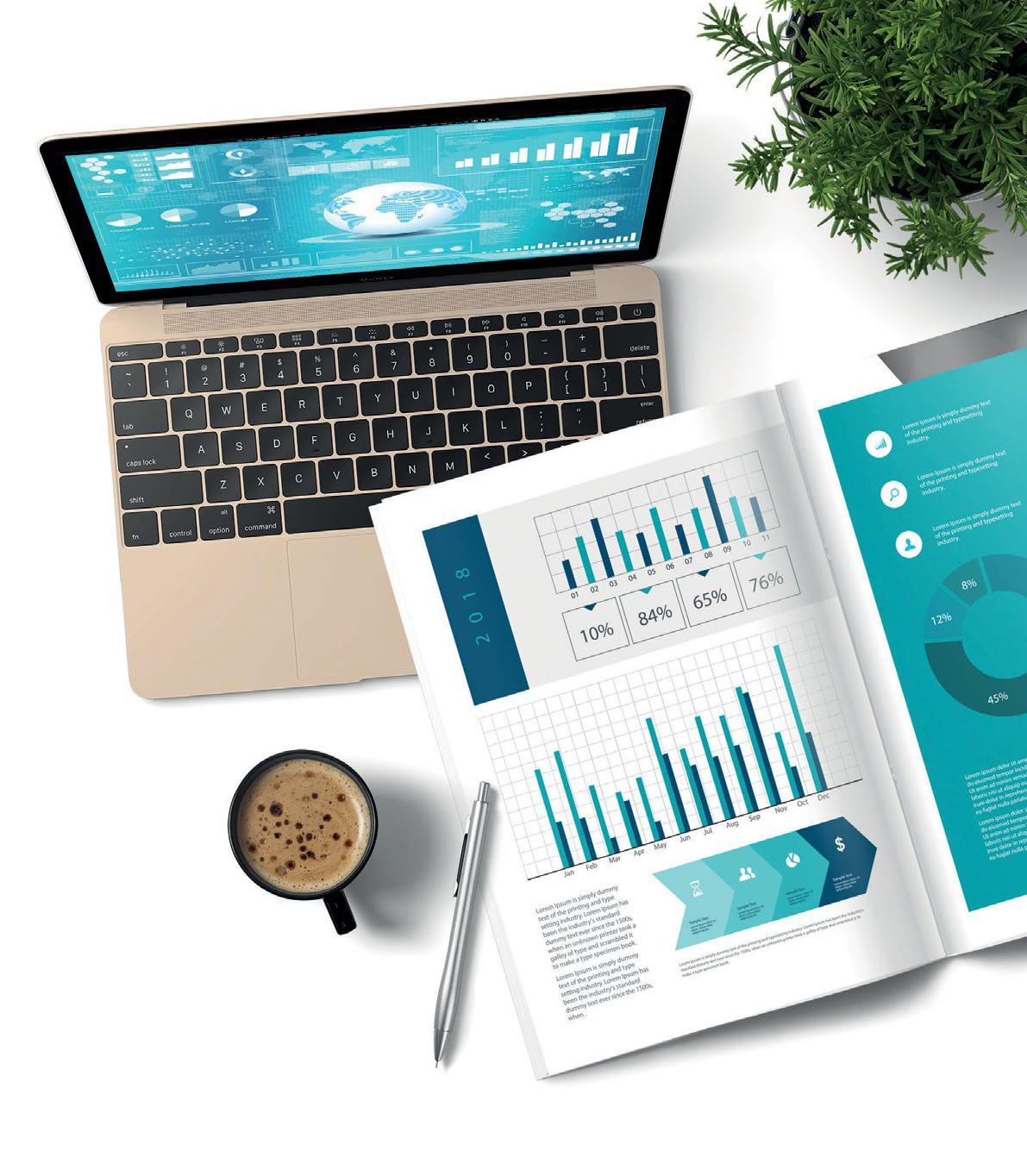
PERSONAL FINANCE | 2 nd QUARTER 2020 57
WHERE TO GET HELP
With BANKING problems:
The Ombudsman for Banking Services is Reana Steyn.
ShareCall: 0860 800 900 or Telephone: 011 712 1800
Fax: 011 483 3212
Post: PO Box 87056, Houghton, 2041
Email: info@obssa.co.za
Website: www.obssa.co.za
With COMMUNITY-SCHEME-RELATED problems: The Community Schemes Ombud Service is a statutory dispute-resolution service for owners and residents of community schemes, including sectional-title schemes share-block companies, homeowners’ associations and schemes for retired persons. The Acting Chief Ombud is Advocate Ndivhuo Rabuli.
Telephone: 010 593 0533
Fax: 010 590 6154
Post: 63 Wierda Road East, Wierda Valley, Sandton, 2196
Email: info@csos.org.za
Website: www.csos.org.za
With CONSUMER-RELATED problems: The Acting National Consumer Commissioner is Ebrahim Mohamed Thezi Mabuza.
Toll-free: 0860 003 600
Telephone: (complaints) 012 428 7000 or (switchboard) 012 428 7726
Fax: 086 758 4990
Post: PO Box 36628, Menlo Park, 0102
Email: complaints@thencc.org.za
Website: www.thencc.gov.za
The Consumer Goods and Services Ombud is Magauta Mphahlele. This is a voluntary dispute-resolution scheme that only has jurisdiction over retailers, wholesalers and manufacturers that subscribe to the Consumer Goods and Services Industry Code of Conduct.
ShareCall: 0860 000 272
Fax: 086 206 1999
Post: PO Box 3815, Randburg, 2125
Email: info@cgso.org.za
Website: www.cgso.org.za
With CREDIT TRANSACTION problems: The Acting Credit Ombud is Howard Gabriele.
MaxiCall: 0861 662 837
Telephone: 011 781 6431
Fax: 086 674 7414
Post: PO Box 805, Pinegowrie, 2123
Email: ombud@creditombud.org.za
Website: www.creditombud.org.za
With DEBT COUNSELLING problems: The National Credit Regulator also deals with disputes that are not resolved by the Credit Ombud. The Chief Executive Officer is Nomsa Motshegare.
ShareCall: 0860 627 627
Telephone: 011 554 2600
Fax: 011 554 2871
Post: PO Box 209, Halfway House, 1685
Email: complaints@ncr.org.za or (debt counselling complaints) dccomplaints@ncr.org.za
Website: www.ncr.org.za
With FIDUCIARY problems: The Fiduciary Institute of Southern Africa (FISA) is a selfregulating body in fiduciary matters such as wills, trusts and estate planning.
Telephone: 082 449 2569
Post: PO Box 67027, Bryanston, 2021
Email: secretariat@fisa.net.za
Website: www.fisa.net.za
With FINANCIAL ADVICE problems: The Ombud for Financial Services Providers is Naresh Tulsie.
Telephone: 012 470 9080 or 012 762 5000
Fax: 086 764 1422, 012 348 3447 or 012 470 9097
Post: PO Box 74571, Lynnwood Ridge, 0040
Email: info@faisombud.co.za
Website: www.faisombud.co.za
With INVESTMENT problems:
The Financial Sector Conduct Authority, which is headed by Dube Tshidi, regulates the financial services industry.
ShareCall: 0800 110 443 or 0800 202 087
Telephone: 012 428 8000
Fax: 012 346 6941
Post: PO Box 35655, Menlo Park, 0102
Email: info@fsb.co.za
Website: www.fsb.co.za
With LIFE ASSURANCE problems:
The Ombudsman for Long-term Insurance is Judge Ron McLaren.
ShareCall: 0860 103 236 or Telephone: 021 657 5000
Fax: 021 674 0951
Post: Private Bag X45, Claremont, 7735
Email: info@ombud.co.za
Website: www.ombud.co.za
With MEDICAL SCHEME problems:
The Council for Medical Schemes is a statutory body that supervises medical schemes. The Acting Registrar of Medical Schemes is Dr Sipho Kabane.
MaxiCall: 0861 123 267
Fax: (enquiries) 012 430 7644 or (complaints) 086 673 2466
Post: Private Bag X34, Hatfield, 0028
Email: complaints@medicalschemes.com or information@medicalschemes.com
Website: www.medicalschemes.com
With MOTOR VEHICLE problems:
The Motor Industry Ombudsman of South Africa is an independent institution that resolves disputes between the motor and related industries and their customers. The Ombudsman is Johan van Vreden.
MaxiCall: 0861 164 672
Fax: 086 630 6141
Post: Suite 156, Private Bag X025, Lynnwood Ridge, 0040
Email: info@miosa.co.za
Website: www.miosa.co.za
With RETIREMENT FUND problems: The Pension Funds Adjudicator is Muvhango Lukhaimane.
ShareCall: 0860 662 837
Telephone: 012 748 4000 or 012 346 1738
Fax: 086 693 7472
Post: PO Box 580. Menlyn, 0063
Email: enquiries@pfa.org.za
Website: www.pfa.org.za
With SHORT-TERM INSURANCE problems: The Ombudsman for Short-term Insurance is Judge Ron McLaren.
ShareCall: 0860 726 890 or Telephone: 011 726 8900
Fax: 011 726 5501
Post: PO Box 32334, Braamfontein, 2017
Email: info@osti.co.za
Website: www.osti.co.za
With TAX problems: The Tax Ombud is Judge Bernard Ngoepe.
ShareCall: 0800 662 837 or Telephone: 012 431 9105
Fax: 012 452 5013
Post: PO Box 12314, Hatfield, 0028
Email: complaints@taxombud.gov.za
Website: www.taxombud.gov.za
NOT SURE WHERE TO TAKE YOUR COMPLAINT? Call 0860 OMBUDS (662837) and you will be directed to the correct ombud or adjudicator.
DATABANK PERSONAL FINANCE | 2 nd QUARTER 2020 58
PERFORMANCE OF DOMESTIC SUB-CATEGORIES TO 31 MARCH 2020
DOMESTIC MANAGEMENT COMPANY RATINGS
PERFORMANCE OF OFFSHORE SUB-CATEGORIES TO 31 MARCH 2020
PERFORMANCE OF DOMESTIC FUNDS TO 31 MARCH 2020
OFFSHORE MANAGEMENT COMPANY RATINGS
PERFORMANCE OF OFFSHORE FUNDS TO 31 MARCH 2020
WHAT DO THE PLEXCROWN FUND RATINGS TELL YOU?
The last column in the collective investment scheme performance tables on pages 58 to 69 shows the PlexCrown rating of a fund if it qualifies for a rating. The PlexCrown Fund Ratings system encompasses the different quantitative measures used in calculating investment performances in one number and makes it easy for investors to evaluate fund managers on the basis of their long-term risk-adjusted returns.
The PlexCrown Fund Ratings enable investors to know at a glance how a unit trust fund has fared over time on a risk-adjusted return basis, compared with the other funds in its Association for Savings & Investment SA subcategory. Therefore, the ratings assist investors in determining whether or not a fund manager is adding value to their unit trust investments, given the manager’s mandate and the amount of risk he or she is taking.
The PlexCrown Fund Ratings are unbiased and objective because they are based on quantitative measures; no

subjectivity is brought into the research methodology.
In calculating risk-adjusted returns, the methodology accepts that various quantitative formulae each have their unique drawbacks. In order to overcome this, up to five different risk measures are used:
• Total risk (Sharpe Ratio);
• Downside risk (Sortino Ratio and Omega Risk/Reward Measure); and
• Manager’s skill (Jensen’s Alpha and Treynor).
The research method ensures that the unit trust funds under evaluation are exposed to similar risks; therefore, the subcategories for unclassified funds and money market funds are excluded.
The PlexCrown rating system is a measure of consistency because ratings are done over three and five years and are time weighted, with the emphasis on the longer period of measurement. Funds within a unit trust subcategory are ranked only if there are at least five funds in that subcategory with a
track record of at least five years. To qualify for a rating, a fund must have an official track record of at least five years.
Each qualifying unit trust fund is awarded a certain number of PlexCrowns ranging from one to five, with the top-performing funds allocated the highest rating of five.
The PlexCrown ratings distinguish between poor performers and excellent performers, but are based on historical data and should be used only as a first step in the construction of a unit trust portfolio. It remains the responsibility of investors together with their financial advisers, to make sure that the funds they choose suit their risk profiles and that their investment plans include an appropriate level of diversification.
Visit www.plexcrown.com for a full description of the PlexCrown Fund Ratings system.
DATABANK PERSONAL FINANCE | 2 nd QUARTER 2020 59
BEST SUBCATEGORIES RETURN FIRST QUARTER Regional Interest Bearing Short Term 27.10% ONE YEAR Worldwide Equity Unclassified 52.50% THREE YEARS Worldwide Equity Unclassified 17.25% FIVE YEARS South African Equity Resources 11.75% WORST SUBCATEGORIES RETURN FIRST QUARTER South African Real Estate General -45.32% ONE YEAR South African Real Estate General -45.73% THREE YEARS South African Real Estate General -21.94% FIVE YEARS South African Real Estate General -12.79%
BEST SUBCATEGORIES RETURN FIRST QUARTER US Fixed Interest Bond 30.17% ONE YEAR US Fixed Interest Bond 26.75% THREE YEARS US Equity General 12.01% FIVE YEARS US Equity General 11.33% WORST SUBCATEGORIES RETURN FIRST QUARTER US Fixed Interest Bond -8.17% ONE YEAR UK Equity General -4.15% THREE YEARS UK Equity General 3.09% FIVE YEARS UK Equity General 3.04%
BEST FUNDS RETURN FIRST QUARTER Krugerrand Custodial Certificates ETF 33.86% ONE YEAR Old Mutual Gold Fund (R) 52.50% THREE YEARS IP Global Momentum Equity Fund (A) 24.26% FIVE YEARS Ninety One Global Franchise Feeder Fund (H) 15.56% WORST FUNDS RETURN FIRST QUARTER Select BCI Property Fund (A) -52.93% ONE YEAR Select BCI Property Fund (A) -53.37% THREE YEARS Nedgroup Investments Property Fund (A) -30.15% FIVE YEARS Nedgroup Investments Property Fund (A) -17.48%
BEST FUNDS RETURN FIRST QUARTER Peregrine Global Bond Fund 34.64% ONE YEAR Thibault Worldwide Flexible Fund 41.65% THREE YEARS Franklin Technology Fund 27.50% FIVE YEARS Franklin Technology Fund 23.46% WORST FUNDS RETURN FIRST QUARTER Contrarius Global Equity Fund -48.18% ONE YEAR Contrarius Global Equity Fund -55.89% THREE YEARS Contrarius Global Equity Fund 20.41% FIVE YEARS Franklin Natural Resources Fund -11.00%
AS AT DECEMBER 31, 2019 Management company PlexCrowns 4.331 Mi-Plan 4.169 Ninety One 3.867 Allan Gray 3.867 Prescient 3.658 Discovery 3.633 Nedgroup Investments 3.449 Coronation 3.440 Alexander Forbes 3.391 Oasis 3.282 Momentum 3.148 Stanlib 3.145 Boutique Collective Investments 3.133 Absa 2.944 IP Management Company 2.904 Marriott 2.869 Ashburton 2.739 Prudential 2.620 Old Mutual 2.365 PSG 1.961
AS AT 31 MARCH, 2020 Management company PlexCrowns T Rowe Price 4.425 Foord 4.000 Marriott 3.750 VAM Global Management Company SA 3.667 Coronation 3.500 Nedgroup Investments International 3.500 Schroder 3.444 Stanlib 3.367 Momentum 3.250 Sanlam 3.250 Sarasin 3.250 Alexander Forbes Investments (Jersey) 3.000 Standard Bank 2.875 Investec 2.850 PineBridge 2.750 Ashburton 2.583 Orbis 2.583 Investec World Axis PCC 2.500 Lloyds 2.167 PSG 2.125 Franklin Templeton 2.094 Dodge and Cox 2.000 Oasis 2.000 Prescient 2.000
PLEXCROWN RANKING OF MANAGEMENT COMPANIES
Information in the above tables was provided by PlexCrown Fund Ratings and ProfileData
COLLECTIVE INVESTMENT SCHEME PERFORMANCE TO MARCH 31, 2020
ABOUT THE LISTINGS
• Results are based on the performance of a lump-sum investment over four periods that ended on MARCH 31, 2020. In each of the periods, there is a percentage (to two decimal places) by which an investment would have grown or shrunk, and the fund’s position or rank relative to other funds.
• Returns for the three- and five-year periods are annualised (that is, the percentage represents the average performance in a year). As unit trust funds are medium- to long-term investments, the most important performance periods are those of three years or longer.
• INITIAL COSTS have not been taken into account and can have an effect on returns.
• ANNUAL MANAGEMENT FEES are included in the returns.
• DIVIDENDS have been reinvested on the ex-dividend date (the day after they are declared) at the price at which the units are sold to you.
• INDICES normally supplied as benchmarks reflect percentage changes and take into account dividends and interest. In the case of new indices, a history is not yet available.
• The PLEXCROWN RATING indicates how a fund has fared over time compared with the other funds in its subcategory on a risk-adjusted return basis. Turn to page 57 for more information about the ratings.
WHAT DOES THE * INDICATE?
The asterisk (*) before a fund’s name indicates that the fund complies with the investment requirements of Regulation 28 of the Pension Funds Act. Funds suitable for retirement savings must comply with Regulation 28, which lays down guidelines about Inv. in different categories of assets. To reduce the risk and volatility of a fund, the Act restricts exposure to equities to a maximum of 75 percent of the fund and its exposure to property to 25 percent.
HOW FUNDS ARE CLASSIFIED
The Association for Savings & Investment SA’s classification system categorises unit trust funds according to their investment universe: where they invest, what they invest in and their main investment focus.
The first tier of the classification system categorises funds as South African, global, worldwide or regional.
South African funds must invest at least 70 percent of their assets in South African investment markets at all times. They may invest a maximum of 25 percent in foreign markets and a maximum of five percent in African (excluding South African) markets.
Global funds must invest a minimum of 80 percent of their assets outside SA. Worldwide funds do not have any restrictions on where they may invest but they typically allocate between South African and foreign markets in line with the manager’s outlook for local versus foreign assets.
Regional funds must invest at least 80 percent of their assets in a specific geographic region, such as Asia or Africa, excluding South Africa, or a country such as the United States. Regional funds may invest a maximum of 20 percent of their assets in South Africa.
The second tier of the classification system categorises funds according to the asset class in which they predominantly invest. At this level, funds are categorised as equity funds, interest-bearing funds, real estate funds or multi-asset funds.
Equity funds must invest at least 80 percent of the net asset value of a fund.
Interest-bearing funds invest in bonds, fixed interest and money-market instruments.
Real estate funds must invest at least 80 percent of their assets in shares in the real estate sector of the JSE or a similar sector of an international stock exchange. A fund may invest a maximum of 10 percent in property shares that are not classified in the real estate sector.
Multi-asset funds save you the trouble of deciding how to allocate your assets between shares, bonds, property or cash. The managers of multi-asset funds decide, for you, which asset classes they believe will produce the best returns and then, within those classes, which securities will perform the best. Some funds have a fixed allocation to the different asset classes whereas others change the mix of asset classes in line with their views of how the different classes or securities will perform.
DATABANK PERSONAL FINANCE | 2 nd QUARTER 2020 60
NAME 6 MONTHS 1 YEAR 3 YEARS 5 YEARS PLEX CROWNS % RANK % RANK % RANK % RANK SOUTH AFRICAN EQUITY GENERAL FUNDS 36One BCI Equity (A) -2,88 3 0,15 2 3,59 1 2,79 1 5 BlueAlpha BCI Select Equity (A) -7,05 7 -8,86 11 2,59 2 1,67 3 5 Element Islamic Equity SCI (A) -8,81 9 -7,38 7 1,28 3 2,70 2 5 Counterpoint SCI Value (A1) -6,59 5 -8,41 9 1,24 4 0,84 9 4 Dynasty Ci Wealth Accumulator (A2) -11,17 15 -9,59 12 1,14 5 0,31 12 4 Autus Prime Equity (A) -9,22 10 -10,22 13 0,71 6 1,18 8 5 Methodical Equity Prescient (A1) -4,57 4 -2,12 3 0,65 7 Oasis Crescent Equity (D) -2,17 2 -4,60 4 0,36 8 1,57 4 4 Rezco Equity (A) -10,74 13 -7,72 8 0,33 9 1,43 5 4 IFM Technical (A) 6,93 1 11,94 1 0,15 10 -1,19 30 3 Stanlib Equity (A) -13,52 24 -13,27 23 -1,20 11 -0,93 25 4 Gryphon All Share Tracker (A) -15,50 34 -17,06 33 -1,49 12 0,14 14 African Alliance Equity Prescient (A1) -12,25 20 -13,45 24 -1,53 13 -3,09 66 3 Absa Prime Equity (A) -16,22 39 -17,18 34 -1,62 14 0,38 11 5 Citadel SA Multi Factor Eqt H4 (B1) -18,25 57 -19,84 58 -1,68 15 Stonehage Fleming SCI Equity (A1) -7,46 8 -6,09 5 -1,70 16 Satrix Quality Index (A1) -21,27 107 -23,87 110 -1,79 17 Aluwani Top 25 (A) -14,96 29 -16,61 31 -1,98 18 -1,32 32 4 Coronation Equity (A) -11,84 16 -12,57 19 -2,00 19 0,28 13 4 Ninety One Equity (A) -15,39 31 -15,83 29 -2,10 20 -0,69 22 Warwick BCI Equity (B) -10,57 11 -8,79 10 -2,20 21 CoreShares Top 50 ETF -19,73 83 -21,18 81 -2,25 22 Sygnia Active Equity (A) -18,32 59 -18,76 46 -2,26 23 -1,01 27 5 Sasfin BCI Equity (A) -12,83 21 -11,55 14 -2,28 24 -1,67 38 3 APS Ci Equity (A1) -12,22 19 -12,81 21 -2,36 25 -1,52 35 4 Truffle SCI General Equity (A) -17,02 43 -18,25 41 -2,65 26 -1,08 28 4 Marriott Dividend Growth (R) -13,49 23 -12,42 18 -2,69 27 -1,55 36 2 Kagiso Islamic Equity (A) -19,28 71 -19,34 51 -2,84 28 1,31 6 4 Satrix Alsi Index (A1) -18,02 53 -19,06 49 -2,90 29 -0,97 26 Discovery Equity -13,61 25 -12,14 16 -3,01 30 -0,07 15 4 36One BCI SA Equity (C) -15,47 33 -15,17 28 -3,08 31 -1,14 29 4 Sanlam Inv. Man. Top Choice Equity (A1) -19,01 67 -19,39 53 -3,14 32 -0,57 20 5 Counterpoint SCI Dividend Equity (A1) -20,79 95 -18,82 47 -3,18 33 -0,46 18 3 Sanlam Select Optimised Equity (B4) -18,28 58 -18,98 48 -3,31 34 -1,85 42 3 Coronation Top 20 (A) -14,45 28 -16,35 30 -3,32 35 -0,54 19 4 Optimum BCI Equity (A) -18,21 55 -20,64 69 -3,36 36 27four Shariah Active Equity Prescient (A1) -10,73 12 -12,87 22 -3,41 37 -0,19 16 3 Sanlam Private Wealth Equity (A1) -16,63 42 -21,03 76 -3,49 38 -0,87 24 4 Satrix Momentum Index (A1) -21,97 115 -19,87 59 -3,62 39 -1,92 43 Select Manager BCI Equity (A) -16,28 40 -17,95 40 -3,70 40 -2,24 50 3 Mi-Plan IP Beta Equity (B2) -17,74 51 -18,64 44 -3,76 41 -1,77 39 3 Community Growth Equity (A) -20,55 93 -21,86 91 -3,85 42 -2,65 55 4 Aylett Equity Prescient (A1) -22,29 120 -23,06 100 -3,87 43 0,58 10 4 Kagiso Equity Alpha (A) -22,86 127 -21,21 83 -3,89 44 -0,25 17 5 Fairtree Equity Prescient (A1) -22,87 128 -23,82 109 -3,90 45 -0,75 23 5 H4 Focused Wealth (A1) -17,34 49 -19,38 52 -3,92 46 -2,03 45 Prudential Dividend Maximiser (A) -18,86 64 -20,18 64 -3,92 47 -1,36 33 4 Cratos BCI Equity (A) -6,87 6 -6,86 6 -3,97 48 Dalebrook Equity Prescient (A2) -17,49 50 -20,80 71 -3,97 49 -5,01 86 2 Stanlib M-M Diversified Equity FoF (A) -17,27 48 -17,80 37 -4,22 50 -1,37 34 3 Obsidian SCI Equity (B3) -19,32 73 -18,45 43 -4,35 51 Hollard Prime Equity (B) -17,05 44 -17,94 39 -4,43 52 -2,65 56 3 Satrix Divi ETF -29,90 173 -31,80 162 -4,52 53 -3,07 64 Aeon Smart Multi-Factor Equity Prescient (A1) -19,33 74 -21,40 86 -4,55 54 -2,11 47 4 Matrix NCIS Equity (C) -21,73 112 -23,38 106 -4,55 55 Select BCI Equity (A) -11,85 17 -17,21 35 -4,57 56 -2,79 60 2 Prescient Core Equity (A2) -19,64 81 -21,05 78 -4,68 57
MONEY MARKET YIELDS
The third tier of the classification system categorises funds according to their main investment focus.
WHAT DOES THE ‘R’ OR ‘A’ MEAN?
These indicate the annual management fees a unit trust company can charge and depend partly on the class of units you buy.
Before June 1998, the fees charged on funds were regulated with a maximum annual management fee of one percent a year plus VAT. Funds launched before this date have the letter “R” behind the fund name and can only change their fees after a ballot of all unit trust holders. Many unit trust companies have closed their “R” class funds to new investments and launched new fund classes.
Funds and fund classes launched after June 1998 can charge any fees. Typically, fees range from 0.25 percent to 2 percent, excluding VAT. Funds with unregulated fees can be “A”, “B”, “C” or “D” class funds.
Typically, “A” class funds are offered to retail investors while cheaper “B” class funds are for institutional investors who invest in bulk. Only the institutional funds available to you through a linked-investment services provider (Lisp) are published here.
The different classes of a single fund are managed collectively and the difference in performance between them is purely a result of the difference in management fees.
Most recently what are known as all-in-fee classes (“C” or “D” classes) have been introduced. These funds charge a single fee covering the management fee, the broker fee and the administration (or Lisp) fee.
Performance figures supplied by ProfileData

Telephone: 011 728 5510
Email: unittrust@profile.co.za
Website: www.fundsdata.co.za
Disclaimer: Although all reasonable efforts have been made to publish the correct data, neither ProfileData nor Personal Finance can guarantee the accuracy of the information on the unit trust fund performance pages.
DATABANK PERSONAL FINANCE | 2 nd QUARTER 2020 61
FUND NAME ANNUALISED YIELD TO 31 MARCH 2020 CLASS Absa Money Market Fund 6,19 A ACI Money Market Fund 7,20 A1 Afena Money Market Prescient Fund 6,22 A1 Allan Gray Money Market Fund 7,26 A Ashburton Money Market Fund 6,98 B1 BCI Money Market Fund 7,03 A Cadiz Money Market Fund 7,62 A Cannon Money Market H4 Fund 6,88 A Cartesian BCI Money Market Fund 8,80 A Citadel SA Money Market H4 Fund 6,86 B1 Coronation Money Market Fund 6,83 A Discovery Money Market Fund 6,68 A Fairtree Money Market Prescient Fund 6,22 A1 Glacier Money Market Fund 6,89 A Granate SCI Money Market Fund 7,17 B Gryphon Money Market Fund 7,96 A Hollard Prime Money Market Fund 6,95 B Ninety One Money Market Fund 6,89 R Marriott Money Market Fund 6,43 A Momentum Money Market Fund 7,17 A Nedgroup Investments Money Market Fund 6,48 R Ngwedi Money Market Fund 4,06 I1 Oasis Money Market Fund 9,39 A Old Mutual Money Market Fund 6,83 A Old Mutual Multi-Managers Money Market Fund 6,81 A Prescient Money Market Fund 7,08 A Prime Money Market Fund 6,39 A Prudential Money Market Fund 6,95 A PSG Money Market Fund 8,43 A RECM Money Market Fund 6,69 A Satrix Money Market Fund 7,51 A1 SIM Money Market Fund 7,22 R SNN Money Market Fund 3,78 A1 Stanlib Money Market Fund 7,04 R NAME 6 MONTHS 1 YEAR 3 YEARS 5 YEARS PLEX. % RANK % RANK % RANK % RANK Prudential Equity (A) -20,08 87 -23,90 111 -4,79 58 -1,80 40 3 Melville Douglas Stanlib High Alpha (A) -19,48 76 -21,09 79 -4,91 59 -2,72 58 3 PortfolioMetrix BCI Equity FoF (A) -21,17 104 -22,29 95 -4,94 60 -2,91 62 Sygnia Divi Index (A) -30,44 175 -32,37 166 -4,96 61 -3,42 69 1nvest Index (R) -19,78 84 -21,01 75 -4,97 62 -2,61 54 Sanlam Inv. Man. General Equity (A) -20,25 88 -20,73 70 -4,99 63 -2,55 52 4 Satrix Dividend + Index (A1) -30,17 174 -32,28 165 -5,02 64 -3,56 72 Momentum Equity (A) -19,48 77 -21,32 85 -5,14 65 -2,69 57 3 FG IP Mercury Equity FoF (A) -18,36 61 -19,82 57 -5,16 66 -2,79 59 3 Satrix Rafi 40 ETF (A) -25,83 154 -28,52 146 -5,27 67 -1,58 37 Ninety One SA Equity (E) -19,72 82 -21,54 88 -5,31 68 Lynx Prime CI Opportunities FoF (A1) -16,01 37 -18,65 45 -5,33 69 -2,18 48 Absa Select Equity (A) -19,31 72 -20,93 74 -5,36 70 -3,51 71 3 Old Mutual Rafi 40 Index (A) -25,80 153 -28,33 145 -5,36 71 -2,10 46 Satrix Rafi 40 Index (A1) -25,97 156 -28,55 148 -5,46 72 -2,00 44 Sygnia Swix Index (A) -20,79 96 -22,23 94 -5,49 73 -2,86 61 Dotport BCI Equity (B) -20,41 91 -21,84 90 -5,49 74 Analytics Ci Man Equity (A) -18,49 62 -20,26 65 -5,49 75 -3,16 68 3 Absa Smart Alpha Equity (A) -17,93 52 -20,56 67 -5,54 76 Oasis General Equity (D) -15,87 36 -19,61 54 -5,67 77 -2,23 49 2 Cadiz Equity (A) -20,40 90 -23,14 101 -5,69 78 -1,83 41 3 AF Investments Equity FoF (A) -18,71 63 -19,81 56 -5,81 79 -0,61 21 4 Personal Trust SA Equity (A) -20,34 89 -21,45 87 -5,88 80 -3,12 67 3 Coronation SA Equity (A) -15,76 35 -17,87 38 -6,12 81 Fairtree Smart Beta Prescient (A1) -27,70 164 -30,00 154 -6,14 82 Ashburton Equity (A1) -18,22 56 -21,04 77 -6,17 83 Sentio SCI Hikma Shariah General Equity (B1) -17,05 45 -20,81 72 -6,18 84 Ashburton M-M Equity (A1) -18,95 66 -20,47 66 -6,24 85 BCI Best Blend Specialist Equity (C) -21,05 101 -22,85 99 -6,31 86 -3,61 74 3 Allan Gray Equity (A) -21,20 105 -24,34 115 -6,38 87 -1,25 31 3 M1 Capital Equity Prescient (A1) -13,74 26 -12,22 17 -6,38 88 -2,97 63 3 Absa SA Core Equity (A) -22,12 116 -24,01 113 -6,46 89 Laurium Equity Prescient (A1) -25,01 148 -26,77 135 -6,60 90 -4,27 79 3 Element Earth Equity SCI (A) -23,37 135 -25,31 127 -6,63 91 -2,50 51 3 Sygnia Equity (A) -20,41 92 -22,05 93 -6,78 92 -3,89 77 3 Old Mutual Albaraka Equity (A) -21,02 98 -21,20 82 -6,91 93 -2,56 53 2 PSG Wealth Creator FoF (A) -21,49 111 -24,16 114 -6,98 94 -3,50 70 ClucasGray Equity Prescient (A1) -25,95 155 -30,33 155 -7,14 95 -3,58 73 3 Caleo BCI Equity (A) -18,34 60 -20,01 63 -7,31 96 N-e-FG BCI Equity (A) -18,92 65 -21,18 80 -7,48 97 -4,10 78 3 Huysamer Equity Prescient (A) -18,20 54 -21,89 92 -7,54 98 -5,61 93 2 PPS Equity (A) -22,32 121 -24,54 117 -7,55 99 -4,53 80 Denker SCI Equity (A) -19,09 70 -19,87 60 -7,56 100 -4,71 81 2 Afena Equity Prescient (A1) -25,55 151 -28,54 147 -7,79 101 -4,92 84 3 Anchor BCI Equity (A) -23,56 137 -25,68 130 -7,82 102 -3,81 76 3 Bateleur Equity Prescient (B4) -21,04 100 -25,72 131 -7,97 103 FNB Growth (A) -21,24 106 -23,95 112 -7,98 104 -4,71 82 2 Maestro Equity Prescient (A) -14,37 27 -15,02 27 -8,01 105 -5,89 97 1 Trésor SCI Equity (B1) -19,36 75 -23,74 107 -8,20 106 Integral BCI Equity (A) -14,97 30 -18,41 42 -8,20 107 Old Mutual MM Equity FoF (A) -22,37 123 -26,38 133 -8,27 108 -4,71 83 3 Visio BCI General Equity (A) -20,07 86 -23,35 104 -8,34 109 -5,12 88 2 Prudential SA Equity (F) -26,39 159 -30,71 159 -8,46 110 RECM Equity (B) -19,50 78 -20,58 68 -8,57 111 -3,08 65 3 Sygnia Growth Equity (A) -21,36 109 -26,09 132 -8,66 112 Sanlam Multi Managed Equity FoF (A2) -21,31 108 -22,68 97 -8,74 113 -5,76 95 2 Nedgroup Inv. Rainmaker (A) -23,66 139 -27,40 140 -8,80 114 -5,21 89 3 Ampersand SCI Equity (B) -24,74 145 -29,04 151 -9,30 115 -5,75 94 2 Stanlib SA Equity (A) -23,89 140 -27,39 139 -9,41 116 -7,16 107 2 IP High Conv Eqt (A) -22,36 122 -28,80 150 -9,64 117 -6,51 101 2
DATABANK PERSONAL FINANCE | 2 nd QUARTER 2020 62 NAME 6 MONTHS 1 YEAR 3 YEARS 5 YEARS PLEX. % RANK % RANK % RANK % RANK NAME 6 MONTHS 1 YEAR 3 YEARS 5 YEARS PLEX. % RANK % RANK % RANK % RANK Allan Gray SA Equity (A) -27,43 162 -31,99 163 -9,94 118 -3,71 75 3 Mergence Equity Prime (A1) -24,55 143 -26,41 134 -9,99 119 -4,94 85 1 Ninety One Value (A) -25,99 157 -21,64 89 -10,14 120 1,26 7 Old Mutual Investors (A) -27,88 165 -30,46 157 -10,22 121 -6,37 99 2 CoreShares SA Dividend Aristocrats -23,28 133 -24,82 119 -10,24 122 -5,10 87 Foord Equity (A) -19,87 85 -22,50 96 -10,25 123 -6,29 98 Old Mutual Managed Alpha Equity (A) -22,38 124 -25,13 124 -10,29 124 -5,58 92 2 Mazi Asset Management Prime Equity (A) -25,04 149 -30,63 158 -10,36 125 -5,34 91 2 Nedgroup Inv. Value (A) -23,15 130 -26,82 136 -10,70 126 -5,28 90 1 Nedgroup Inv. Private Wealth Equity (A) -24,41 141 -24,86 120 -10,74 127 -5,85 96 2 Bridge Equity Income Growth (A) -25,59 152 -27,43 141 -11,02 128 -6,38 100 2 First Avenue SCI Equity (B1) -22,27 118 -23,29 102 -11,09 129 -6,68 103 1 Harvard House BCI General Equity (A) -17,09 46 -19,94 61 -11,55 130 -6,62 102 1 First Ave SCI Focused Quality Equity (A) -21,11 103 -22,76 98 -11,68 131 -6,90 105 1 Perpetua SCI Equity (A) -27,47 163 -29,07 152 -12,13 132 -6,97 106 2 Nedgroup Inv. Growth (A) -30,64 176 -35,17 168 -12,15 133 -7,22 108 2 Integrity Equity Prescient (A1) -28,01 166 -31,56 160 -12,59 134 Excelsia Equity ACI (A1) -29,29 171 -32,01 164 -13,90 135 Cannon Equity H4 (A) -24,94 147 -30,46 156 -14,51 136 -8,00 109 1 PSG Equity (A) -32,31 178 -37,58 169 -14,97 137 -6,79 104 Steyn Capital Equity Prescient (A1) -28,86 168 -34,05 167 -15,70 138 PSG SA Equity (D) -37,76 180 -44,02 172 -19,99 139 -11,06 110 1 Kruger Ci Equity (A) -12,12 18 -11,76 15 BCI Shariah Equity (C) -11,03 14 -12,75 20 1nvest Sector Neutral Momentum Ind. Tr. (A) -16,04 38 -13,53 25 Momentum Trending Equity (A) -16,45 41 -13,75 26 Absa Top 40 Index (A) -15,45 32 -16,72 32 1nvest Sector Neutral Grwth & Qlty Ind. Tr. (A) -13,03 22 -17,76 36 Sygnia Itrix Swix 40 ETF -17,23 47 -19,11 50 Satrix Momentum ETF -21,78 113 -19,63 55 Momentum Core Equity (A) -19,63 80 -20,00 62 Colourfield BCI Equity (B) -21,04 99 -20,83 73 Prime South African Equity (A) -19,53 79 -21,30 84 Aeon Active Equity Prescient (A1) -20,84 97 -23,30 103 Satrix Quality South Africa ETF -21,07 102 -23,37 105 NewFunds Low Volatility Equity ETF -29,04 170 -23,79 108 Prescient Core Capped Equity (A2) -22,81 125 -24,51 116 Benguela Equity ACI (A1) -20,57 94 -24,67 118 Momentum Capped Swix Index (A) -22,84 126 -24,86 121 Denker SCI SA Equity (B1) -23,29 134 -25,03 122 All Weather BCI Equity (B2) -22,13 117 -25,07 123 Foundation BCI Equity (A) -25,04 150 -25,27 125 Old Mutual Equity (A) -24,47 142 -25,29 126 Old Mutual Capped Swix Index (A) -23,24 132 -25,34 128 Satrix Capped Swix Alsi (A1) -23,16 131 -25,40 129 Sentio SCI General Equity (B2) -24,84 146 -26,90 137 Visio BCI SA Equity (B8) -23,64 138 -27,04 138 CoreShares Sci Beta MF Index (A) -26,74 160 -27,49 142 Fairtree Select Equity Prescient (A1) -28,34 167 -27,81 143 Satrix Mid Cap Index (A1) -27,34 161 -27,83 144 Northstar SCI Equity (A) -24,68 144 -28,71 149 Momentum Value Equity (A) -28,92 169 -29,31 153 Absa Dividend Plus Index (A) -29,73 172 -31,60 161 1nvest Sector Neutral Value Ind. Tr. (A) -31,95 177 -38,40 170 *NewFunds Value Equity ETF -34,22 179 -39,34 171 Amity BCI Equity Income (A) -19,02 68 Select BCI Enhanced Equity (A) -19,05 69 Satrix Smartcore Index (A1) -21,43 110 Global & Local SNN Low Volatility Equity (A) -21,82 114 Lima Mbeu SCI Equity (A1) -22,27 119 Global & Local SNN Equity (A) -22,98 129 X-Chequer BCI Equity (A) -23,38 136 CoreShares Scientific Beta Multi Factor ETF -26,37 158 FTSE/JSE All Share index (J203) -17,74 -18,42 -2,07 -0,13 INDUSTRIAL FUNDS Sanlam Inv. Man. Industrial (A) -1,00 1 0,65 1 -1,06 1 0,72 1 Satrix Capped Indi (A) -7,96 2 -6,55 2 -1,67 2 0,53 2 Coronation Industrial (P) -9,71 4 -8,62 4 -4,97 3 -0,89 3 Momentum Industrial (A) -8,24 3 -7,68 3 -5,64 4 -2,52 4 FTSE/JSE Industrial index (J257) -8,44 -7,18 -1,89 0,55 LARGE CAP FUNDS Kagiso Top 40 Tracker (R) -13,64 1 -14,85 2 -0,45 1 0,11 6 Ashburton Top40 ETF -15,42 4 -16,21 3 -0,52 2 0,37 2 1nvest Top 40 (A) -15,38 3 -16,22 4 -0,55 3 0,47 1 Prescient Equity Top 40 (A1) -15,35 2 -16,28 5 -0,67 4 0,19 4 5 Satrix 40 (A) -15,76 9 -16,56 7 -0,68 5 0,21 3 1nvest Alsi 40 (A) -15,72 8 -16,67 9 -0,94 6 0,11 5 Momentum Top 40 Index (A) -15,60 7 -16,67 10 -1,09 7 -0,11 7 Satrix Top 40 Index (A1) -15,87 10 -16,86 11 -1,10 8 -0,23 8 Old Mutual Top 40 Index (A) -15,57 5 -16,65 8 -1,13 9 -0,30 9 Sygnia Top 40 Index (A) -16,76 11 -17,83 12 -1,62 10 -0,43 10 NewFunds Equity Momentum -20,37 17 -13,86 1 -2,08 11 -1,08 11 NewFunds Shari’ah Top40 Index -19,68 16 -23,64 18 -3,04 12 -3,92 14 1nvest Swix 40 (A) -17,16 13 -19,00 13 -3,21 13 -1,58 12 Satrix Swix Top 40 (A) -17,50 15 -19,39 15 -3,55 14 -1,99 13 Satrix Swix Top 40 Index (A1) -17,28 14 -19,33 14 -3,65 15 Integre Large Cap (A1) -25,78 21 -27,54 21 -7,62 16 -5,75 15 2 Prescient Equity (A1) -22,88 19 -25,76 19 -8,25 17 -6,09 17 Satrix Equally Weighted Top 40 Index (A1) -21,58 18 -23,14 17 -9,10 18 -5,97 16 Saffron SCI Large Cap (A) -29,30 22 -34,05 22 -9,37 19 -6,62 18 3 NewFunds S&P GIVI SA Top 50 -22,94 20 -27,38 20 -9,97 20 -6,68 19 Sygnia Itrix Top 40 ETF -15,59 6 -16,40 6 Citadel SA 20/20 Equity H4 (B1) -16,92 12 -19,86 16 FTSE/JSE Alsi 40 index (J200) -15,50 -16,22 -0,44 0,53 SMALL AND MID CAP FUNDS Ashburton MidCap ETF -27,47 7 -27,98 7 -11,22 1 -5,26 2 Nedgroup Inv. Entrepreneur (A) -22,34 2 -27,70 4 -12,08 2 -5,77 3 3 Coronation Smaller Companies (R) -26,14 6 -26,04 2 -12,22 3 -4,53 1 5 Momentum Small Mid-Cap (A) -28,51 8 -27,92 5 -14,14 4 -7,06 4 4 Sanlam Inv. Man. Small Cap (A) -23,47 3 -26,82 3 -16,65 5 -8,84 7 2 Ninety One Emerging Companies (A) -32,07 10 -33,02 10 -16,95 6 -10,28 8 Old Mutual Mid & Small Cap (A) -26,08 5 -27,96 6 -16,95 7 -8,49 6 3 Alpha Prime Small & Mid Cap (A) -18,72 1 -20,51 1 -17,99 8 -8,32 5 1 Cannon Mid and Small Cap H4 (A1) -25,28 4 -29,85 9 -21,32 9 Momentum Mid and Small Cap Index (A) -29,94 9 -29,74 8 FTSE/JSE Mid Cap index (J201) -27,26 -27,54 -10,64 -4,68 UNCLASSIFIED FUNDS *Bridge Diversified Preference Share (A) -28,72 -22,95 -3,10 2,21 Krugerrand Custodial Certificates ETF 26,86 52,13 18,84 RESOURCE FUNDS Ninety One Commodity (A) -6,95 2 -0,20 1 11,98 1 11,57 1 Satrix Resi (A) -14,19 3 -18,94 3 7,14 2 0,71 6 Momentum Resources (A) -6,35 1 -12,06 2 4,38 3 4,58 3 1 Sanlam Inv. Man. Resources (A) -20,60 4 -21,18 4 4,37 4 3,52 5 2 Nedgroup Inv. Mining & Resource (A) -21,38 5 -23,90 5 2,87 5 3,97 4 3 Coronation Resources (P) -22,22 6 -25,59 6 2,63 6 5,89 2 4 FTSE/JSE Resi 10 index (J210) -14,30 -18,52 8,50 1,38 FINANCIAL FUNDS Nedgroup Inv. Financials (A) -33,47 1 -34,17 1 -9,38 1 -4,44 1 Satrix Fini (A) -38,64 4 -39,50 3 -10,07 2 -7,68 3 Momentum Financials (A) -39,91 5 -40,06 5 -11,14 3 -7,31 2 Sanlam Inv. Man. Financial (A) -35,71 2 -36,67 2 -11,34 4 -8,29 4
DATABANK PERSONAL FINANCE | 2 nd QUARTER 2020 63 NAME 6 MONTHS 1 YEAR 3 YEARS 5 YEARS PLEX. % RANK % RANK % RANK % RANK NAME 6 MONTHS 1 YEAR 3 YEARS 5 YEARS PLEX. % RANK % RANK % RANK % RANK Coronation Financial (A) -36,49 3 -39,51 4 -13,00 5 -9,00 5 FTSE/JSE Financial index (J580) -37,77 -38,82 -12,17 -7,96 SOUTH AFRICAN MULTI-ASSET FLEXIBLE FUNDS Gryphon Flexible (B) 9,62 1 14,35 1 10,54 1 9,28 1 5 Noble PP Stanlib Flexible (A) 1,85 4 6,05 2 7,52 2 6,88 3 4 BlueAlpha BCI All Seasons (A) -0,30 5 1,04 5 6,58 3 2,68 10 5 Prescient Optimised Income (B1) 2,74 3 5,85 3 6,12 4 Long Beach Flexible Prescient (A1) -8,72 17 -9,18 21 4,40 5 7,91 2 5 BCI Flexible (A) -5,06 14 -4,38 11 4,22 6 2,86 7 4 Truffle SCI Flexible (A) -3,27 9 -0,48 6 3,47 7 3,88 4 5 Truffle SCI Flexible Income (A) -11,41 28 -5,84 15 3,27 8 36One BCI Flexible Opportunity (A) -2,08 7 1,31 4 2,55 9 2,61 11 4 Maitland BCI Flexible FoF (A) -7,10 15 -4,70 13 2,13 10 3,37 5 4 Bateleur Flexible Prescient (A1) -3,38 10 -4,40 12 2,08 11 3,19 6 4 Noble PP Stanlib All Weather FoF (A) -4,33 12 -2,42 7 1,69 12 1,57 13 3 Autus Prime Opportunity (A) -3,85 11 -3,57 8 1,58 13 -0,36 21 3 Melville Douglas Stanlib Balanced (A) -10,37 23 -9,16 20 1,52 14 1,49 14 4 Triathlon IP (D) -8,16 16 -8,98 19 1,28 15 0,66 18 4 Citadel SA Protected Equity H4 (B1) -17,69 44 -13,22 31 0,50 16 2,80 9 True North IP Flexible Equity (A) -8,77 18 -4,85 14 -0,33 17 -1,79 28 3 CS BCI Flexible FoF (B) -9,19 20 -8,40 17 -0,34 18 1,01 15 3 *Adviceworx Old Mutual Infl. plus 5-7% FoF (B1) -10,72 25 -10,57 25 -0,44 19 0,89 16 3 Novare Flexible (A1) -8,80 19 -8,59 18 -1,00 20 4D BCI Flexible (A) -14,77 36 -14,63 35 -1,47 21 -2,11 29 3 Centaur BCI Flexible (A) -13,16 32 -10,66 26 -1,58 22 2,85 8 4 Laurium Flexible Prescient (A1) -15,92 40 -15,00 37 -1,76 23 0,78 17 4 Element Flexible SCI (A) -14,80 37 -14,14 34 -2,07 24 1,85 12 3 *IP Flex. FoF (A1) -9,80 21 -10,97 27 -2,40 25 -1,14 25 2 Destiny BCI Multi Asset FoF (A) -10,24 22 -9,80 24 -2,65 26 -0,13 20 2 Dotport BCI Flexible FoF (A) -15,90 39 -15,62 39 -2,71 27 -0,47 23 2 Visio BCI Actinio (A) -13,61 33 -13,03 30 -3,22 28 -1,76 27 3 GCI SCI Flexible FoF (A) -14,16 34 -14,13 33 -3,43 29 0,01 19 2 Ashburton Def. (A) -17,63 43 -15,71 40 -3,50 30 -0,41 22 2 Old Mutual Flexible (A) -19,96 53 -19,22 43 -3,64 31 -1,26 26 3 Amity BCI Flexible Growth FoF (A) -18,00 47 -19,74 45 -3,91 32 -2,76 32 2 N-e-FG BCI Flexible (A) -17,84 45 -18,45 42 -5,47 33 -2,45 30 3 Sanlam Select Flexible Equity (B4) -22,09 55 -20,14 46 -5,99 34 -3,09 33 3 Ashburton Growth (A) -19,40 50 -21,33 47 -6,47 35 -2,65 31 3 *Huysamer Opportunity Prescient (A1) -12,68 30 -15,60 38 -6,60 36 -4,61 37 1 Cohesive Capital Flexible Prescient (A1) -23,23 56 -25,67 53 -7,10 37 -1,13 24 3 RCI BCI Flexible (A) -17,93 46 -21,87 50 -8,67 38 -5,43 38 2 Marriott Property Equity (R) -30,51 59 -30,94 54 -8,88 39 -3,95 35 2 Stanlib M-M Flexible Property (A) -23,79 57 -22,12 51 -8,99 40 -4,23 36 1 ClucasGray Future Titans Prescient (A1) -19,82 52 -24,35 52 -10,23 41 -7,41 40 1 PSG Flexible (A) -30,08 58 -32,92 55 -10,95 42 -3,52 34 Mosaic Flexible Prescient (A1) -15,75 38 -14,98 36 -12,71 43 Anchor Securities BCI Flexible (A) -38,83 61 -37,99 56 -15,72 44 Flagship IP Flexible Value (A1) -33,57 60 -40,12 57 -17,54 45 -6,92 39 1 Plexus Wealth BCI Flex. Property Income (A) -44,38 62 -50,48 58 -24,82 46 NewFunds Volatility Managed Def. Equity ETF -1,48 6 -3,81 9 Methodical Equity Preserver Prescient (B1) -3,16 8 -3,83 10 NewFunds Volatility Managed Mod. Equity ETF -10,73 26 -6,39 16 JBL SCI Flexible FoF (B1) -10,66 24 -9,50 22 H4 CPI + 6% (B1) -12,13 29 -9,58 23 Salvo Prime Dynamic Flexible (A1) -12,70 31 -12,43 28 TRG Flexible Prescient FoF (A1) -14,17 35 -12,57 29 NewFunds Volatility Mngd High Grwth Eqty ETF -19,22 49 -14,09 32 Korner BCI Flexible (A) -16,39 41 -17,93 41 Instit BCI Flexible (A) -19,66 51 -19,38 44 Baobab SCI Flexible (B1) -18,33 48 -21,43 48 Marriott Essential Income (C) -20,82 54 -21,78 49 Westbrook Prime Opportunities Flexible (E) 3,99 2 Investec SI BCI Protected Equity (A) -5,01 13 Global & Local SNN Balanced FoF (A) -11,25 27 Celerity Ci Growth (A) -16,82 42 HIGH EQUITY FUNDS *Gryphon Prudential (B) 9,45 1 14,29 1 10,74 1 9,28 1 5 *Ninety One Managed (A) 1,71 6 6,02 4 7,04 2 6,96 2 *Rezco Managed Plus (A) 5,82 2 10,87 2 6,55 3 5,03 6 5 *Rezco Value Trend (A) 5,31 3 9,48 3 6,12 4 4,81 7 5 *Fin. Fitness Bal IP FoF (A) -3,99 18 -1,18 12 5,52 5 *Olympiad BCI Managed FoF (A) 1,86 5 5,65 5 4,83 6 4,54 8 4 *Ninety One Opportunity (A) -1,05 9 0,55 8 4,48 7 5,33 4 *Sasfin BCI Prudential (A1) -5,44 24 -1,64 14 3,81 8 3,17 14 5 *Element Islamic Balanced SCI (A) -4,44 19 -2,79 20 3,79 9 5,12 5 5 *Long Beach Managed Prescient (A1) -10,68 81 -9,10 74 3,37 10 5,46 3 5 *H4 Diversified (B1) -9,23 55 -5,87 36 3,24 11 3,20 13 *IP Active Beta (A) -4,48 20 -2,35 19 2,90 12 2,45 21 4 *NFB Ci Managed (A) -8,73 45 -5,66 34 2,76 13 4,10 9 5 *Rowan Capital BCI Balanced FoF (A) -5,80 25 -3,67 23 2,73 14 *Noble PP Stanlib Wealth Creator FoF (A) -1,81 12 -0,06 10 2,66 15 3,16 15 3 *Counterpoint SCI Balanced Plus (A1) -8,73 46 -7,17 46 2,51 16 2,63 18 4 *Kanaan BCI Balanced FoF (A) -1,75 11 -1,04 11 2,49 17 0,72 71 3 *Nedgroup Inv. Balanced (A) -3,80 17 -1,75 15 2,46 18 3,44 11 5 Oasis Crescent Balanced High Equity FoF (D) -0,43 8 -1,31 13 2,03 19 2,97 16 4 *Deton Prime Managed FoF (A) -4,88 22 -5,36 30 1,88 20 2,06 33 4 Sygnia Skeleton Balanced 70 (A) -10,14 68 -7,80 51 1,74 21 2,35 24 4 *Warwick BCI Balanced (B) -7,54 33 -2,89 21 1,74 22 0,75 70 3 *Autus Prime Balanced (A) -2,42 13 -2,06 17 1,66 23 0,80 69 4 *Prescient Balanced (A2) -12,02 102 -9,16 76 1,66 24 2,55 20 5 AF Investments Agg. Passive (A1) -10,37 72 -8,98 70 1,63 25 *Sanlam Multi Managed Mod. FoF (A1) -8,56 42 -5,95 37 1,54 26 2,73 17 4 *Citadel Balanced H4 (B1) -7,87 37 -5,48 31 1,52 27 2,09 32 *Prescient Living Planet (A1) -9,39 60 -6,68 40 1,46 28 2,36 23 4 *Marriott Balanced FoF (A) -7,31 32 -4,56 25 1,45 29 2,55 19 3 Fairtree Balanced Prescient (A1) -10,83 82 -9,29 77 1,40 30 *Multi Asset IP Balanced Plus (B1) -9,14 53 -7,62 49 1,15 31 1,99 34 4 *Hollard Prime Strategic Assertive FoF (B) -9,43 61 -7,41 48 1,07 32 2,26 29 4 *Northstar SCI Managed (A1) -7,99 38 -6,19 38 1,04 33 1,89 37 3 *Sanlam Private Wealth Balanced -8,81 47 -8,55 60 0,99 34 2,18 30 4 *CS BCI Prudential FoF (B) -8,66 44 -7,10 42 0,96 35 1,95 35 4 *4D BCI Mod. FoF (A) -7,14 31 -4,94 28 0,90 36 1,30 50 3 *Celtis BCI Managed FoF (A) -6,31 28 -6,48 39 0,86 37 1,50 47 3 *Sanlam Inv. Man. Managed Mod. Agg. FoF (A1) -11,38 88 -8,93 68 0,79 38 2,26 28 4 *Personal Trust Managed (A) -8,81 48 -7,15 44 0,74 39 2,28 26 3 *IP Prudential Equity (A) -7,84 36 -5,56 32 0,71 40 *Wealth Associates BCI Balanced FoF -14,09 145 -12,12 126 0,62 41 *Red Oak BCI Balanced (A) -9,38 58 -8,00 53 0,60 42 *Oasis Balanced (D) -6,23 27 -5,62 33 0,59 43 1,24 53 2 *Foord Balanced (A) -6,43 29 -5,08 29 0,53 44 1,52 45 *Warwick BCI Balanced FoF (C) -6,08 26 -4,68 27 0,48 45 0,51 79 2 *Sygnia CPI + 6% (A) -11,01 84 -9,03 72 0,42 46 1,31 49 *Adviceworx Old Mutual Infl. + 4-5% FoF (B1) -9,17 54 -8,56 61 0,39 47 1,62 42 3 *Flagship IP Prudential Variable (A) -4,59 21 -3,71 24 0,34 48 -1,33 111 3 *Prescient Wealth Balanced FoF (A1) -9,04 51 -7,09 41 0,21 49 2,28 27 4 *Stanlib Balanced (A) -10,18 69 -7,99 52 0,20 50 0,63 75 3 *FG IP Neptune Growth FoF (A) -12,37 115 -11,21 101 0,17 51 1,88 38 4 Satrix Balanced Index (A1) -14,48 156 -11,91 118 0,16 52 1,17 55 *Brenthurst BCI Balanced FoF (A) -9,01 50 -8,68 63 0,10 53 *Instit BCI Managed FoF (A) -9,24 56 -7,20 47 0,04 54 *AssetMix Ci Balanced FoF (A) -9,45 62 -8,33 58 0,04 55
DATABANK PERSONAL FINANCE | 2 nd QUARTER 2020 64 NAME 6 MONTHS 1 YEAR 3 YEARS 5 YEARS PLEX. % RANK % RANK % RANK % RANK NAME 6 MONTHS 1 YEAR 3 YEARS 5 YEARS PLEX. % RANK % RANK % RANK % RANK Kagiso Islamic Balanced (A) -11,74 94 -10,68 89 -0,02 56 2,28 25 4 Discovery Agg Dyn Asset Optimiser FoF (A) -10,58 79 -8,37 59 -0,10 57 *27four Shariah Balanced Pres. FoF (A1) -8,27 40 -7,65 50 -0,10 58 1,89 36 2 *Affinity Ci Growth (A) -12,02 103 -12,07 123 -0,11 59 *Point3 BCI Balanced FoF (A) -11,23 87 -10,73 91 -0,11 60 *Sanlam Inv. Man. Glbl Managed Agg. FoF (A1) -13,05 128 -11,14 100 -0,14 61 1,51 46 4 *Bovest BCI Managed FoF (A) -8,40 41 -8,10 55 -0,14 62 1,00 60 3 *Nedgroup Inv. Managed (A) -9,86 65 -8,65 62 -0,16 63 *PPS Balanced FoF (A) -12,28 112 -11,60 110 -0,18 64 0,99 61 *PrivateClient BCI High Equity (B) -11,57 90 -12,07 122 -0,26 65 *Absa Prudential FoF (A) -10,53 77 -9,69 79 -0,28 66 1,62 43 3 *Kagiso Balanced (A) -15,56 172 -13,20 142 -0,29 67 2,12 31 5 *PBi BCI Balanced FoF -11,58 91 -10,61 87 -0,33 68 *PFPS Ci Balanced FoF (A) -10,66 80 -9,80 80 -0,34 69 *Megafin SCI Balanced FoF (B1) -10,39 73 -9,13 75 -0,38 70 0,84 68 3 *Kruger Ci Balanced FoF (A) -10,57 78 -9,48 78 -0,42 71 0,95 62 3 *Discovery Balanced (A) -13,25 134 -11,53 108 -0,47 72 1,14 57 4 Aylett Balanced Prescient (A1) -15,20 167 -14,43 160 -0,50 73 3,74 10 4 Sentio SCI Hikma Shariah Balanced (B1) -7,69 34 -8,74 64 -0,52 74 Nedgroup Inv. Core Diversified (B) -12,79 122 -11,55 109 -0,59 75 1,14 58 4 AF Investments Performer Managed (A) -11,71 93 -11,72 113 -0,61 76 1,69 40 4 Cordatus Balanced Prescient (A1) -10,07 66 -10,35 84 -0,62 77 *Southern Charter BCI Growth FoF (A) -10,46 74 -10,34 83 -0,66 78 0,56 77 3 *Sage SCI Long Term Solution FoF (A1) -13,24 133 -12,14 127 -0,70 79 0,70 72 4 *ClucasGray Equilibrium Prescient (A1) -16,57 183 -17,07 185 -0,80 80 1,65 41 4 *Analytics Ci Bal FoF (A) -9,73 63 -8,91 67 -0,83 81 0,85 66 3 *Ashburton Balanced (A) -12,09 107 -11,22 102 -0,84 82 0,88 65 3 *Personal Trust Prudent FoF (A) -12,50 117 -12,35 130 -0,88 83 1,70 39 3 *CS BCI Agg. Prudential FoF (A) -9,38 59 -8,85 66 -0,89 84 0,43 81 3 *ADB BCI Flexible Prudential FoF (A) -12,05 106 -10,95 95 -0,90 85 0,30 83 3 *S BRO BCI Managed FoF -11,92 98 -11,35 103 -0,94 86 *Sanlam Multi Managed Mod. Agg. FoF (A1) -13,29 135 -11,41 105 -0,97 87 1,20 54 3 Graviton SCI Balanced (A1) -13,10 130 -11,09 98 -1,00 88 0,84 67 3 *Stanlib M-M Balanced (A) -13,13 132 -12,46 132 -1,01 89 1,24 52 3 27four Asset Select Prescient FoF (A1) -12,12 110 -11,03 97 -1,02 90 1,32 48 3 *Coronation Balanced Plus (A) -12,11 109 -12,03 121 -1,02 91 0,89 64 4 *Optimum BCI Managed Growth (A) -14,44 155 -12,99 140 -1,04 92 0,22 85 3 *Ashburton M-M Prudential Flexible (A1) -11,95 99 -10,88 94 -1,06 93 *Moore Stephens Ci Growth FoF (A) -10,19 71 -9,93 81 -1,07 94 *Stanlib M-M Shari'ah Balanced FoF (A) -11,21 86 -10,67 88 -1,18 95 1,11 59 2 *Signature BCI Balanced FoF (A) -11,75 95 -10,75 92 -1,21 96 *Wealthworks Prime Managed FoF (A) -10,47 75 -11,49 107 -1,22 97 *GCI SCI Balanced Plus FoF (A) -10,95 83 -10,24 82 -1,23 98 0,24 84 2 AF Investments Real Return Focus (A) -14,38 153 -13,91 152 -1,26 99 0,48 80 1 *Simplisiti BCI Managed Protector FoF (A) -12,79 121 -10,96 96 -1,29 100 0,16 86 3 *Allan Gray Tax-Free Balanced (A) -12,10 108 -13,38 147 -1,29 101 *Old Mutual MM Balanced FoF (A) -12,80 123 -12,16 128 -1,33 102 0,60 76 3 *Trésor SCI Balanced (B1) -11,95 100 -12,53 134 -1,34 103 -0,38 99 2 *Roxburgh Ci Balanced Plus FoF (A) -13,06 129 -11,71 112 -1,40 104 *AF Investments Balanced FoF (A) -11,78 96 -11,95 120 -1,44 105 1,29 51 3 CoreShares OutModerate Index (O) -14,98 163 -14,24 155 -1,54 106 Sanlam Multi Managed Balanced FoF (A2) -13,11 131 -11,91 117 -1,54 107 1,16 56 3 FNB Growth FoF (B1) -12,33 114 -10,50 86 -1,55 108 *Dotport BCI Prudential FoF (A) -13,97 144 -13,36 146 -1,61 109 0,33 82 2 *PWS BCI Mod. FoF (A) -11,11 85 -10,68 90 -1,67 110 *Allan Gray Balanced (A) -12,94 125 -14,17 154 -1,73 111 2,43 22 4 *Stanlib M-M Medium-High Equity FoF (A) -13,60 139 -12,88 137 -1,76 112 0,01 91 2 *Old Mutual Core Balanced (A) -14,61 158 -13,46 148 -1,78 113 0,67 73 3 Obsidian SCI Balanced (B1) -15,39 170 -14,42 159 -1,80 114 0,94 63 3 *Old Mutual Balanced (A) -15,25 168 -14,89 169 -1,80 115 0,06 89 3 *Element Balanced SCI (A) -12,02 104 -11,81 114 -1,88 116 3,39 12 3 *AS Forum BCI Agg. FoF (A) -12,98 126 -12,20 129 -1,92 117 -0,89 107 2 *Select BCI Balanced (A) -15,66 175 -14,79 166 -1,93 118 -0,42 100 2 *Assetbase CPI + 6% Prescient FoF (A1) -14,76 159 -13,94 153 -1,93 119 *Old Mutual MM Agg. Bal FoF (A) -13,73 142 -13,82 151 -2,00 120 PPS Balanced Ind. Tr. (A2) -15,06 164 -13,65 149 -2,00 121 Anchor BCI Diversified Growth (A) -15,19 166 -14,79 167 -2,02 122 *NewFunds Mapps Growth -14,37 151 -15,37 172 -2,06 123 -0,75 105 Sage SCI Long Term Growth Solution 7 FoF (A2) -14,57 157 -14,58 161 -2,07 124 -0,24 95 2 *Prudential Balanced (A) -16,56 182 -16,74 183 -2,13 125 0,55 78 3 *Prescient Absolute Balanced (A1) -17,55 189 -15,99 176 -2,16 126 -1,57 112 2 *Quattro Ci Growth FoF (A) -11,45 89 -11,11 99 -2,17 127 *Absa MM Growth FoF (A) -13,48 137 -12,09 124 -2,28 128 0,64 74 3 Octagon SCI Growth FoF (B1) -14,27 149 -12,97 139 -2,32 129 *Sanlam Inv. Man. Balanced (A) -16,41 180 -14,62 163 -2,42 130 0,16 87 3 *BCI Prudential FoF (3B1) -12,73 120 -12,38 131 -2,45 131 -0,26 96 2 *Rebalance BCI Infl. Plus 5 (A) -12,61 119 -12,46 133 -2,46 132 -0,66 104 2 *Select Manager BCI Balanced FoF (A) -14,38 152 -15,34 171 -2,56 133 -0,20 92 2 *PSG Wealth Mod. FoF (A) -14,32 150 -14,80 168 -2,71 134 0,06 88 *APS Ci Managed Growth (A) -13,32 136 -11,83 116 -2,73 135 -0,30 97 2 *Stanlib M-M High Equity FoF (A) -13,66 141 -13,24 144 -2,77 136 -0,66 102 2 *FAL BCI Balanced (A) -13,59 138 -13,08 141 -2,80 137 *RECM Balanced (A) -12,00 101 -11,81 115 -2,81 138 -1,62 113 1 *Aureus Nobilis BCI Managed (A) -15,98 177 -14,97 170 -2,86 139 *Median BCI Balanced FoF (A) -14,97 162 -14,29 156 -2,89 140 *Corion Prime Growth (A) -14,24 148 -14,69 165 -2,91 141 0,04 90 2 *Anchor BCI Managed (A) -15,32 169 -14,61 162 -2,92 142 -0,32 98 2 *SA Asset Man BCI Managed (A) -7,83 35 -8,94 69 -2,98 143 -0,50 101 2 *Centaur BCI Balanced (A) -14,20 147 -13,30 145 -3,01 144 1,60 44 3 *1nvest High Equity Passive Balanced FoF (A) -15,57 173 -14,29 157 -3,03 145 *Sharenet BCI Balanced (A) -13,74 143 -15,55 173 -3,03 146 -0,66 103 2 *Cadiz Balanced (A) -14,83 161 -16,34 180 -3,28 147 -0,23 94 2 *Nedgroup Inv. Core Accelerated (B) -17,21 186 -16,61 182 -3,30 148 *API BCI Managed FoF (A) -16,47 181 -16,77 184 -3,40 149 -0,98 109 2 *Seed Balanced (A1) -17,28 187 -15,97 175 -3,51 150 -0,83 106 2 *Amity BCI Managed Select (A) -18,93 196 -18,46 190 -3,72 151 *Absa Managed (A) -18,73 195 -17,70 188 -3,77 152 -0,92 108 2 *Skyblue BCI Cumulus Mod. FoF (A) -12,28 113 -14,69 164 -3,95 153 -0,22 93 1 Perpetua SCI Balanced (A) -16,19 179 -16,22 178 -3,96 154 -1,82 115 1 *Amplify SCI Balanced (A1) -20,28 200 -21,36 197 -4,02 155 *Momentum Focus 7 FoF (A) -18,00 191 -17,37 186 -4,03 156 -1,22 110 3 *BCI Best Blend Balanced (C) -18,60 193 -18,23 189 -4,50 157 -1,77 114 2 *Edge BCI Managed Agg. Fund -16,81 184 -17,60 187 -4,50 158 *Capita BCI Balanced (A) -20,03 199 -19,90 193 -4,90 159 -2,05 117 2 *Caleo BCI Balanced FoF (A) -18,94 197 -19,88 192 -5,48 160 *Ampersand SCI CPI Plus 6 FoF (A) -17,88 190 -19,92 194 -5,63 161 -2,33 118 1 *Imalivest SCI Balanced (A) -21,95 202 -23,06 198 -5,94 162 Prime Shiraz Prudential Agg. FoF (A) -18,61 194 -18,99 191 -5,99 163 -1,84 116 1 *Plexus Wealth BCI Balanced (A) -21,62 201 -20,55 195 -6,87 164 -2,84 119 1 *Bridge Balanced (A) -19,58 198 -20,83 196 -7,47 165 -4,24 122 1 Consilium BCI Flexible (A) -9,08 52 -10,37 85 -7,77 166 -3,68 121 1 *PSG Balanced (A) -24,72 203 -28,06 199 -9,13 167 -2,86 120 *Bridge Managed Growth (A) -26,75 204 -29,94 200 -12,82 168 -6,93 123 1 *Innovation BCI Balanced FoF (A) 2,09 4 4,93 6 Star Prime Balanced (C) 0,28 7 3,81 7 *High Street High Equity Prescient (A1) -1,57 10 0,11 9 Autus Prime Diversified (A) -3,18 14 -1,88 16 IP Balanced (A) -4,99 23 -2,07 18 *Investhouse Ci Balanced (A) -3,54 16 -3,21 22 NFB Ci Managed Growth FoF (A) -6,71 30 -4,58 26
DATABANK PERSONAL FINANCE | 2 nd QUARTER 2020 65 NAME 6 MONTHS 1 YEAR 3 YEARS 5 YEARS PLEX. % RANK % RANK % RANK % RANK NAME 6 MONTHS 1 YEAR 3 YEARS 5 YEARS PLEX. % RANK % RANK % RANK % RANK Kruger Ci Balanced (A) -8,18 39 -5,80 35 *Chrome Ci Growth (A) -8,92 49 -7,12 43 *BlueAlpha BCI Balanced (C) -8,60 43 -7,16 45 IP ESG Balanced (B) -3,32 15 -8,01 54 *WellsFaber Balanced RECM FoF (A) -11,83 97 -8,23 56 *TRG Balanced Prescient FoF (A1) -10,18 70 -8,30 57 Synergy Ci Growth FoF (A) -9,33 57 -8,81 65 Denker SCI Balanced (A) -10,49 76 -9,00 71 *Imali BCI Passive Balanced (A) -9,77 64 -9,05 73 *10X High Equity Index (A) -12,18 111 -10,77 93 *Cinnabar BCI Balanced FoF (A) -12,57 118 -11,39 104 *RSA BCI Balanced (A) -12,46 116 -11,49 106 *Matrix NCIS Balanced (A2) -12,03 105 -11,62 111 *JBL SCI Managed FoF (B1) -12,84 124 -11,92 119 Absa Multi Managed Core Growth (C) -14,43 154 -12,11 125 Momentum Target 6 FoF (A) -14,80 160 -12,75 135 *Sequoia BCI Managed Growth FoF (A) -13,03 127 -12,76 136 Sentio SCI Balanced (B2) -14,12 146 -12,95 138 NMRQL SCI Balanced (A) -10,11 67 -13,23 143 Momentum Target 7 FoF (A) -15,64 174 -13,70 150 *PMK Managed Prescient FoF (A3) -16,15 178 -14,40 158 *Stelburg BCI Balanced FoF (A) -17,33 188 -15,87 174 Momentum Focus 6 FoF (A) -17,08 185 -16,05 177 GraySwan SCI Agg. FoF (A) -15,40 171 -16,25 179 Perspective Balanced Prescient (A1) -15,96 176 -16,52 181 *Celerity Ci Balanced (A) -11,68 92 *Absa Multi Managed Passive Growth (A) -13,63 140 CoreShares Wealth Accumulation (A) -15,18 165 PSG Multi-Management Growth FoF (D) -18,15 192 INCOME FUNDS Sasfin BCI Flexible Income (A) 1,47 31 7,25 13 9,93 1 *Mi-Plan IP Enhanced Income (A1) 1,91 23 7,93 4 9,50 2 9,20 4 5 Fairtree Flexible Income Plus Prescient (A1) 2,37 21 6,91 15 9,29 3 10,04 1 5 *Momentum Income Plus (A) 3,16 5 7,81 5 8,99 4 8,97 5 5 BCI Income Plus (C) 0,92 37 5,74 27 8,83 5 9,23 3 5 Sharenet BCI Income Plus (A) 3,01 7 7,51 7 8,69 6 8,16 7 5 *Saffron SCI Opportunity Income (A) 1,80 26 6,77 20 8,61 7 9,32 2 Granate SCI Multi Income (B) 2,15 22 6,98 14 8,46 8 *Cadiz Absolute Yield (A) 1,84 24 6,79 19 8,45 9 7,92 9 4 Momentum Optimal Yield (A) 4,12 2 7,43 9 8,09 10 6,64 35 3 *Cadiz BCI Enhanced Income (C) 3,20 4 7,74 6 8,02 11 7,73 11 4 *Oasis Crescent Income (A) 4,95 1 9,59 1 8,00 12 7,51 15 4 *Counterpoint SCI Enhanced Income (A1) 1,81 25 6,36 23 7,99 13 8,06 8 4 AF Investments Enhanced Income (A) 0,46 45 4,96 40 7,90 14 7,43 17 4 Marriott Income (R) 2,68 13 6,86 16 7,79 15 7,54 13 4 *Sanlam Select Strategic Income (A1) 0,44 47 5,48 31 7,59 16 7,45 16 4 *Ninety One Diversified Income (A) 1,57 28 5,69 28 7,57 17 7,75 10 *Autus Prime Income Plus (A) 2,40 20 6,83 17 7,56 18 8,16 6 4 Marriott Core Income (A) 0,29 51 4,78 43 7,44 19 7,39 21 3 Marriott High Income FoF (A) 0,75 39 5,21 36 7,43 20 7,16 23 3 BCI Best Blend Flexible Income (C) 0,47 44 4,65 46 7,31 21 7,41 18 4 *Discovery Diversified Income (A) 1,70 27 5,66 29 7,28 22 7,39 20 4 *PortfolioMetrix BCI Income FoF (A) -0,83 74 3,48 64 7,09 23 Absa Flexible Income (A1) -0,71 68 3,88 58 6,98 24 *Momentum Diversified Income (B1) 0,57 43 4,66 44 6,95 25 6,92 29 3 *Stanlib M-M Absolute Income (A) 0,18 53 3,91 56 6,95 26 7,14 24 3 *Personal Trust Income (A) 1,24 32 5,40 33 6,93 27 7,13 25 3 *Select Manager BCI Income FoF (C) 0,70 41 4,81 42 6,93 28 *Nedgroup Inv. Flexible Income (A) -0,38 62 3,91 57 6,88 29 7,59 12 4 *Rowan Capital BCI Income FoF (A) 0,42 49 4,49 47 6,85 30 *Simplisiti BCI Income Plus FoF (A) 0,28 52 4,65 45 6,81 31 6,81 34 3 Ashburton Stable (A) 0,09 55 4,05 53 6,75 32 6,85 31 3 *Hollard Prime Dynamic Income (B) -0,16 57 3,97 54 6,70 33 7,40 19 3 *Caleo BCI Active Income (A) -0,27 61 3,69 62 6,69 34 *Prescient Income Provider (A1) -0,53 66 3,73 60 6,68 35 7,51 14 3 *Northstar SCI Income (A1) 0,08 56 5,00 39 6,62 36 6,58 39 2 *Novare Capital Preserver FoF (A1) -0,18 59 4,10 51 6,62 37 6,62 37 3 Graviton SCI Flexible Income (A1) -0,23 60 4,34 48 6,55 38 7,19 22 3 Anchor BCI Flexible Income (A) -0,42 64 4,26 50 6,52 39 *Sanlam Inv. Man. Active Income (A1) 0,11 54 4,09 52 6,45 40 6,94 28 3 *Prescient SA Income Provider (A1) -1,73 83 2,14 76 6,44 41 6,97 27 3 *Old Mutual MM Enhanced Inc FoF (A) -0,16 58 3,75 59 6,38 42 6,63 36 2 Saffron SCI Active Bond (A) -1,87 84 1,64 82 6,37 43 6,61 38 *FG IP Jupiter Income FoF (A) -0,82 72 3,25 67 6,34 44 6,92 30 3 Southchester IP Optimum Inc (A) 3,04 6 6,28 24 6,26 45 6,03 46 2 PPS Flexible Income (A) -0,39 63 3,39 65 6,25 46 6,83 32 *Visio BCI Unconstrained Fixed Interest (A) -1,59 79 3,09 68 6,25 47 *Coronation Strategic Income (A) -2,20 87 2,03 78 6,20 48 6,99 26 3 Sanlam Diversified Income FoF (A2) 2,57 16 5,76 26 6,02 49 6,01 47 1 *FNB Income FoF (B1) -1,40 78 2,53 73 5,95 50 *Engelberg IP Income (A) -0,82 73 3,06 69 5,94 51 *GCI SCI Income FoF (A) 0,94 35 5,04 38 5,91 52 6,83 33 Trésor SCI Income (B1) -1,98 86 1,84 80 5,89 53 6,07 45 2 Sasfin BCI Optimal Income (A) 2,61 15 5,47 32 5,82 54 *Ashburton M-M Income (A1) -1,89 85 2,12 77 5,69 55 *Capita BCI Real Income (A) -3,08 90 0,80 86 5,66 56 6,30 42 2 *PSG Diversified Income (A) -1,69 81 1,69 81 5,50 57 6,51 41 *Stanlib Flexible Income (A) 0,64 42 4,27 49 5,49 58 6,57 40 2 *PSG Wealth Income FoF (A) -0,76 71 2,77 71 5,43 59 6,13 43 Select BCI Fixed Income (A) -1,71 82 2,67 72 5,43 60 6,08 44 2 Sanlam Alternative Income (A1) 2,57 17 5,30 35 5,37 61 5,33 50 *Prudential Enhanced Income (A) -0,93 76 2,86 70 5,23 62 5,87 48 2 *Seed Income (A1) -2,31 88 1,93 79 5,20 63 *Ninety One Absolute Balanced (A) 0,44 48 1,40 84 3,58 64 4,81 51 Harvard House BCI Flexible Income (A) -5,28 93 -1,51 88 2,68 65 4,27 52 2 *Element Specialist Income SCI (A) -5,69 94 -3,00 89 2,06 66 5,43 49 2 Bridge High Income (A) -4,25 91 -3,53 90 1,37 67 3,40 53 1 AF Investments Inflation Linked Bond (A) -8,86 96 -6,65 92 -1,17 68 0,65 56 1 Momentum Inflation Linked Bond (A) -8,30 95 -5,96 91 -1,35 69 1,08 55 1 CoreShares Preftrax ETF -29,31 98 -23,82 94 -3,09 70 2,64 54 *Dotport BCI Income (A) 3,74 3 8,15 2 Absa Tactical Income (A) 2,79 10 7,93 3 *Matrix NCIS Stable Income (A1) 2,77 11 7,46 8 Sygnia Enhanced Income (A) 2,54 18 7,37 10 Corion Prime Income (D) 3,01 8 7,34 11 *27four Shariah Income Prescient (A1) 2,74 12 7,27 12 *Thyme Wealth IP Income Multi Asset (A) 0,74 40 6,81 18 Absa Multi Managed Income (C) 2,92 9 6,62 21 Investec SI BCI Enhanced Income (A) 2,53 19 6,61 22 Ampersand SCI Income (A) 1,48 30 5,83 25 Salvo Prime Dynamic Income (A1) 1,48 29 5,62 30 *Optimum BCI Income (A) 0,92 36 5,39 34 Prime Flexible Income (A) 1,01 33 5,17 37 *Investec W&I BCI Active Income FoF (A) 0,97 34 4,93 41 *TRG Income Prescient FoF (A1) 0,33 50 3,92 55 Megafin SCI Income FoF -0,50 65 3,69 61 Octagon SCI Flexible Income FoF (B1) -0,74 70 3,51 63 *PMK Income Prescient FoF (B4) -0,73 69 3,36 66 Laurium Income Prescient (A1) -1,67 80 2,19 74 *10X Def. Index (A) -0,85 75 2,15 75
DATABANK PERSONAL FINANCE | 2 nd QUARTER 2020 66 NAME 6 MONTHS 1 YEAR 3 YEARS 5 YEARS PLEX. % RANK % RANK % RANK % RANK NAME 6 MONTHS 1 YEAR 3 YEARS 5 YEARS PLEX. % RANK % RANK % RANK % RANK *Intellivest BCI Income (A) -0,66 67 1,54 83 *Kagiso Islamic High Yield (A) -1,16 77 1,32 85 Ashburton Diversified Income (A) -4,65 92 -0,06 87 Momentum SA Flexible Fixed Interest (A) -12,24 97 -9,76 93 *Ngwedi SNN Active Income (T2) 2,66 14 *Quantum BCI Income (C) 0,80 38 PSG M-M Multi-Asset Income FoF (D) 0,46 46 Momentum Flexible Income (A) -2,90 89 LOW EQUITY FUNDS *Rezco Stable (A) 6,07 1 13,60 1 8,65 1 Absa Infl. Beater (A) 2,03 2 7,06 2 8,29 2 6,77 1 5 Sanlam Select Wealth Protector (B5) 1,06 6 4,81 4 7,12 3 *Fin. Fitness Stable IP FoF (A) -1,93 20 1,98 15 7,06 4 *H4 Stable (B1) -4,20 42 0,59 26 6,00 5 *Ninety One Cautious Managed (A) -0,13 10 3,48 9 5,86 6 5,94 3 *Assetbase CPI + 2% Prescient FoF (A1) -2,32 24 1,34 19 5,58 7 *Noble PP Stanlib Strat Inc FoF (A) 1,34 3 4,04 7 5,56 8 5,28 7 3 *Sanlam Multi Managed Conservative FoF (A1) -2,18 22 2,04 13 5,53 9 6,27 2 4 *Platinum BCI Income Provider FoF (A) 0,23 9 4,67 5 5,46 10 5,83 4 5 *1st Fusion Ci Guarded (A) 1,23 4 6,25 3 5,29 11 4,18 30 4 *Nedgroup Inv. Stable (A) -0,98 14 2,79 10 5,09 12 5,13 9 *IP Diversified Inc. FoF (A1) 1,10 5 4,11 6 5,01 13 4,80 16 2 *Sygnia Skeleton Balanced 40 (A) -5,01 55 -1,38 45 4,80 14 5,02 12 5 *NFB Ci Stable (A) -4,77 51 -0,99 42 4,65 15 5,80 5 5 *Autus Prime Stable (A) -0,80 12 2,45 11 4,63 16 3,70 45 4 *Wealth Associates BCI Cautious FoF -6,05 81 -2,58 58 4,62 17 *Multi Asset IP Balanced Def. (B1) -3,19 31 0,28 31 4,59 18 4,85 15 5 *Discovery Cons. Dyn. Asset Optimiser FoF (A) -3,07 28 0,28 30 4,44 19 *S BRO BCI Def. FoF (A) -1,29 17 1,20 20 4,43 20 4,70 19 3 *Sanlam Inv. Man. Managed Conserv. FoF (A1) -3,15 30 0,94 24 4,40 21 5,11 10 4 *Point3 BCI Conservative FoF (A) -2,61 27 0,36 29 4,39 22 *Sanlam Multi Managed Cautious FoF (A1) -4,34 46 -0,79 38 4,33 23 4,87 13 5 *Counterpoint SCI Cautious (A1) -4,85 53 -2,75 65 4,28 24 4,34 27 4 Sanlam Inv. Man. Infl. Plus (A) -4,74 50 -0,95 41 4,17 25 5,29 6 5 *Celtis BCI Conservative FoF (A) -1,69 19 0,69 25 4,17 26 4,38 25 4 *Old Mutual Real Income (A) -3,62 36 -0,92 40 4,15 27 4,86 14 2 *Absa Smart Alpha Def. (A) -3,10 29 1,05 21 4,07 28 PPS Conservative FoF (A) -4,56 48 -1,64 48 4,07 29 4,54 21 *Sanlam Multi Managed Def. FoF (A2) -3,47 34 -0,23 34 4,07 30 4,38 26 4 *Instit BCI Stable FoF (A) -3,26 32 0,58 27 4,07 31 *Mi-Plan IP Infl + 3 (B)5 -5,21 59 -2,16 55 3,97 32 4,33 28 4 *Old Mutual Capital Builder (A) -0,28 11 1,89 17 3,96 33 3,55 48 1 *Brenthurst BCI Cautious FoF (A) -1,17 15 1,90 16 3,92 34 *Dynasty Ci Wealth Preserver (A2) -6,11 84 -2,52 56 3,92 35 4,16 31 4 *Sanlam Select Def. Balanced (A1) -7,18 103 -4,56 100 3,78 36 5,03 11 4 *FG IP Venus Cautious FoF (A) -4,26 44 -0,90 39 3,68 37 4,68 20 4 *Sasfin BCI Stable (A) -7,34 107 -4,76 105 3,67 38 3,71 44 3 *Oasis Crescent Balanced Stable FoF (D) 0,87 7 2,00 14 3,65 39 3,92 36 3 *AssetMix Ci Conservative FoF (A) -2,25 23 0,95 23 3,63 40 *Stewart BCI Absolute Return Blend FoF (A) -2,14 21 1,03 22 3,62 41 4,74 17 2 FNB Stable FoF (B1) -6,04 80 -2,54 57 3,56 42 *Discovery Cautious Balanced (A) -7,36 108 -4,51 99 3,53 43 3,98 35 4 *Optimum BCI Stable (A) -6,21 87 -2,94 67 3,46 44 4,39 24 4 *Hollard Prime Strategic Def. FoF (B) -5,26 63 -2,59 59 3,46 45 4,50 22 4 Graviton SCI Low Equity (A1) -5,31 64 -1,78 49 3,40 46 4,13 33 4 *Sygnia CPI + 2% (A) -5,87 75 -2,66 62 3,40 47 4,03 34 *GCI SCI Stable FoF (A) -3,72 38 -1,50 47 3,27 48 3,49 51 2 *Corion Prime Stable (A) -5,44 67 -3,11 74 3,24 49 4,39 23 3 *Select BCI Cautious (A) -10,23 142 -7,67 133 3,11 50 3,54 49 4 *PrivateClient BCI Low Equity (B) -5,73 72 -3,94 86 3,10 51 *Adviceworx Old Mutual Infl. + 2-3% FoF (B1) -5,68 71 -3,01 69 3,07 52 3,86 38 3 *4D BCI Cautious FoF (A) -4,95 54 -1,83 50 3,04 53 3,46 52 3 AF Investments Conservative Passive (A1) -6,18 85 -3,63 81 3,01 54 *Personal Trust Conservative Managed (A) -5,86 74 -3,03 71 2,99 55 3,59 47 4 *Nedgroup Inv.estments Core Guarded (B) -6,83 98 -4,05 88 2,94 56 3,90 37 4 *PFPS Ci Cautious FoF (A) -6,10 83 -3,34 78 2,92 57 *Anchor BCI Diversified Stable (A) -7,06 102 -4,37 97 2,86 58 *PBi BCI Conservative FoF (A) -6,25 89 -3,73 84 2,85 59 *Roxburgh Ci Conservative FoF (A) -6,01 78 -3,08 72 2,81 60 *Montrose BCI Cautious FoF (A) -5,26 61 -3,64 82 2,79 61 3,77 41 3 *Quattro Ci Cautious FoF (A) -4,79 52 -1,43 46 2,75 62 *Kruger Ci Prudential FoF (A) -4,33 45 -1,23 44 2,75 63 3,75 42 3 *Moore Stephens Ci Stable FoF (A) -4,13 41 -2,15 54 2,72 64 Octagon SCI Cautious FoF (B1) -6,06 82 -3,02 70 2,72 65 *Bovest BCI Conservative FoF (A) -2,43 25 -0,13 33 2,52 66 3,15 61 2 *Analytics Ci Cautious FoF (A) -5,26 62 -2,59 60 2,51 67 3,84 39 3 *Sanlam Inv. Man. Managed Cautious FoF (A1) -7,59 112 -4,24 93 2,49 68 3,63 46 3 *1st Fusion Ci Temperate (A) -7,68 114 -3,31 77 2,46 69 1,95 77 3 *Old Mutual MM Cautious FoF (A) -6,86 101 -4,02 87 2,43 70 3,36 56 3 *Cadiz Stable (A) -6,50 93 -4,86 106 2,37 71 3,74 43 3 *Megafin SCI Stable FoF (B1) -6,20 86 -4,11 89 2,36 72 3,43 54 3 *Affinity Ci Cautious (A) -6,73 97 -4,62 103 2,34 73 *SA Asset Man BCI Cautious (A) -3,84 40 -0,65 37 2,23 74 3,28 58 1 *BCI Stable FoF (3B1) -7,56 111 -4,86 107 2,23 75 3,84 40 3 *Stanlib M-M Low Equity FoF (A) -6,60 95 -4,14 91 2,22 76 3,23 59 3 *PWS BCI Cautious FoF (A) -3,71 37 -2,04 53 2,20 77 *Allan Gray Stable (A) -8,43 123 -7,40 128 2,19 78 5,25 8 5 *Southern Charter BCI Def. FoF (A) -4,66 49 -2,68 63 2,16 79 2,78 70 3 *Wealthworks Prime Cautious FoF (A) -6,63 96 -4,94 109 2,15 80 *Argon BCI Absolute Return (A) -5,84 73 -3,49 79 2,14 81 *Absa Absolute (A) -5,53 70 -3,29 76 2,10 82 2,58 72 1 *Stanlib Balanced Cautious (A) -5,24 60 -1,84 51 2,10 83 2,99 65 2 *Old Mutual Core Conservative (A) -7,31 105 -4,27 94 2,10 84 *Signature BCI Stable FoF (A) -6,01 79 -4,11 90 2,10 85 *Dotport BCI Cautious FoF (A) -6,45 92 -4,75 104 2,08 86 2,83 69 2 *Kagiso Stable (A) -11,20 146 -7,81 135 2,08 87 4,33 29 4 *Stanlib M-M Def. Balanced (B1) -6,84 99 -4,35 96 2,05 88 Sage SCI Protection FoF (A2) -5,52 68 -3,50 80 2,03 89 3,32 57 3 *Absa Multi Managed Preserver FoF (A) -5,43 66 -2,95 68 2,02 90 3,19 60 2 *Coronation Balanced Def. (A) -8,38 122 -5,76 119 2,00 91 3,49 50 3 *Quantum BCI Capital Plus FoF (A) -5,21 57 -3,09 73 1,98 92 3,03 64 3 *Satrix Low Equity Balanced Index (A1) -8,03 117 -5,18 112 1,96 93 2,97 66 Allan Gray Optimal (A) -4,21 43 -3,83 85 1,93 94 4,73 18 3 *AF Investments Stable FoF (A) -7,46 109 -5,55 114 1,92 95 3,14 62 3 *Rebalance BCI Infl. Plus 3 (A) -5,53 69 -3,69 83 1,91 96 2,77 71 2 Absa Multi Managed Core Preserver (C) -6,43 91 -3,17 75 1,89 97 *Old Mutual Stable Growth (A) -8,43 124 -6,79 124 1,80 98 2,96 67 2 Prime Cabernet Stable FoF (A) -8,08 118 -5,05 110 1,74 99 3,44 53 2 *27four Stable Prescient FoF (A1) -9,41 136 -8,60 138 1,54 100 3,39 55 3 *AS Forum BCI Cautious FoF (A) -7,54 110 -5,63 115 1,51 101 2,51 73 2 *N-e-FG BCI Income Provider FoF (A) -6,85 100 -5,16 111 1,43 102 2,93 68 2 *Dinamika BCI Conservative FoF (A) -6,58 94 -4,34 95 1,39 103 1,94 78 2 *APS Ci Cautious (A) -7,62 113 -4,57 101 1,34 104 3,13 63 3 *Aureus Nobilis BCI Cautious (A) -9,38 135 -7,37 127 1,12 105 *Element Real Income SCI (A) -8,62 128 -6,47 122 1,02 106 4,16 32 3 *Trésor SCI Stable (B1) -8,30 120 -6,34 121 1,01 107 1,80 79 3 *BCI Best Blend Cautious (C) -9,33 134 -7,30 126 0,86 108 2,32 75 3 *Amity BCI Stable Select (A) -9,42 137 -7,70 134 0,84 109 JMBusha MET Real Return (A) -12,40 149 -12,06 145 0,57 110 0,60 89 *PSG Wealth Preserver FoF (A) -8,77 129 -7,41 129 0,40 111 2,39 74 CoreShares OutCautious Index (O) -9,27 133 -6,85 125 0,35 112 *Edge BCI Cautious (A) -10,02 140 -9,24 139 0,13 113
DATABANK PERSONAL FINANCE | 2 nd QUARTER 2020 67 NAME 6 MONTHS 1 YEAR 3 YEARS 5 YEARS PLEX. % RANK % RANK % RANK % RANK NAME 6 MONTHS 1 YEAR 3 YEARS 5 YEARS PLEX. % RANK % RANK % RANK % RANK *Momentum Focus 3 Fof (A) -9,54 138 -7,44 130 0,13 114 1,77 80 1 *Select Manager BCI Cautious FoF (A) -10,18 141 -9,53 140 -0,04 115 2,08 76 2 *Oasis Balanced Stable FoF (D) -9,20 132 -8,12 136 -0,15 116 1,08 85 1 *API BCI Stable FoF (A) -11,46 147 -10,77 143 -0,23 117 1,69 81 2 *NewFunds Mapps Protect -10,53 144 -9,78 141 -0,48 118 0,80 86 *1nvest Low Equity Passive Balanced FoF (A) -8,49 125 -5,71 117 -0,83 119 *Capita BCI Cautious (A) -13,41 150 -12,10 146 -1,09 120 1,09 84 2 *Skyblue BCI Kimberlite Cautious FoF (A) -5,10 56 -7,58 132 -1,36 121 1,48 82 1 *Seed Stable (A1) -11,63 148 -8,16 137 -1,40 122 *Ashburton Targeted Return (B4) -15,04 155 -13,55 147 -2,16 123 0,62 87 2 *Ampersand SCI CPI Plus 2 FoF (A) -13,62 151 -14,12 149 -2,39 124 0,62 88 1 *PSG Stable (A) -14,94 154 -15,59 150 -2,41 125 1,43 83 *Prudential Infl. Plus (A) -14,76 152 -13,73 148 -2,45 126 0,37 90 2 *Plexus Wealth BCI Conservative (A) -18,24 156 -16,95 151 -4,68 127 -0,86 91 1 *Bridge Stable Growth (A) -20,39 157 -22,85 152 -8,77 128 -3,63 92 1 Star Prime Stable (C) 0,39 8 4,02 8 Autus Prime Cautious (A) -0,88 13 2,06 12 Constellation Protected Growth Prescient (A1) -1,21 16 1,40 18 *Investhouse Ci Cautious (A) -1,33 18 0,55 28 Ginsburg & Selby SCI Stable FoF (A1) -3,50 35 -0,12 32 *TRG Stable Prescient FoF (A1) -3,31 33 -0,28 35 Kruger Ci Prudential (A) -3,83 39 -0,41 36 Denker SCI SA Stable (A) -2,58 26 -1,00 43 *10X Low Equity Index (A) -4,36 47 -1,87 52 Synergy Ci Conservative FoF (A) -5,21 58 -2,63 61 *Abax SA Absolute Prescient (A1) -5,31 65 -2,72 64 Absa Multi Managed Passive Preserver (A) -6,24 88 -2,90 66 *NFB Ci Defensive FoF (A) -7,33 106 -4,21 92 Laurium Stable Prescient (A1) -8,59 127 -4,42 98 GraySwan SCI Cautious FoF (A) -6,33 90 -4,60 102 *PMK Stable Prescient FoF (A)3 -8,37 121 -4,92 108 Momentum Target 3 FoF (A) -8,19 119 -5,22 113 *WellsFaber Stable RECM FoF (A) -7,96 116 -5,68 116 *Sequoia BCI Stable FoF (A) -7,80 115 -5,75 118 MFS SCI Cautious FoF (B1) -7,29 104 -5,91 120 Momentum Def. Growth (A) -8,56 126 -6,76 123 *Stelburg BCI Cautious FoF (A) -9,87 139 -7,56 131 Momentum SA Def. Growth (A) -10,66 145 -9,86 142 Prescient Absolute Defensive (A2) -14,84 153 -11,24 144 *Instit BCI Managed (A) -5,89 76 *Celerity Ci Conservative (A) -6,01 77 PSG Multi-Management Cautious FoF -8,92 130 *RSA BCI Cautious (C) -9,02 131 CoreShares Stable Income (A) -10,44 143 MEDIUM EQUITY FUNDS *Sasfin BCI Balanced (A) -3,10 7 1,07 5 5,08 1 4,42 1 5 *Absa Wealth Preserver Plus (A) 0,19 3 1,87 4 5,05 2 *Noble PP Stanlib Balanced FoF (A) 0,76 2 3,16 2 4,11 3 4,19 3 3 *Platinum BCI Balanced FoF (A) -1,30 4 2,13 3 4,09 4 4,32 2 5 *Counterpoint SCI Mod. (A1) -5,37 13 -3,82 15 3,74 5 3,28 8 4 *Foord Conservative (A) -4,54 8 -1,12 7 3,62 6 3,83 4 5 *Mi-Plan IP Infl. + 7 (B5) -7,74 32 -5,57 29 3,25 7 3,07 11 5 *Sygnia Skeleton Balanced 60 (A) -8,29 39 -5,57 30 2,99 8 3,36 7 5 *Wealth Associates BCI Moderate FoF -9,86 56 -7,06 44 2,88 9 *Mergence CPI + 4% Prime (A1) -5,35 12 -1,68 8 2,83 10 3,07 12 3 *Prescient Positive Return QuantPlus (A1) -7,03 26 -4,77 23 2,78 11 3,12 9 3 *Multi Asset IP Balanced (B1) -6,78 21 -4,67 22 2,59 12 3,08 10 4 *Mi-Plan IP Infl. + 5 (B5) -6,35 16 -4,08 16 2,46 13 3,02 13 4 *Hollard Prime Strategic Balanced FoF (B) -6,95 24 -4,56 21 2,46 14 3,46 6 4 *Discovery Mod Dyn Asset Optimiser FoF (A) -7,73 31 -4,95 24 2,13 15 *Aeon Balanced Prescient (A1) -8,39 42 -6,66 40 2,12 16 3,49 5 5 *IP Prudential FoF (A1) -2,54 6 -1,04 6 2,01 17 2,17 27 1 *Adviceworx Old Mutual Infl. + 3-4% FoF (B1) -7,02 25 -5,14 25 1,95 18 2,99 15 3 *Quattro Ci Moderate. FoF (A) -5,28 11 -2,72 12 1,95 19 *Assetbase CPI + 4% Prescient FoF (A1) -8,15 37 -6,36 35 1,79 20 *Oasis Crescent Balanced Progressive FoF (D) -1,72 5 -2,24 10 1,70 21 2,54 19 3 *Stanlib Absolute Plus (A) -6,78 20 -4,41 19 1,65 22 3,00 14 2 *Southern Charter BCI Balanced FoF (A) -6,52 17 -5,76 31 1,54 23 2,17 26 4 *Sygnia CPI + 4% (A) -9,06 46 -6,54 38 1,51 24 2,18 24 PPS Moderate FoF (A) -9,19 47 -7,66 48 1,43 25 2,65 17 *Stanlib M-M Real Return (A) -8,43 43 -7,00 43 1,42 26 2,18 25 3 *Optimum BCI Balanced (A) -9,90 57 -7,69 49 1,34 27 2,04 32 3 *Fairtree Flexible Balanced Prescient (A1) -10,05 61 -8,86 67 1,33 28 1,71 37 4 *Graviton SCI Capital Growth (A1) -7,95 33 -5,27 26 1,26 29 2,20 23 4 *AssetMix Ci Moderate FoF (A) -7,67 29 -6,28 34 1,21 30 *PrivateClient BCI Medium Equity (B) -9,56 51 -8,73 66 1,19 31 *S BRO BCI Balanced FoF (A) -5,42 14 -4,33 17 1,17 32 1,97 34 3 *Discovery Moderate Balanced (A) -10,73 69 -8,71 65 1,15 33 2,37 21 4 *Sanlam Inv. Man. Managed Mod. FoF (A1) -11,14 73 -8,58 62 1,02 34 2,40 20 4 *FG IP Saturn Flexible FoF (A) -8,31 40 -6,46 37 0,93 35 2,60 18 4 *GCI SCI Balanced FoF (A) -8,13 36 -6,63 39 0,83 36 1,78 35 1 *Affinity Ci Moderate (A) -10,28 64 -9,08 69 0,79 37 *Montrose BCI Moderate FoF (A) -7,67 30 -6,95 42 0,70 38 2,06 31 3 *Old Mutual MM Defensive FoF (A) -9,69 52 -7,74 50 0,69 39 2,10 30 3 *Analytics Ci Moderate FoF (A) -8,08 34 -6,37 36 0,69 40 2,17 28 3 *PFPS Ci Moderate FoF (A) -9,77 55 -8,14 54 0,61 41 FNB Moderate FoF (B1) -10,29 65 -7,54 45 0,59 42 *Old Mutual Dynamic Floor (A) -7,08 27 -5,35 28 0,52 43 2,16 29 2 *Foster BCI Moderate FoF (A) -10,19 63 -8,39 58 0,48 44 0,24 51 2 *Moore Stephens Ci Balanced FoF (A) -8,09 35 -6,84 41 0,43 45 *Roxburgh Ci Balanced FoF (A) -10,49 66 -8,46 59 0,38 46 Kagiso Protector (A) -14,22 90 -11,13 80 0,37 47 2,77 16 4 IFM Balanced Value FoF (A) 2,23 1 5,46 1 0,31 48 -0,76 56 4 *Anchor BCI Diversified Moderate (A) -11,34 76 -9,80 76 0,31 49 1st Fusion Diversified Growth (A) -12,90 84 -8,69 64 0,18 50 *27four Balanced Prescient FoF (A1) -11,35 77 -9,79 75 0,04 51 2,26 22 3 *Quantum BCI Balanced FoF (A) -8,38 41 -7,84 51 0,01 52 0,99 42 3 *Melville Douglas Stanlib Med. Equity FoF (A) -12,43 82 -11,67 82 -0,17 53 0,97 43 3 Absa Multi Managed Core Accumulation (C) -10,95 71 -8,28 56 -0,18 54 *Old Mutual Mod. Balanced (A) -12,58 83 -11,76 83 -0,21 55 1,32 38 2 CoreShares Outstable Index (O) -11,79 80 -9,77 74 -0,25 56 *Old Mutual Albaraka Balanced (A) -9,98 60 -8,69 63 -0,26 57 2,01 33 2 *Absa MM Accumulation FoF (A) -9,93 58 -8,01 53 -0,28 58 1,75 36 3 *Stanlib M-M Medium Equity FoF (A) -9,51 50 -8,23 55 -0,30 59 1,14 40 2 *Sanlam Select Absolute (A1) -10,18 62 -8,48 61 -0,33 60 -0,41 54 1 *Destiny BCI Prudential FoF (A) -10,73 68 -9,47 73 -0,36 61 0,75 46 2 *ADB BCI Balanced FoF (A) -11,63 79 -10,05 77 -0,39 62 0,92 44 3 *AS Forum BCI Mod. FoF (A) -9,75 54 -8,47 60 -0,45 63 0,42 49 2 *Coronation Capital Plus (A) -11,05 72 -9,25 71 -0,90 64 1,15 39 2 *APS Ci Moderate (A) -11,27 75 -9,16 70 -1,01 65 1,11 41 3 *Absa Balanced (A) -14,11 89 -12,30 84 -1,01 66 0,71 48 3 *SA Asset Man BCI Moderate (A) -7,40 28 -7,59 46 -1,24 67 0,73 47 1 *Baroque BCI Moderato FoF (A) -5,05 10 -3,78 14 -1,29 68 0,79 45 1 *Select Manager BCI Moderate FoF (A) -12,24 81 -13,18 87 -1,74 69 0,35 50 2 *Sage SCI Moderate Solution FoF (A2) -13,27 86 -12,48 85 -1,88 70 0,23 52 2 *Edge BCI Balanced (A) -13,74 88 -13,90 88 -2,59 71 *Capstone BCI Balanced (A) -14,91 92 -14,11 89 -3,13 72 *Momentum Focus 5 Fof (A) -16,02 94 -15,17 91 -3,14 73 -0,47 55 2 *Nedgroup Inv. Opportunity (A) -17,36 96 -14,86 90 -3,21 74 0,13 53 3 *Amity BCI Prudent FoF (A) -15,75 93 -16,05 92 -3,64 75 -1,38 58 1 *Ampersand SCI CPI Plus 4 FoF (A) -16,26 95 -18,74 93 -4,58 76 -1,31 57 2 *Chrome Ci Defensive (A) -4,82 9 -2,19 9
DATABANK PERSONAL FINANCE | 2 nd QUARTER 2020 68 NAME 6 MONTHS 1 YEAR 3 YEARS 5 YEARS PLEX. % RANK % RANK % RANK % RANK NAME 6 MONTHS 1 YEAR 3 YEARS 5 YEARS PLEX. % RANK % RANK % RANK % RANK Sanlam Inv. Man. Medium Equity (A1) -5,93 15 -2,63 11 *Chrome Ci Moderate (A) -6,63 19 -3,68 13 Megafin SCI Absolute FoF -6,53 18 -4,38 18 *TRG Moderate Prescient FoF (A1) -6,91 23 -4,45 20 *Novare Balanced (A1) -9,26 48 -5,33 27 *MFS SCI Moderate FoF (B1) -6,87 22 -5,81 32 Synergy Ci Moderate FoF (A) -8,15 38 -6,21 33 *Engelberg IP Balanced (A) -9,71 53 -7,65 47 *Caleo BCI Moderate FoF (A) -9,34 49 -7,99 52 *Old Mutual Core Moderate (A) -10,65 67 -8,38 57 Momentum Target 4 FoF (A) -11,54 78 -9,01 68 *10X Medium Equity Index (A) -10,77 70 -9,30 72 GraySwan SCI Moderate FoF (A) -11,15 74 -10,67 78 *PMK Balanced Prescient FoF (A3) -13,32 87 -11,01 79 Momentum Focus 4 FoF (A) -12,95 85 -11,36 81 Momentum Target 5 FoF (A) -14,42 91 -12,50 86 *BCI Multikor Moderate FoF (A) -8,45 44 *Celerity Ci Moderate (A) -8,99 45 *Absa Multi Managed Passive Accumulation (A) -9,95 59 TARGET DATE FUNDS *Discovery 2010 (A) -7,76 1 -4,32 1 2,70 1 2,82 1 *Discovery 2015 (A) -8,38 2 -5,32 2 2,12 2 2,57 2 *Discovery 2020 (A) -9,14 3 -6,18 3 1,54 3 2,26 3 *Discovery 2025 (A) -10,02 4 -7,27 4 0,72 4 1,87 4 *Discovery 2030 (A) -11,37 5 -9,16 5 0,00 5 1,39 5 *Discovery 2035 (A) -13,59 6 -11,77 6 -1,33 6 0,47 6 *Discovery 2040 (A) -14,48 7 -12,67 7 -1,93 7 0,09 7 *Discovery Target Retirement 2050 (A) -15,51 10 -14,01 10 -2,28 8 *Discovery 2045 (A) -15,43 9 -13,60 9 -2,40 9 -0,25 8 Discovery Target Retirement 2055 (A) -14,86 8 -13,23 8 Discovery Target Retirement 2060 (A) -15,83 11 -14,41 11 SOUTH AFRICAN INTEREST BEARING SHORT TERM FUNDS Truffle SCI Income Plus (A) 3,65 17 9,17 1 11,02 1 Absa Core Income (A) 3,86 4 8,42 2 8,66 2 Central Fundisa (B8) 3,39 24 7,98 10 8,62 3 8,65 1 Ninety One High Income (A) 3,61 20 8,04 7 8,59 4 8,43 4 Stanlib Income (R) 3,61 21 8,07 4 8,57 5 8,61 2 4 Nedgroup Inv. Fundisa (A) 3,26 25 7,80 18 8,54 6 8,60 3 Ashburton Stable Income (A) 3,49 22 7,87 14 8,40 7 8,24 6 4 *Prudential Income (A) 3,20 27 7,46 26 8,32 8 Prime Income Plus (A) 3,88 2 8,12 3 8,29 9 8,08 10 5 Citadel SA Income H4 (B1) 3,78 9 7,99 9 8,28 10 8,08 9 *Momentum Enhanced Yield (A) 3,80 8 8,05 6 8,22 11 8,19 7 5 PSG Income (A) 3,69 14 7,87 15 8,17 12 8,04 11 Stanlib M-M Enhanced Yield (B1) 3,47 23 7,71 22 8,15 13 *AF Investments Superior Yield (A) 3,81 7 8,00 8 8,15 14 8,01 13 4 Stanlib Enhanced Yield (A) 3,78 10 7,86 17 8,12 15 8,10 8 3 PPS Enhanced Yield (A) 3,85 5 7,97 11 8,11 16 7,85 20 *Sanlam Inv. Man. Enhanced Yield (A1) 1,58 35 6,12 33 8,10 17 8,29 5 2 Coronation Jibar Plus (A) 3,72 13 7,87 13 8,10 18 7,88 17 4 *Hollard Prime Yield-Plus (B) 3,24 26 7,59 24 8,07 19 7,85 18 2 Standard Bank Fundisa (A) 3,11 29 7,36 28 8,00 20 8,03 12 *Nedgroup Inv. Core Income (B) 3,76 11 7,86 16 7,98 21 7,85 19 3 *Ashburton SA Income (B1) 1,89 33 6,31 31 7,96 22 7,92 15 2 *IP Interest Plus (A) 3,68 15 7,73 20 7,95 23 7,91 16 3 *Stanlib Extra Income (R) 3,62 19 7,72 21 7,93 24 7,99 14 3 Prescient Yield QuantPlus (A1) 3,87 3 7,40 27 7,89 25 7,82 21 3 *Ninety One Stefi Plus (A) 3,72 12 7,78 19 7,87 26 7,82 22 *AF Investments Income (A) 2,03 32 6,15 32 7,86 27 7,80 23 2 Old Mutual Interest Plus (A) 3,63 18 7,61 23 7,71 28 7,68 24 3 PSG Wealth Enhanced Interest (A) 3,65 16 7,54 25 7,61 29 7,47 28 Absa Fundisa (A) 2,90 31 6,80 29 7,55 30 7,62 25 *Absa Income Enhancer (R) 1,63 34 5,98 34 7,55 31 7,55 27 2 Old Mutual Income (R) 1,52 36 5,70 35 7,20 32 7,57 26 1 Gryphon Dividend Income (A) 3,14 28 6,52 30 6,61 33 6,40 29 1 *Instit BCI Enhanced Yield (A) 3,82 6 8,06 5 Terebinth SCI Enhanced Income (B1) 3,10 30 7,94 12 IFM Income (E) -1,76 37 2,08 36 Sasfin BCI High Yield (A) 4,86 1 SteFI 3,47 7,24 7,33 7,22 VARIABLE TERM FUNDS Absa Infl. Linked Income (A) 3,63 1 9,00 1 8,79 1 Prescient Flexible Fixed Interest (A2) 1,67 2 6,70 2 8,54 2 CITADEL SA Bond H4 (B) -3,62 4 0,75 4 6,93 3 6,44 2 *Allan Gray Bond (A) -5,92 8 -1,14 6 6,55 4 6,64 1 5 *Nedgroup Inv. Core Bond (A) -5,74 7 -1,33 8 5,75 5 5,69 6 4 PortfolioMetrix BCI Bond FoF (A) -6,03 9 -2,17 9 5,51 6 *Oasis Bond (D) -5,37 6 -1,19 7 5,50 7 5,82 5 4 *Absa Bond (A) -7,82 22 -2,74 10 5,42 8 6,01 3 5 Anchor BCI Bond (A) -7,64 19 -3,05 13 5,33 9 *Ashburton M-M Bond (A1) -6,52 10 -2,80 11 5,26 10 Absa M-M Bond (A) -4,75 5 -0,88 5 5,17 11 5,97 4 3 *Stanlib Bond (A) -6,63 12 -3,55 15 4,97 12 5,47 7 4 *Ashburton Bond (A) -7,85 24 -3,77 20 4,90 13 *Momentum Bond (A) -7,89 25 -3,82 22 4,87 14 4,73 11 3 Prescient Bond QuantPlus (A1) -6,62 11 -4,18 27 4,83 15 5,01 9 2 Satrix Bond Index (A1) -7,49 18 -3,59 18 4,70 16 4,59 15 1nvest ALBI (Non-Tr) Ind. Tr. (A) -7,37 16 -3,56 16 4,69 17 4,46 18 *AF Investments Pure Fixed Interest (A) -7,79 21 -4,12 25 4,66 18 4,80 10 3 *NewFunds Govi -7,44 17 -3,61 19 4,57 19 4,72 12 *Community Growth Gilt (A) -8,04 29 -4,17 26 4,51 20 4,70 13 3 Sygnia All Bond Index (A) -7,85 23 -3,78 21 4,45 21 4,46 17 Coronation Bond (R) -8,88 35 -5,27 33 4,44 22 5,46 8 4 Old Mutual Bond (R) -8,06 30 -4,02 23 4,39 23 4,43 20 2 Ashburton Govi Tracker (A) -7,06 13 -3,26 14 4,39 24 *Sanlam Select Bond Plus (B3) -9,13 37 -4,71 30 4,34 25 4,59 14 3 *Prudential High Yield Bond (A) -8,26 32 -4,33 28 4,33 26 4,36 22 2 Sanlam Inv. Man. Bond Plus (A) -9,10 36 -4,78 31 4,27 27 4,41 21 3 *Melville Douglas Stanlib Bond (A) -7,91 26 -4,09 24 4,17 28 4,52 16 2 Colourfield BCI Income 1 (A) -0,82 3 3,38 3 3,57 29 4,46 19 1 Satrix ILBI ETF (A) -7,75 20 -5,17 32 -0,59 30 *NewFunds ILBI -7,95 28 -5,39 34 -0,90 31 1,05 23 Ashburton Infl. ETF -7,95 27 -5,43 35 -0,93 32 0,99 24 1nvest Inflation Linked Bond Ind. Tr. (A) -8,21 31 -5,80 36 -1,24 33 Colourfield BCI Income 2 (A) -19,17 39 -18,60 37 -7,34 34 -3,49 25 1 Absa Bond Index (A) -7,31 15 -2,86 12 *Fairtree Albi Plus Prescient (A1) -8,29 33 -3,56 17 Argon BCI Bond (A) -8,86 34 -4,41 29 Sygnia Enhanced All Bond (A) -7,15 14 1nvest SA Bond ETF -9,72 38 SOUTH AFRICAN REAL ESTATE GENERAL FUNDS *True North IP Enhanced Prop (A) -16,99 1 -14,17 1 -1,48 1 -1,90 1 5 Catalyst Flexible Property Prescient (A) -38,11 4 -37,46 3 -12,56 2 Harvard House BCI Property (A) -41,72 9 -40,32 7 -16,81 3 Marriott Property Income (A) -42,95 13 -44,84 16 -17,31 4 -9,98 5 3 Autus Prime Property (A) -33,88 3 -34,27 2 -17,81 5 -10,44 6 2 Hollard Prime Property (B) -41,87 10 -41,74 9 -17,95 6 -9,40 3 4 Sesfikile BCI Property (A1) -42,10 11 -41,96 10 -18,14 7 -9,34 2 4 Oasis Property Equity (D) -33,51 2 -38,09 4 -18,30 8 -11,95 9 1 PortfolioMetrix BCI SA Property (A) -41,12 6 -40,85 8 -18,38 9
DATABANK PERSONAL FINANCE | 2 nd QUARTER 2020 69 NAME 6 MONTHS 1 YEAR 3 YEARS 5 YEARS PLEX. % RANK % RANK % RANK % RANK NAME 6 MONTHS 1 YEAR 3 YEARS 5 YEARS PLEX. % RANK % RANK % RANK % RANK Anchor BCI Property (A) -41,27 8 -43,19 11 -18,76 10 Warwick BCI Property (B) -39,79 5 -39,77 5 -20,31 11 -11,87 8 2 Old Mutual SA Quoted Property (A) -43,30 15 -44,77 15 -20,36 12 -11,83 7 3 Absa Property Equity (A) -41,16 7 -40,30 6 -20,61 13 -9,59 4 5 Ashburton M-M Property (A1) -43,44 16 -43,66 12 -21,22 14 AF Investments Property Equity (A) -45,92 21 -46,15 19 -21,64 15 -12,06 10 4 Metope Property Prescient (A) -45,27 19 -43,84 13 -22,12 16 -12,70 12 5 Discovery Flexible Property -46,32 23 -47,81 25 -22,34 17 -13,07 14 3 Ampersand SCI Flexible Property Income (A) -43,00 14 -45,41 17 -22,44 18 -12,64 11 2 Optimum BCI Property (A) -46,90 24 -46,99 21 -22,62 19 -14,06 24 2 Momentum Real Growth Property (A) -47,12 26 -47,66 24 -22,68 20 -13,24 15 4 Catalyst SA Property Equity Prescient (A) -47,66 34 -48,92 33 -22,93 21 -12,81 13 4 Coronation Property Equity (A) -48,31 36 -49,95 38 -22,94 22 -13,48 18 3 1nvest SA Property ETF -47,63 32 -47,81 26 -23,16 23 -13,45 17 Mazi Asset Management Prime Property (A) -45,81 20 -48,26 30 -23,28 24 -14,60 26 2 Satrix Property Index (A1) -47,63 33 -47,87 28 -23,29 25 -13,71 20 Absa Smart Alpha Property (A) -43,54 17 -44,21 14 -23,49 26 Sygnia Listed Property Index (A) -48,57 37 -48,76 32 -23,70 27 -13,95 21 Citadel SA Property H4 (B1) -47,06 25 -49,03 34 -23,85 28 -13,96 22 Ninety One Property Equity (A) -47,53 30 -49,80 37 -23,87 29 -14,03 23 Prudential Enhanced SA Property Tracker (A) -47,61 31 -48,19 29 -23,99 30 -13,71 19 3 Plexus Wealth BCI Property (A) -43,73 18 -45,84 18 -24,16 31 -13,43 16 2 Sanlam Inv. Man. Property (A) -48,66 38 -49,58 36 -24,75 32 -14,70 27 Stanlib Property Income (A) -47,32 28 -47,37 22 -24,93 33 -14,42 25 3 Select BCI Property (A) -52,81 42 -53,39 42 -24,96 34 -15,20 28 3 1nvest Capped Property Ind. Tr. (B3) -48,91 39 -51,28 39 -25,77 35 Satrix Property ETF (A) -49,74 41 -52,20 41 -26,37 36 Nedgroup Inv. Property (A) -42,29 12 -51,52 40 -30,15 37 -17,47 29 1 Ashburton Property (A) -46,01 22 -46,78 20 Absa Property Index (A) -47,43 29 -47,46 23 Momentum SA Real Growth Property (A) -47,31 27 -47,84 27 Momentum Real Growth Property Index (A) -48,30 35 -48,50 31 MSM Property ACI (A1) -49,06 40 -49,55 35 FTSE/JSE SA Listed Property Index (J253) -47,85 -47,91 -23,00 -13,50 WORLDWIDE EQUITY GENERAL FUNDS H4 Worldwide Equity (B1) -8,50 6 -4,63 3 3,91 1 3,52 1 BCI Value Fund 1,35 4 1,91 2 1,47 2 CoreShares OutAgg. Index (O) -16,13 8 -15,52 6 -1,22 3 Stewart BCI Macro Equity FoF (A) -8,46 5 -7,25 4 -1,27 4 -0,28 2 Novare Worldwide Equity (A1) -14,39 7 -14,50 5 -2,90 5 Prime Worldwide Equity (A) -22,60 9 -26,97 7 -14,22 6 Nest Egg BCI Worldwide Equity (A) 3,55 3 5,84 1 Innovation BCI Worldwide Equity (A) 11,23 1 Ashburton Global Leaders ZAR Equity Fdr (A) 6,39 2 UNCLASSIFIED FUNDS Old Mutual Gold (A) 10,13 51,62 16,58 11,15 WORLDWIDE MULTI ASSET FLEXIBLE FUNDS Select BCI Worldwide Flexible (A) 11,07 5 14,62 8 16,44 1 12,26 1 5 Coronation Optimum Growth (A) 6,47 10 13,64 10 12,09 2 10,70 2 5 RCI BCI Worldwide Flexible (A) 12,80 3 20,99 2 11,42 3 Quattro Ci Worldwide Flexible FoF (A) 6,25 11 14,98 6 11,33 4 Optimum BCI Worldwide Flexible FoF (A) 11,48 4 19,24 4 11,25 5 Platinum BCI Worldwide Flexible (A) 5,42 12 14,81 7 11,12 6 9,88 3 5 Cordatus Worldwide Flexible Prescient (A2) 4,16 17 11,84 11 10,71 7 8,74 4 5 Rootstock SCI Worldwide Flexible (A) 4,55 15 10,83 12 10,15 8 6,40 9 4 Consilium BCI Worldwide Flexible (A) 6,52 9 10,22 14 9,30 9 6,21 11 4 RCI BCI Flexible Growth (L) 13,84 2 14,18 9 9,09 10 Instit BCI Worldwide Flexible FoF (B) 1,75 20 4,94 24 8,97 11 Prosperity IP Worldwide Flexible FoF (A) 0,70 25 8,94 18 8,11 12 8,58 5 4 Flagship IP Worldwide Flexible FoF (A) 5,11 13 8,17 19 8,05 13 6,64 7 4 Fin. Fitness Flex IP FoF (A) -2,29 39 1,48 38 7,56 14 Providence BCI Worldwide Diversified (B) -0,93 32 4,49 25 7,55 15 Analytics Ci WW Flex FoF (A) 0,87 24 5,32 23 7,24 16 6,89 6 4 Lunar BCI Worldwide Flexible (A) 4,53 16 9,57 16 6,83 17 Prime Worldwide Flexible (B) -1,58 36 3,76 29 6,77 18 Marriott Worldwide FoF (A) -0,11 31 6,01 21 6,30 19 6,52 8 4 CS BCI Worldwide Flexible FoF (A) 0,13 29 3,49 32 6,12 20 Signature BCI Worldwide Flexible FoF (A) 0,18 27 3,56 31 5,88 21 Instit BCI Worldwide Equity 0,10 30 3,39 34 5,75 22 Aureus Nobilis BCI Worldwide Flexible FoF (A) -4,01 47 0,38 42 5,56 23 AF Investments Flexible FoF (A) -2,98 43 1,41 40 5,16 24 Montrose BCI Flexible FoF (A) -5,01 53 -0,62 45 5,12 25 4,83 14 3 Simplisiti BCI Flexible FoF (A) 1,29 22 7,47 20 4,70 26 3,60 19 3 Celtis BCI Flexible FoF (A) 0,98 23 1,45 39 4,58 27 Imalivest SCI Worldwide Flexible (A) -9,23 68 -5,76 60 4,51 28 5,10 12 4 Flagship IP Worldwide Flexible (A) -2,38 40 3,79 28 4,41 29 2,71 24 3 GCI MET Worldwide Flexible (A) -1,13 34 3,39 33 4,38 30 3,59 20 3 Olympiad BCI Worldwide Flexible FoF (A) 1,74 21 5,37 22 4,35 31 4,02 16 3 Foord Flexible FoF (A) 0,17 28 4,12 27 4,33 32 4,96 13 3 Southern Charter BCI Worldwide Flex. FoF (A) -1,54 35 2,07 36 4,09 33 3,39 21 3 Anchor BCI Worldwide Flexible (A) -8,53 65 -1,51 49 4,07 34 6,40 10 4 H4 Growth (B1) -9,68 70 -6,05 61 3,87 35 2,31 25 Novare Worldwide Flexible (A1) -4,58 52 -1,44 48 3,68 36 BCI Worldwide Flexible FoF (3B1) -3,83 45 0,75 41 3,63 37 3,75 18 3 Cohesive Capital WW Flexible Prescient (A2) -3,95 46 0,29 43 3,58 38 Bovest BCI Worldwide Flexible FoF (A) -2,56 42 -0,82 46 3,56 39 2,92 22 3 PrivateClient BCI Worldwide Flexible (A) -6,84 59 -4,66 56 3,51 40 Old Mutual MM Max Return FoF (A) -6,64 58 -3,36 51 3,16 41 Autus Prime Worldwide Flexible (A) -4,04 48 -1,96 50 3,07 42 1,18 32 2 PPS Worldwide Flexible FoF (A) -7,97 62 -6,37 63 3,01 43 2,74 23 Sygnia Skeleton Worldwide Flexible (A) -12,39 81 -7,78 71 2,46 44 API BCI WW Opportunities FoF (A) -9,43 69 -7,01 69 2,39 45 2,00 27 3 PWS BCI Worldwide Flexible FoF (A) -3,44 44 -1,31 47 2,35 46 Nedgroup Inv. Bravata Worldwide Flexible (A) -10,11 72 -6,14 62 1,83 47 4,81 15 3 Dinamika BCI Worldwide Flexible (A) -5,91 55 -3,50 54 1,66 48 Engelberg IP Global Feeder (A) 2,12 19 9,22 17 1,60 49 4D BCI Agg. Flexible FoF (A) -6,03 57 -3,42 53 1,57 50 Megafin SCI Growth FoF (B1) -7,59 61 -5,55 57 1,56 51 3,87 17 3 Select Manager BCI Worldwide Flexible FoF (A) -10,30 73 -9,48 75 1,51 52 Rebalance BCI Infl. Plus 7 (A) -6,89 60 -6,52 64 1,37 53 1,59 28 2 Old Mutual Maximum Return FoF (A) -10,61 74 -7,99 72 0,94 54 2,22 26 2 BCI Best Blend WW Flexible (A) -10,62 75 -6,85 68 0,94 55 Trésor SCI Flexible (B1) -11,02 77 -10,04 77 0,86 56 1,24 30 2 Discovery Worldwide Best Ideas (A) -5,72 54 -6,66 66 0,73 57 Point3 BCI Mod. Worldwide Flexible FoF (A) -10,06 71 -7,23 70 0,70 58 Ninety One Worldwide Flexible (E) -4,13 50 -4,22 55 0,52 59 IP Worldwide Flexible FoF (B2) -4,25 51 -5,59 58 -0,06 60 1,17 33 2 Novare Worldwide Flexible FoF (A1) -13,50 84 -13,17 79 -0,32 61 1,44 29 2 Octagon SCI Worldwide FoF (B1) -11,14 78 -9,18 74 -0,38 62 Wealth Associates BCI Flexible Growth FoF -17,27 91 -16,03 87 -1,52 63 Cordatus Worldwide Flexible Prescient FoF (A2) -8,48 64 -9,81 76 -1,72 64 1,22 31 1 PBI BCI Worldwide Flexible FoF (A) -15,28 88 -15,16 85 -2,25 65 Stonewood BCI WW Flex (B) -13,32 83 -13,33 80 -2,56 66 FNB Growth Plus FoF (B1) -15,60 89 -13,80 82 -2,67 67 Coronation Market Plus (A) -14,81 87 -14,20 84 -2,81 68 0,68 34 2 RECM Global Flexible (A) -12,30 80 -11,88 78 -3,64 69 -1,05 35 1 Median BCI Worldwide Flexible FoF (A) -12,51 82 -13,87 83 -3,85 70 Rock Capital IP Top 20 Global (A) -14,32 86 -15,53 86 -4,46 71 -2,36 36 1 Cadiz Worldwide Flexible (A) -19,56 92 -22,71 89 -6,09 72 -2,79 37 1 Blue Quadrant MET Worldwide Flexible (A) -46,41 93 -49,85 90 -20,66 73 -10,06 38 2
DATABANK PERSONAL FINANCE | 2 nd QUARTER 2020 70 NAME 6 MONTHS 1 YEAR 3 YEARS 5 YEARS PLEX. % RANK % RANK % RANK % RANK NAME 6 MONTHS 1 YEAR 3 YEARS 5 YEARS PLEX. % RANK % RANK % RANK % RANK Naviga BCI Worldwide Flexible 18,36 1 24,90 1 Investhouse Ci Growth (A) 9,12 6 20,54 3 Nest Egg BCI Worldwide Flexible (A) 8,32 7 15,92 5 Rexsolom WW Flexible Prescient (A1) 3,59 18 10,44 13 Instit BCI Worldwide Mod. Agg. Flexible (A) 8,23 8 10,16 15 Brenthurst BCI Worldwide Flexible FoF (A) -1,03 33 4,38 26 JBL SCI Worldwide Flexible FoF (B1) -2,17 38 3,67 30 Chrome Ci Maximum Return (A) -2,44 41 2,74 35 Synergy Ci Worldwide Flexible FoF (A) -2,06 37 2,01 37 Citadel Worldwide Flexible H4 (B3) -4,07 49 -0,10 44 NFB Ci Worldwide Flex (A) -5,96 56 -3,40 52 Fairtree WW Multi-Strategy Flex Prescient (A1) -8,38 63 -5,75 59 Millenium BCI Worldwide Flexible FoF (B) -9,02 67 -6,66 65 Ginsburg & Selby SCI Worldwide Flexible (A1) -8,98 66 -6,76 67 Red Oak BCI WW Flexible FoF (A) -10,74 76 -8,45 73 PMK Worldwide Growth Prescient FoF (A3) -13,78 85 -13,64 81 Instit BCI Worldwide Flexible (A) -15,83 90 -17,23 88 Harvard House BCI Worldwide Flexible (A) 4,95 14 BCI Worldwide Flexible Style (C) 0,51 26 Fussell Ci Worldwide Flexible (A) -12,25 79 GLOBAL EQUITY GENERAL FUNDS IP Global Momentum Equity (A) 24,00 1 35,62 1 24,26 1 BlueAlpha BCI Global Equity (A) 14,40 5 18,29 10 18,41 2 14,05 2 5 Ninety One Global Francise Feeder (A) 12,07 8 21,50 7 16,47 3 14,78 1 Stanlib Global Equity Feeder (A) 8,10 12 20,18 9 16,18 4 12,65 4 5 Autus Prime Global Equity Feeder (A) 10,77 9 22,50 4 16,05 5 11,97 5 4 CoreShares S&P 500 4,66 21 15,75 15 15,53 6 Melville Douglas Stanlib Global Equity Fdr (A) 5,43 16 14,63 17 14,99 7 Nedgroup Inv. Global Equity Feeder (A) 6,29 15 17,27 12 14,76 8 13,03 3 5 PSG Wealth Global Creator Feeder (A) 2,81 29 13,45 21 13,69 9 11,75 6 Sygnia 4th Ind. Revolution Global Equity (A) 3,78 25 12,12 28 13,41 10 Anchor BCI Gbl Equity Feeder (A) 14,38 6 20,92 8 13,39 11 Morningstar BCI Global Equity FoF (A) 12,21 7 21,63 6 13,25 12 Sygnia Itrix MSCI World Index ETF 0,81 43 10,68 33 12,09 13 11,46 7 Abax Global Equity Prescient Feeder (A1) 4,26 22 14,88 16 11,49 14 Satrix MSCI World Equity Index Feeder (A1) 1,79 38 11,85 29 11,46 15 10,63 8 Mi-Plan IP Sarasin Equisar Fdr (B5) 0,49 44 8,93 40 11,23 16 9,37 14 4 Stylo Global Equity Prescient FoF (A1) 1,15 41 9,20 38 10,60 17 Absa Global Core Equity Feeder (A) 2,75 30 11,49 30 10,59 18 Sygnia Skeleton International Equity FoF (A) -0,55 53 6,80 46 10,58 19 CITADEL Global Equity H4 FoF (B) 1,23 39 9,95 35 10,38 20 10,08 9 Fairtree Global Smart Beta Prescient (A1) 3,87 23 9,28 37 10,31 21 Marriott First World Equity Feeder (A) 5,00 20 13,68 19 9,99 22 9,61 11 4 Foord Global Equity Feeder (A) 5,11 19 11,17 31 9,65 23 8,66 18 Gryphon Global Equity (B) -0,26 50 8,04 43 9,63 24 9,16 15 4 27four Global Equity Prescient Feeder (A1) 0,11 48 9,73 36 9,52 25 8,50 19 3 PortfolioMetrix BCI Global Equity FoF (A) -2,76 61 4,91 51 9,47 26 9,58 12 Stanlib M-M Global Equity Feeder (A) -0,55 54 7,52 44 9,47 27 8,90 17 3 M1 Capital Global Equity Prescient (A1) -1,22 57 6,53 49 9,15 28 AF Investments Global Equity Feeder (A) -1,60 60 6,75 47 9,09 29 9,85 10 4 Select Manager BCI Global Equity FoF (A) 1,99 36 8,76 42 8,96 30 Discovery Global Equity Feeder (A) -0,36 51 6,33 50 8,95 31 7,58 22 3 Old Mutual Global Equity (A) -1,51 59 3,29 55 8,60 32 9,47 13 3 Coronation Glb Eqt Select [ZAR] Feeder (A) 2,69 31 12,15 27 8,51 33 Element Global Equity SCI (B) -3,01 62 3,80 54 8,12 34 6,79 26 3 Oasis Crescent International Feeder (D) 6,78 14 12,31 25 7,94 35 7,50 24 3 Denker SCI Global Equity Feeder (A) -1,39 58 3,83 53 7,71 36 7,07 25 2 Momentum Intl Equity Feeder (A) -6,15 68 0,64 61 7,32 37 7,53 23 3 Prudential Global Equity Feeder (A) -3,16 63 2,88 58 6,76 38 8,00 21 3 Prescient Global Equity Feeder (A1) -0,74 56 6,96 45 6,43 39 8,15 20 3 Ninety One Glb Strategic Equity Feeder (A) -4,02 65 1,31 59 6,41 40 5,87 29 Sanlam Global Equity (A) 3,09 28 9,19 39 6,40 41 5,36 31 2 Coronation Global Opp. Equity [ZAR] Fdr (A) -8,55 71 -5,70 68 5,59 42 6,25 27 2 BCI BB Glb Equity (A) -0,42 52 2,89 56 5,54 43 4,06 34 2 Allan Gray-Orbis Global Equity Feeder (A) -0,61 55 4,54 52 5,25 44 9,09 16 3 Element Islamic Global Equity SCI (A) -0,22 49 6,60 48 4,98 45 5,17 32 2 Old Mutual FTSE Rafi All World Index Fdr (A) -7,98 70 -1,78 63 4,61 46 6,13 28 Denker SCI Global Dividend Feeder (A1) -8,80 72 -3,47 66 3,41 47 5,40 30 2 Counterpoint SCI Global Eqt Feeder (B) -9,66 75 -7,84 70 3,15 48 Glacier Global Stock Feeder (B3) -8,92 73 -3,11 65 3,12 49 Stonewood BCI Global Equity Feeder (A) -9,01 74 -5,92 69 1,24 50 Absa Global Value Feeder (A) -15,96 76 -12,88 71 0,35 51 5,02 33 1 Sanlam Global Emerging Markets Feeder (A1) -7,20 69 -3,68 67 -0,66 52 Discovery Gbl Value Equity Feeder (A) -26,63 78 -25,17 72 -4,31 53 1,58 35 1 PSG Global Equity Feeder (A) -24,19 77 -26,81 73 -6,52 54 -0,67 36 Sygnia FAANG Plus Equity (A) 23,43 2 26,12 2 Instit BCI Global Equity (A) 15,53 4 24,81 3 Stonehage Fleming SCI Glbl Best Id. Eqty Fdr (A1) 8,77 11 22,00 5 Mi-Plan IP Global AI Opportunity (B2) 10,65 10 18,15 11 Satrix S&P 500 ETF 5,25 17 17,26 13 BCI Fundsmith Equity Feeder (A) 7,99 13 16,34 14 Old Mutual MSCI World ESG Index Feeder (A) 3,17 27 14,24 18 Sasfin BCI Global Equity Feeder (A) 5,18 18 13,65 20 Satrix MSCI World Equity Feeder ETF 2,36 32 12,65 22 1nvest MSCI World Index Feeder ETF 2,25 34 12,56 23 Sygnia Itrix 4th Ind. Revolution Global Equity ETF 1,18 40 12,31 24 1nvest MSCI World Index Feeder (A) 2,29 33 12,25 26 Sanlam PW Global High Quality Feeder (A1) 3,84 24 11,04 32 CoreShares MSCI ACWI FoF (A) 1,85 37 10,41 34 Ashburton Global 1200 Equity ETF 0,48 45 8,89 41 CoreShares S&P Global Dividend Aristocrats ETF -4,27 66 2,89 57 Satrix MSCI Emerging Markets ETF 0,27 47 0,66 60 Old Mutual MSCI Emrging Mkts ESG Indx Fdr (A) 0,43 46 -0,80 62 Kagiso Islamic Global Equity Feeder (A) -4,47 67 -2,05 64 Anchor BCI Global Technology (A) 16,46 3 Nedgroup Inv. Glb Diversified Eqt Feed (A) 3,52 26 Prescient Core Global Equity (A2) 2,19 35 Nedgroup Inv. Glbl Emerging Mkt Eqt Fdr (A) 0,82 42 Prescient Sigma Select Global Leaders Fdr (A1) -3,56 64 MSCI World index 0,18 8,23 10,09 9,39 UNCLASSIFIED FUNDS Denker SCI Global Financial Feeder (A1) -25,10 -21,73 -3,11 3,10 GLOBAL MULTI ASSET FLEXIBLE FUNDS Northstar SCI Global Flexible (A) 10,97 4 21,70 3 16,68 1 Mi-Plan IP Global Macro (B5) 9,07 7 18,57 6 16,22 2 14,49 1 5 Global IP Opportunity (B5) 8,41 8 17,39 7 15,48 3 13,64 2 5 PSG Wealth Global Flexible Feeder (A) 8,06 9 16,47 8 12,85 4 9,89 5 Warwick BCI International FoF (C) 5,29 16 15,06 10 11,99 5 Foord Intl Feeder (A) 14,44 2 20,87 4 11,28 6 9,66 6 Sygnia International Flexible FoF (A) 3,65 21 9,62 23 11,19 7 9,59 7 4 Assetbase Global Flex. Prescient FoF (A1) 5,80 14 12,68 16 11,14 8 Kruger Ci International Flexible Feeder (A) 5,71 15 13,63 13 10,72 9 8,83 8 4 Marriott International Growth Feeder (A) 3,77 20 14,49 12 10,50 10 10,11 4 Deton Prime Global Flexible FoF (A) 10,00 6 15,03 11 10,30 11 8,12 10 3 Bridge Global Managed Growth Feeder (A) -1,00 28 9,87 22 9,45 12 Coronation Glbl Emerging Mkts Flexible [ZAR] (A) 2,05 24 5,66 25 9,32 13 7,73 11 3 PSG Wealth Global Mod. Feeder (A) 4,32 18 12,31 18 8,81 14 6,87 15 Skyblue BCI Solar Flexible FoF (A) 7,62 10 12,80 15 8,73 15 10,16 3 3 APS Ci Global Flexible Feeder (B) 4,34 17 12,47 17 8,69 16 Nedgroup Inv. Global Flexible Feeder (A) -0,40 27 7,68 24 8,06 17 8,74 9
DATABANK PERSONAL FINANCE | 2 nd QUARTER 2020 71 NAME 6 MONTHS 1 YEAR 3 YEARS 5 YEARS PLEX. % RANK % RANK % RANK % RANK NAME 6 MONTHS 1 YEAR 3 YEARS 5 YEARS PLEX. % RANK % RANK % RANK % RANK Lynx Prime CI Global Diversified FoF (A1) 2,41 23 10,30 21 7,69 18 6,57 16 2 FG IP International Flexible FoF (A) 0,39 26 5,42 26 7,50 19 7,48 13 3 IP Foreign Flexible Feeder (A1) 7,05 11 13,11 14 7,48 20 6,97 14 2 Select Manager BCI Global Mod. FoF (A) 6,05 12 11,53 20 7,37 21 7,49 12 2 Prescient RECM Global Feeder (A) -5,21 31 0,13 28 4,92 22 3,55 17 Amity BCI Global Diversified FoF (A) -1,05 29 3,11 27 4,31 23 PSG Global Flexible Feeder (A) -16,42 33 -18,27 31 -3,24 24 1,50 18 Rezco Global Flexible Feeder Fund 16,98 1 31,51 1 Northstar SCI Global Flexible Feeder (A) 11,53 3 22,56 2 Megafin SCI Global Flexible (O) 10,78 5 18,62 5 PMK Global Flexible Prescient FoF (A3) 3,92 19 15,51 9 BCI Ubam MultiFunds Flexible Allocation FoF (A) 5,81 13 11,68 19 Point3 BCI Global Flexible FoF (A) -4,64 30 -1,93 29 Thyme Wealth IP Global (A) -6,45 32 -3,32 30 Quantum BCI Worldwide Flexible FoF (A) 2,97 22 Celerity Ci International Growth FoF (A) 0,79 25 HIGH EQUITY FUNDS Stanlib Global Balanced Feeder (A) 8,61 1 19,32 1 14,12 1 10,71 1 5 PPS Global Balanced FoF (A2) 5,58 6 12,20 7 12,30 2 Nedgroup Inv. Core Global Feeder (A) 3,68 8 13,28 5 11,28 3 Sanlam Global Balanced FoF (A) 6,41 4 15,31 2 10,10 4 8,72 3 4 Discovery Global Balanced FoF (A) 7,72 2 14,56 4 9,93 5 8,19 7 2 Ninety One Global Strategic Managed Fdr (A) 4,48 7 12,38 6 9,70 6 8,45 5 Momentum International Balanced Feeder (A) 2,34 10 9,74 11 9,31 7 8,21 6 3 Prime Renaissance Global Best Ideas Fdr (A) 6,11 5 12,20 8 9,22 8 AF Inv Strategic Glbl Balanced Feeder (A) 1,88 11 9,86 10 9,07 9 9,63 2 3 Coronation Global Managed [ZAR] Feeder (A) 6,80 3 14,93 3 8,84 10 8,62 4 3 Ashburton Global Flexible (A) 2,92 9 10,17 9 7,81 11 6,62 9 1 Allan Gray-Orbis Global FoF (A) 1,47 12 4,05 14 4,04 12 8,00 8 2 Sharenet BCI Global Balanced FoF (C) 0,15 13 7,99 12 Prudential Global Balanced Feeder (A) -1,68 14 6,53 13 INCOME FUNDS Coronation Glbl Strat. USD Income [ZAR] Fdr (A) 14,00 1 21,05 1 10,43 1 8,77 2 Prescient Global Income Provider Fdr (A1) 12,98 2 20,40 2 9,20 2 9,04 1 BCI Fairtree Global Income Plus Feeder (A) 1,84 3 LOW EQUITY FUNDS Stanlib Global Balanced Cautious Feeder (A) 11,92 2 21,29 1 12,91 1 9,28 1 5 Sanlam Global Cautious FoF (A) 11,45 3 21,25 2 11,29 2 8,81 3 3 Ninety One Gbl Multi-Asset Inc Feeder (A) 11,00 4 16,96 5 10,58 3 Coronation Global Capital Plus [ZAR] Feeder (A) 10,88 5 19,49 3 10,35 4 9,21 2 4 Nedgroup Inv. Global Cautious Feeder (A) 13,02 1 17,46 4 9,27 5 8,01 4 3 Absa Global Multi Asset Feeder (A) 3,24 11 11,61 10 9,25 6 Momentum International Conservative Fdr (A) 8,96 6 16,50 6 9,20 7 7,81 5 3 Prudential Global Infl. Plus Feeder (A) 3,62 10 12,32 9 8,67 8 7,66 6 2 Oasis Crescent Intl. Bal. Low Equity Feeder (D) 7,94 7 13,54 8 6,63 9 Allan Gray-Orbis Global Optimal FoF (A) 4,99 9 5,44 11 2,09 10 5,41 7 1 PSG Wealth Global Preserver Feeder (D) 6,42 8 14,74 7 MEDIUM EQUITY FUNDS Prescient Global Positive Return Feeder (A1) 3,92 1 8,22 1 5,94 1 3,59 1
INTEREST BEARING SHORT TERM FUNDS Old Mutual Global Currency Feeder (A) 17,38 2 21,12 2 11,79 1 8,70 1 Marriott Global Income (A) 15,37 3 21,84 1 10,55 2 8,63 2 Momentum International Income (A) 17,47 1 19,80 3 9,96 3 6,17 3 VARIABLE TERM FUNDS Stylo Global Bond Prescient FoF (A1) 17,22 4 27,11 4 12,03 1 AF Investments Global Fixed Income (A) 14,37 5 23,87 5 11,30 2 8,87 1 Prudential Global Bond Feeder (A) 11,52 6 20,61 6 10,46 3 8,58 2 Stanlib Global Bond Feeder (A) 7,61 7 14,40 7 8,02 4 6,09 3 1nvest Global Gvt Bond Index Feeder ETF 21,60 2 33,77 1 1nvest Global Government Bond Index Fdr (A) 21,79 1 33,27 2 Ashburton World Government Bond ETF 19,26 3 30,18 3 GLOBAL REAL ESTATE GENERAL FUNDS Reitway BCI Global Property (A) 5,96 1 19,85 1 12,66 1 9,65 1 5 Absa Global Property Feeder (A) -3,64 3 8,32 2 11,15 2 Nedgroup Inv. Global Property Feeder (A) -2,67 2 6,27 3 11,13 3 Catalyst Global RE Prescient Feeder (B) -8,43 8 2,13 7 9,86 4 7,28 2 4 Portfoliometrix BCI Global Property FoF (A) -7,61 6 2,54 5 9,16 5 Sesfikile BCI Global Property (A1) -7,49 5 2,26 6 8,35 6 CoreShares S&P Global Property -9,47 11 -3,27 9 7,38 7 BCI Best Blend Global Property (A) -8,94 10 -5,14 15 6,15 8 Marriott International Real Estate Feeder (A) -13,50 16 -7,43 19 6,01 9 4,06 5 3 Stylo Global Real Estate Prescient FoF (A1) -10,91 12 -3,33 10 5,97 10 Discovery Global Real Estate Securities Fdr (A) -12,16 15 -4,87 13 5,78 11 Stanlib Global Property Feeder (A) -12,08 14 -3,68 11 5,48 12 4,21 4 3 Mi-Plan IP Global Property Fdr (B5) -8,07 7 -5,09 14 4,72 13 4,40 3 3 Oasis Crescent Intl Property Equity Feeder (D) -12,02 13 -6,06 16 1,17 14 1,84 6 1 Bridge Gbl Property Feed Inc (A) -22,87 20 -16,69 20 -1,80 15 0,40 7 2 Fairtree Global Real Estate Prescient (A1) -6,70 4 3,05 4 Sygnia Itrix Global Property ETF -8,91 9 -2,30 8 Meago Enhanced Global Property Prescient (A1) -14,51 17 -3,77 12 1nvest Global REIT Index Feeder ETF -17,29 18 -6,52 17 1nvest Global REIT Index Feeder (A) -17,49 19 -7,06 18 REGIONAL EQUITY GENERAL FUNDS 1nvest S&P 500 Index Feeder ETF 5,11 17,19 1nvest S&P500 Index Feeder (A) 4,93 16,75 1nvest S&P 500 Info Tech Index Feeder ETF 22,08 40,88 1nvest S&P500 Info Tech Index Feeder (A) 21,36 39,29 Absa Africa Equity Feeder (A) -6,60 -6,79 7,80 0,94 Ashburton India Equity Opportunities Fdr (A) -18,39 Cloud Atlas AMI Big50 ex-SA ETF -11,39 -17,71 Mazi Asset Management Prime Africa Equity (A) -12,38 -8,04 Prescient Africa Sustainable Equity (A1) -11,03 -10,27 2,55 Rudiarius BCI Africa Equity (C) -8,43 -6,48 4,46 -1,02 Sanlam Asia Pacific FoF (A) -1,82 1,47 3,76 5,05 Sanlam India Opportunities Feeder (A) -18,49 -13,65 1,14 3,94 Sanlam Pan Europe (A) -2,85 2,81 5,54 3,19 Satrix Nasdaq 100 ETF 21,88 34,99 Stanlib European Equity Feeder (A) 1,49 9,67 7,54 5,86 Sygnia Itrix Eurostoxx50 ETF -7,25 3,21 5,52 5,25 Sygnia Itrix FTSE100 ETF -7,53 -4,41 4,33 3,98 Sygnia Itrix MSCI Japan ETF 5,26 14,91 10,74 9,27 Sygnia Itrix MSCI US Index ETF 2,79 13,95 14,53 14,10 Sygnia Itrix S&P 500 ETF 3,07 14,61 REGIONAL MULTI ASSET FLEXIBLE FUNDS Anchor BCI Africa Flexible Income (A) -9,08 -1,14 5,68 Prescient China Balanced Feeder (A1) 15,93 12,93 11,44 7,42 REGIONAL INTEREST BEARING SHORT TERM FUNDS AF Investments US Dollar Feeder (A) 17,93 24,81 11,39 8,88 Stanlib USD Currency FoF (A) 17,64 24,22 11,03 7,14 REGIONAL REAL ESTATE GENERAL FUNDS *Cloud Atlas AMI Real Estate ex-SA ETF -19,46 -24,10
GLOBAL
TAXES AND DEDUCTIONS FOR THE 2020/21 TAX YEAR
INCOME TAX RATES FOR INDIVIDUALS AND SPECIAL TRUSTS*
for the benefit of disabled people and testamentary trusts established for the benefit of minor children. All other trusts pay income tax at a flat rate of 45%.
DEDUCTIONS FOR RETIREMENT FUND CONTRIBUTIONS
Amounts contributed to pension, provident and retirement annuity (RA) funds are deductible by fund members. Amounts contributed by employers and taxed as fringe benefits are treated as contributions by the individual employee. The deduction is limited to 27.5% of the greater of remuneration for PAYE purposes or taxable income (both excluding retirement fund lump sums and severance benefits). The deduction is further limited to the lower of R350 000 or 27.5% of taxable income before the inclusion of a taxable capital gain. Any contributions that exceed the limits are carried forward to the next tax year and deemed to be contributed in that year. The amounts carried forward are reduced by contributions set off when determining taxable retirement fund lump sums or RAs.
DEDUCTIONS FOR MEDICAL AND DISABILITY EXPENSES
All taxpayers: If you contribute to a medical scheme, you are entitled to a tax rebate (referred to as a medical scheme contributions tax credit) of up to R319 each for the individual who paid the contributions and the first dependant on the medical scheme and up to R215 a month for each additional dependant.
Additional tax credit for taxpayers under 65 years: You are entitled to a tax credit of 25% of an amount equal to your qualifying medical expenses plus an amount by which your medical scheme contributions exceed four times the medical scheme contribution tax credit for the tax year, limited to the amount that exceeds 7.5% of taxable income (excluding severance or retirement fund lump sums).
Additional tax credit for taxpayers with a disability and/or with a disabled family member or taxpayers over 65 years: You are entitled to a tax credit of 33.3% of your qualifying medical expenses plus 33.3% of the amount by which your medical scheme contributions exceed three times the medical scheme contribution tax credit for the tax year.
TAX ON LOCAL AND FOREIGN DIVIDENDS
Dividends received by individuals from South African companies are generally exempt from income tax, but dividends tax at a rate of 20% is withheld by the entities paying the dividends to individuals. Dividends received by resident individuals from real estate investment trusts (Reits) are subject to income tax. Non-residents in receipt of those dividends are subject only to dividends tax. Most foreign dividends received by individuals from foreign companies (a shareholding of less than 10% in the foreign company) are taxable at a maximum effective rate of 20%.
CALCULATE REAL AFTER-TAX RETURNS ON INTEREST-BEARING INVESTMENTS
CPI INFLATION RATE: 4.1% IN MARCH 2020
PROVISIONAL TAX
A provisional taxpayer is any person who earns income by way of remuneration from an unregistered employer income that is not remuneration or an allowance or an advance payable by his or her employer. You are exempt from the payment of provisional tax if you do not carry on any business and your taxable income:
• Will not exceed the tax threshold for the tax year; or
• From interest, dividends, foreign dividends and the rental of fixed property and remuneration from an unregistered employer will be R30 000 or less for the tax year.
Deceased estates are not provisional taxpayers.
CAPITAL GAINS TAX
INCLUSION RATES
• Individuals special trusts and individual policyholder funds: 40% • Other taxpayers: 80%
MAXIMUM EFFECTIVE RATES
• Individuals and special trusts: 18%
• Other trusts: 36% • Companies: 22.4%
SOME OF THE EXCLUSIONS
• R2 million gain/loss on disposal of primary residence
• Annual exclusion of R40 000 to individuals and special trusts
• R300 000 in the year of death (instead of the annual exclusion)
• Retirement benefits
• Most personal use assets
• Payments in respect of original long-term insurance policies
• R1.8 million for individuals (at least 55 years of age) when a small business with a market value that does not exceed R10 million is disposed of.
ESTATE DUTY
Rate: 20% on the first R30m; 25% on estates above R30m. Amounts in an estate up to R3.5m are not taxed. For the second-dying spouse, amounts up to R7m less the exemption used by the first-dying spouse are not taxed.
TAX-FREE SAVINGS ACCOUNTS
No income tax on interest, dividends withholding tax or capital gains tax. Contributions are limited to R33 000 a year, up to R500 000 over your lifetime. Contributions that exceed the limits will be taxed at 40%.
DONATIONS TAX
• Donations tax payable by the donor is levied at a rate of 20% on property donated with a value up to R30 million. The rate on property with a value of more than R30 million is 25%.
• The first R100 000 of property donated in each year to a natural person is exempt from donations tax.
The real rate of return on money you invest is affected not only by inflation, but also by the rate at which you are taxed. The lower the inflation rate, the better your real rate of interest is likely to be. To calculate your real return, first work out what your after-tax return will be and then subtract the inflation rate. The table provides the marginal tax brackets and the interest rates at which you will start to receive a real (after-tax) rate of return on your money if it is taxed at that rate. The calculations ignore the fact that in the 2019/20 tax year, the first R23 800 (R34 500 if you are over 65 years of age) you earn in interest is tax-free. Any interest you receive above the exempt amount is taxed at your marginal tax rate.
• Donations between spouses are exempt from donations tax.
• Tax deductions on donations to approved public benefit organisations are limited to 10% of taxable income before deducting medical expenses (excluding retirement fund lump sums and severance benefits).
DATABANK PERSONAL FINANCE | 2 nd QUARTER 2020 72
EXEMPTIONS ON LOCAL INTEREST Individuals under 65 R23 800 a year Individuals 65 and over R34 500 a year R1 - R205 900 18% of taxable income R205 901 - R321 600 R37 062 + 26% of taxable income above R205 900 R321 601 - R445 100 R67 144 + 31% of taxable income above R321 600 R445 101 - R584 200 R105 429 + 36% of taxable income above R445 100 R584 201 - R744 800 R155 505 + 39% of taxable income above R584 200 R744 801 - R1 577 300 R218 139 + 41% of taxable income above R744 800 R1 577 301 and above R559 464 + 45% of taxable income above R1 577 300 * Trusts established
TAXABLE INCOME RATE OF TAX TAX THRESHOLDS REBATES Primary (applies to all taxpayers) R14 958 Secondary (persons 65 and older) R8 199 Tertiary (persons 75 and older) R2 736 Below age 65 R83 100 Age 65 to below age 75 R128 650 Age 75 and over R143 850
MARGINAL TAX BRACKET MARGINAL TAX RATE BREAKTHROUGH POINT R0 to R205 900 18% 5.0 R205 901 to R321 600 26% 5.5 R321 601 to R445 100 31% 5.9 R445 101 to R584 200 36% 6.4 R584 201 to R744 800 39% 6.7 R744 801 to R1 577 300 41% 6.9 R1 577 301 and above 45% 7.5
RETIREMENT FUND LUMP-SUM WITHDRAWAL BENEFITS
LUMP SUM RATE OF TAX
R0 to R25 000 0% of taxable income
R25 001 to R660 000 18% of taxable income above R25 000
R660 001 to R990 000 R114 300 plus 27% of taxable income above R660 000
R990 001 and above R203 400 plus 36% of taxable income above R990 000
Retirement fund lump-sum withdrawal benefits consist of lump sums from a pension, pension preservation provident, provident preservation or retirement annuity fund on withdrawal (including assignment in terms of a divorce order).
The tax on a retirement fund lump-sum withdrawal benefit (X) is equal to:
• The tax determined by applying the tax table to the aggregate of lump sum X plus all other retirement fund lump-sum withdrawal benefits accruing from March 2009, all retirement fund lump-sum benefits accruing from October 2007 and all severance benefits accruing from March 2011; less
• The tax determined by applying the tax table to the aggregate of all retirement fund lump-sum withdrawal benefits accruing before lump-sum X from March 2009, all retirement fund lumpsum benefits accruing from October 2007 and all severance benefits accruing from March 2011.
RETIREMENT FUND LUMP-SUM BENEFITS OR SEVERANCE BENEFITS
LUMP
0% of
R500 001 to R700 000 18% of taxable income above R500 000
R700 001 to R1 050 000 R36 000 plus 27% of taxable income above R700 000 R1 050 001 plus R130 500 plus 36% of taxable income above R1 050 000
Retirement fund lump-sum benefits consist of lump sums from a pension, pension preservation, provident, provident preservation or retirement annuity fund on death retirement or termination of employment due to attaining the age of 55 sickness accident injury incapacity redundancy or termination of the employer’s trade.
Severance benefits consist of lump sums from or by arrangement with an employer due to relinquishment, termination, loss, repudiation, cancellation or variation of a person’s office or employment.
Tax on a retirement fund lump-sum benefit or a severance benefit (Y) is equal to:
• The tax determined by applying the tax table to the aggregate of lump-sum or severance benefit Y plus all other retirement fund lump-sum benefits accruing from October 2007 and all retirement fund lump-sum withdrawal benefits accruing from March 2009 and all other severance benefits accruing from March 2011; less
• The tax determined by applying the tax table to the aggregate of all retirement fund lumpsum benefits accruing before lump-sum Y from October 2007 and all retirement fund lumpsum withdrawal benefits accruing from March 2009 and all severance benefits accruing before severance benefit Y from March 2011.
TRANSFER DUTY RATES
SARS INTEREST RATES
RATES OF INTEREST FROM 1 FEBRUARY 2020:
Fringe benefits - interest-free or low-interest loan (official rate): 7.25% a year
RATES OF INTEREST FROM 1 NOVEMBER 2019:
Late or underpayment of tax: 10% a year
Refund of overpayment of provisional tax: 6% a year
Refund of tax on successful appeal or where the appeal was conceded by the South African Revenue Service: 10% a year
Refund of VAT or late payment of VAT: 10%
WHO DOES NOT HAVE TO SUBMIT A TAX RETURN?
You do not have to submit a return if: your total pre-tax earnings from one employer were less than R500 000 for the tax year, you have no other sources of income (for example rental or interest) and there are no deductions that you want to claim.
TRAVELLING ALLOWANCES
Rates per kilometre, which may be used in determining the allowable deduction for business travel against an allowance or advance where actual costs are not claimed, are determined by using the following table:
VALUE OF THE VEHICLE FIXED COST FUEL COST MAINTENANCE (INCLUDING
Note:
• 80% of the travelling allowance must be included in the employee’s remuneration for the purposes of calculating PAYE. The percentage is reduced to 20% if the employer is satisfied that at least 80% of the use of the motor vehicle for the tax year will be for business purposes.
• No fuel cost may be claimed if the employee has not borne the full cost of fuel used in the vehicle and no maintenance cost may be claimed if the employee has not borne the full cost of maintaining the vehicle (for example the vehicle is covered by a maintenance plan).
• The fixed cost must be reduced on a pro-rata basis if the vehicle is used for business purposes for less than a full year.
• The actual distance travelled during a tax year and the distance travelled for business purposes substantiated by a logbook are used to determine the costs that may be claimed against a travelling allowance.
Alternative simplified method:
Where an allowance or advance is based on the actual distance travelled by the employee for business purposes no tax is payable on an allowance by an employer to an employee up to the rate of 398 cents per kilometre regardless of the value of the vehicle. However, this alternative is not available if other compensation in the form of an allowance or reimbursement (other than for parking or toll fees) is received from the employer in respect of the vehicle.
FRINGE BENEFITS: EMPLOYER-OWNED VEHICLES
• The taxable value is 3.5% of the determined value (the cash value including VAT) a month of each vehicle. Where the vehicle is:
– The subject of a maintenance plan when the employer acquired the vehicle, the taxable value is 3.25% of the determined value; or
– Acquired by the employer under an operating lease, the taxable value is the cost incurred by the employer under the operating lease plus the cost of fuel.
• 80% of the fringe benefit must be included in the employee’s remuneration for the purpose of calculating PAYE. The percentage is reduced to 20% if the employer is satisfied that at least 80% of the use of the vehicle for the tax year is for business purposes.
• On assessment the fringe benefit for the tax year is reduced by the ratio of the distance travelled for business purposes (substantiated by a logbook) divided by the actual distance travelled during the tax year.
• On assessment further relief is available for the cost of the licence, insurance, maintenance and fuel for private travel if the employee has borne the full cost thereof and if the distance travelled for private purposes is substantiated by a logbook.
SUBSISTENCE ALLOWANCES AND ADVANCES
If you are obliged to spend at least one night away from your usual place of residence on business and you receive an allowance or advance for accommodation in South Africa, which is to pay for:
• Meals and incidental costs: R452 a day is deemed to have been spent; or
• Incidental costs only: R139for each day is deemed to have been spent. Where the allowance or advance is for accommodation outside South Africa, a specific amount per country is deemed to have been spent. Refer to www.sars.gov.za > Legal counsel > Secondary legislation > Income tax notices > 2018.
TURNOVER
FOR MICRO BUSINESSES
DATABANK PERSONAL FINANCE | 2 nd QUARTER 2020 73 Information on pages 70 and 71 taken from the South African Revenue Service’s Tax Guide.
PER YEAR PER KM COST PER KM Up to R95 000 R31 332 105.8c 37.4c R95 001 to R190 000 R55 894 118.1c 46.8c R190 001 to R285 000 R80 539 128.3c 51.6c R285 001 to R380 000 R102 211 138.0c 56.4c R380 001 to R475 000 R123 955 147.7c 66.2c R475 001 to R570 000 R146 753 169.4c 77.8c R570 001 to R665 000 R169 552 175.1c 96.6c Exceeding R665 000 R169 552 175.1c 96.6c
VAT)
The information on these pages is from the South African Revenue Service’s (SARS) 2019 Budget Tax Guide.
R1 - R1 000 000 0% R1 000 001 - R1 375 000 3% of the value above R1 000 000 R1 375 001 - R1 925 000 R11 250 + 6% of the value above R 1 375 000 R1 925 001 - R2 475 000 R44 250 + 8% of the value above R 1 925 000 R2 475 001 - R11 000 000 R88 250 +11% of the value above R2 475 000 R11 000 001 and above R1 026 000 + 13% of the value above R11 000 000 Transfer duty is payable on transactions that are not subject to VAT. VALUE OF PROPERTY RATE
TAX
Up to R335 000 0% of turnover R335 001 to R500 000 1% of taxable turnover above R335 000 R500 001 to R750 000 R1 650 plus 2% of taxable turnover above R500 000 R750 001 and above R6 650 plus 3% of taxable turnover above R750 000
TURNOVER RATE OF TAX
TAXABLE
Financial years that end on any date between March 1 2019 and February 28 2020. SUM RATE OF TAX
R0 to R500 000
taxable
income
ANNUITY RATES
Rates valid for April 1, 2020. Information supplied by the relevant life assurance companies.
COMPULSORY ANNUITIES
ABOUT THE TABLES
These tables show initial monthly pensions guaranteed for 10 years and then for life if, at the ages listed, you buy a life annuity (see definition below) with R1 million. In these tables. the amount escalates at a rate of 6 percent a year.
WHAT IS AN ANNUITY?
An annuity is a payment you receive annually. The life assurance industry has adapted the word to mean any amount you receive regularly (normally monthly) from an investment, usually in the form of a pension, when you retire.
COMPULSORY PURCHASE ANNUITY
VOLUNTARY ANNUITIES
COMPULSORY JOINT LIFE AND SURVIVORSHIP ANNUITIES
This must be bought with at least two-thirds of the benefits you receive from your pension fund or retirement annuity when you retire (provident funds are excluded from this requirement). If you are a member of a defined-benefit pension fund, the annuity is normally provided to you without any choice.
VOLUNTARY ANNUITY
This is an investment you choose to make with a lump sum from any source. With voluntary annuities, you can invest for a fixed period. For example, for 10 years – or for life. Note that compulsory and voluntary annuities are taxed differently, both on the investment itself and on your income from it. This is because you buy a compulsory annuity with pre-tax savings whereas you buy a voluntary annuity with after-tax savings.
TRADITIONAL (LIFE) ANNUITY
VOLUNTARY
You buy this type of annuity from a life assurance company. You are guaranteed a fixed income for life, which may or may not escalate annually at a certain rate, depending on whether you have a level or escalating annuity. In the initial years, you will receive less from an escalating annuity than from a level annuity but the level annuity will be eroded over the years by inflation. Because the life assurance company takes on your longevity risk, your investment normally dies with you. You can, however, buy an annuity “guaranteed for X years and then for life”, which means your nominated heir will receive the income if you die before the X years are up. After X years, the annuity dies with you. Joint life annuities are based on a pension being paid to the surviving spouse after the death of his or her partner.
LIVING (INVESTMENT-LINKED) ANNUITY
You buy this type of annuity from an asset manager and can choose the underlying Inv. You must decide each year how much of your investment you want to draw down as a pension with a minimum of 2.5 percent and a maximum of 17.5 percent. When you die, what is left of your investment is passed on to your heirs. However, you take the risk of outliving your capital.
OFFSHORE ALLOWANCES
HOW MUCH YOU CAN TAKE OUT OF SOUTH AFRICA
Offshore investment allowance: R10 million each year
Discretionary allowance for adults: R1 million each year
Travel allowance for children under 18: R200 000 each year
The tax on international air travel is R190 per passenger or R100 for flights to Southern African Customs Union countries.
COMPANY MONTHLY ANNUITY RATE Age 55 Age 60 Age 65 Age 70 MALE Liberty R 5 535.87 R 5 898.48 R 6 448.36 R 7 204.81 Metropolitan R 6 034.32 R 6 333.27 R 6 720.33 R 7 215.73 Momentum R 5 633.30 R 6 187.98 R 6 881.75 R 7 665.15 Old Mutual R 6 111.36 R 6 441.58 R 6 876.67 R 7 402.21 Sanlam R 5 583.04 R 5 938.92 R 6 401.75 R 6 931.57 FEMALE Liberty R 5 112.67 R 5 442.82 R 5 915.44 R 6 599.09 Metropolitan R 5 348.16 R 5 637.95 R 6 044.24 R 6 550.13 Momentum R 5 224.38 R 5 697.08 R 6 295.83 R 7 054.90 Old Mutual R 5 671.61 R 5 970.26 R 6 362.64 R 6 860.68 Sanlam R 5 072.22 R 5 316.13 R 5 675.01 R 6 112.85
COMPANY Age 55 Age 60 Age 65 Age 70 MALE Liberty R 5 535.87 R 5 898.48 R 6 448.36 R 7 204.81 Metropolitan R 6 034.32 R 6 333.27 R 6 720.33 R 7 215.73 Momentum R 5 534.75 R 6 063.59 R 6 727.46 R 7 538.55 Old Mutual R 6 111.36 R 6 441.58 R 6 876.67 R 7 402.21 Sanlam R 5 583.04 R 5 938.92 R 6 401.75 R 6 931.57 FEMALE Liberty R 5 112.67 R 5 442.82 R 5 915.44 R 6 599.09 Metropolitan R 5 348.16 R 5 637.95 R 6 044.24 R 6 550.13 Momentum R 5 143.44 R 5 592.51 R 6 161.22 R 6 889.16 Old Mutual R 5 671.61 R 5 970.26 R 6 362.64 R 6 860.68 Sanlam R 5 072.22 R 5 316.13 R 5 675.01 R 6 112.85
COMPANY MONTHLY ANNUITY RATE Age 55 Age 60 Age 65 Age 70 MALE & FEMALE Liberty R 4 923.32 R 5 214.52 R 5 630.90 R 6 270.98 Metropolitan R 5 024.01 R 5 243.76 R 5 558.48 R 6 014.45 Momentum R 4 852.38 R 5 246.53 R 5 757.64 R 6 445.09 Old Mutual R 5 305.97 R 5 550.23 R 5 887.33 R 6 341.19 Sanlam R 4 724.34 R 4 992.25 R 5 358.12 R 5 866.04
LIFE AND SURVIVORSHIP ANNUITIES COMPANY MONTHLY ANNUITY RATE Age 55 Age 60 Age 65 Age 70 MALE & FEMALE Liberty R 4 923.32 R 5 214.52 R 5 630.90 R 6 270.98 Metropolitan R 5 024.01 R 5 243.76 R 5 558.48 R 6 014.45 Momentum R 4 786.32 R 5 159.97 R 5 641.71 R 6 293.29 Old Mutual R 5 305.97 R 5 550.23 R 5 887.33 R 6 341.19 Sanlam R 4 724.34 R 4 992.25 R 5 358.12 R 5 866,04
JOINT
DATABANK PERSONAL FINANCE | 2 nd QUARTER 2020 74


























 Author: Pavlo Phitidis
Publisher: Macmillan
Author: Pavlo Phitidis
Publisher: Macmillan






































 Martin Hesse.
Martin Hesse.





















 Christine Bornman.
Christine Bornman.





















 ANET AHERN
Anet Ahern is the CEO of PSG Asset Management.
ANET AHERN
Anet Ahern is the CEO of PSG Asset Management.

